|
Brutalities
on Hindus in Bangladesh
Savage
attacks against Hindus in Bangladesh -- usually regarded as a
moderate Muslim land -- have raised fears that the country could
go the way of the Taliban in Afghanistan.
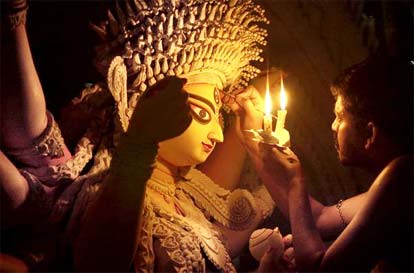 The festival
of the Goddess Durga in October is normally the high
point of the Bengali Hindu cultural calendar. But this year for
thousands of Hindu families in Bangladesh, there was no festival
and no rejoicing. Instead, gangs of Islamic extremists torched
their homes, raped women, poisoned ponds and attacked temples. The festival
of the Goddess Durga in October is normally the high
point of the Bengali Hindu cultural calendar. But this year for
thousands of Hindu families in Bangladesh, there was no festival
and no rejoicing. Instead, gangs of Islamic extremists torched
their homes, raped women, poisoned ponds and attacked temples.
At first, many explained the
savagery as a post-electoral revenge spree. Hindus in
Muslim-majority Bangladesh typically support the Awami League
party, which lost in October’s national elections. But the
scale and ferocity of the recent violence — which has affected
some 4 million people, according to the popular daily newspaper Janakantho
— is raising the specter of Talibanization in a country
usually regarded as a moderate Muslim land.
The new Bangladeshi government
under Prime Minister Khaleda Zia has deployed police and
paramilitary forces, mostly in cities, to quell the violence.
But rural areas have seen the most horrific attacks. Many
villages can be reached only by boat or on foot, and information
is slow to come out. Bangladeshi newspapers are beginning to
reveal the scope of the attacks:
• Nearly 200 women, ranging in
age from 8 to 70, were raped in one night in Char Fashion in
Bhola.
• The Faizal Vahini, an extremist Islamic group, ordered
minorities in Rauzan and Rangunia to pay a monthly “tax” in
order to be allowed to stay in their ancestral homes.
• Gopal Krishna Muhuri, a veteran freedom fighter and college
principal, was shot to death at his home in Chittagong while
reading a newspaper.
• Some 15,000 Hindus took refuge in the village of Ramshil
after their homes were destroyed and the women were abducted and
raped.
(source: AsianWeek.com
). Refer to
My
People, Uprooted: "A
Saga of the Hindus of Eastern Bengal"
- By Tathagata Roy
"The true picture is not
known to the outside world. It is a free for all so far it goes
to torturing minority Hindus. Women and property are the prime
targets - hundreds of Hindu women are hospitalised, many were
killed after being raped," Bidhu Bhusan Das, one of the
migrants from Barishal, who fled leaving behind his relatives
said.
(source: Indian
Express).
“Everyone is concerned about
the rights of innocent people in Afghanistan, but nobody wants
to know about what these Taliban are doing to Hindus in
Bangladesh,” the spokesman said. The campaign by the group
has, however, won support from Amnesty International. In a
report released on Dec. 5, Amnesty cited several instances of
Hindus being harassed in Bangladesh. “More than one hundred
women are believed to have been raped, often in front of their
husbands or fathers. A number of Hindu girls have been
abducted,” the report said. Amnesty asked Dhaka to take urgent
action to protect Hindus “following weeks of grave human
rights abuses.” Amnesty said: “Successive governments have
let down the Hindu minority in Bangladesh and the last two
months show exactly how vulnerable the Hindu community is. The
government must live up to its responsibility to protect all of
its citizens.” Though a government committee had been set up
to investigate the attacks, Amnesty said it was “not aware of
any progress it has made.” The Forum for Minority Rights in
Bangladesh says attacks on Hindus have picked up in retaliation
for the United States-led bombing of Afghanistan and the support
for it from India. It also stated that rapes, torture,
destruction of properties, temples and killing of Hindus have
been renewed since October.
(source: London
group protests atrocities against Hindus - Desi Talk).
Despite Bangladesh's assurances
to India to prevent attacks on Hindus, reports of atrocities on
the community continue to pour in from across the country. The
women's rights groups, however, said several persecuted families
have fled to India. Many others have taken shelter with
relatives. ``The minority Hindus have suffered harrowing
torture, including rape of teenage girls, by gangs of supporters
of the new Government,'' Ms. Rokeya Kabir, head, Nari Pragati
Sangha, told presspersons.
What
obviously frustrates the Bengali people in Bangladesh, India and
America is the near total lack of attention the world is paying
to their problems. The Palestine situation involving
only 1.6 million Palestinian continually occupies both the
world's press and diplomatic corps. Unless the world community
quickly turns its attention to the situation in Bangladesh, we
may see another catastrophic "war of liberation" such
as has laid waste to Ireland, Cyprus, Lebanon, Palestine, the
Punjab and northern Sri Lanka.
Ignored by the police,
outnumbered by the Muslims, Hindus in 1992 for the first time in
Bangladesh and Hindu history, performed Durga Puja without the
Deity present in physical form--only a ghot or khumba (a coconut
on a pot). In 1996, 20,000 pandals with Deities were set up
across the country, a few more than the previous year. That year
the Prime Minister Sheikh Hasina told devotees at the Dhakeswari
temple in Dhaka, "You will have the equal rights to
practice your respective religions with full dignity and honor
and none to interfere in it." But in 1997, the Organiser
newspaper from Delhi reported, "Gangs descended on puja
pandals and demanded jazia [the Islamic tax on non-Muslims] from
the puja organizers for performing 'idol worship' in Islamic
Bangladesh. Since the pattern of attack was the same throughout
Bangladesh, it is suspected that it was a well-planned
operation, especially because no police help was
available."
Senator Edward
Kennedy's report on 1971 Genocide of Hindus:
Senator Edward Kennedy in his
report gives the following details about the refugees from
Bangladesh in 1971. As of October 25, 1971, 9.54 million
refugees from East Pakistan had crossed over to India. the
average influx as of October 1971 was 10,645 refugees a day.
Hence the total refugee population at the start of Indo-Pak war
on December 3, 1971 was about 10
million. Sen. Kennedy further mentions that Government of India
had set up separate refugee camps for Hindus and Muslims
wherever possible, i.e., refugee camps of Hindus were located in
Hindu majority areas and similarly Muslim camps were located in
Muslim majority areas. The communal representation of refugees
was 80 per cent Hindu, 15 per cent Muslim and 5 per cent
Christian and others.
This means that 8 million of the
10 million refugees were Hindus. The other fact that
corroborates this is that when Sen. Kennedy asked several chief
relief officers in charge of refugee camps what was needed most
urgently their reply was "crematoriums".
(source: Hindus
Flee Bangladesh - Hinduism Today and Hindu
Human Rights and Repression
and atrocities against the Hindu minorities in Bangladesh and Senator
Edward Kennedy's report on 1971 Genocide of Hindus. Watch History
of Ayodhya - videogoogle.com. Refer to
My
People, Uprooted: "A
Saga of the Hindus of Eastern Bengal"
- By Tathagata Roy.
The selective amnesia of the
English media in India is simply breathtaking. There
appears to be a cardinal rule: Never publish anything that would
be in the least bit negative about Muslims in general and
Pakistanis in particular; or about Christians; or about Marxists
in general and the Chinese in particular. For instance, the Chinese
genocide in occupied Tibet is glossed over, and an
Indian English magazine's famous editor goes on a
China-sponsored tour there and writes a glowing account of how
life is beautiful.

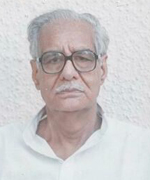
Shabana Azmi and Kuldeep
Nayyar and Human Rights Watch and the rest of the human rights
cottage industry were very quiet. The US Council on
International Religious Freedom was thunderously silent, too,
which shows yet again that their definition of 'religious
freedom' is rather unique: It means the freedom of American
cults to propagate their bizarre ideas.
***
The
atrocities committed by Islamic terrorists, including ethnic cleansing of Hindus in Kashmir, and attacks all over India
killing Hindus -- note the latest attacks just before Diwali and now on the Indian Institute of Science -- are trivialised by the
chatterati with the usual cant about how the terrorists are
misguided youths frustrated by lack of opportunities.
It appears axiomatic that to
the media, the only good Hindu is a dead Hindu.
This is why the attack on a
Hindu temple in Dera Bugti in Balochistan
in March last year got absolutely no coverage in the Indian
media and did not disturb Indian society in general.
Shabana
Azmi and Kuldeep
Nayyar
and Human Rights Watch
and the rest of the human rights cottage industry were very
quiet. The
US Council on International Religious Freedom
was thunderously silent, too, which shows yet again that their
definition of 'religious freedom' is rather unique: It means the
freedom of American cults to propagate their bizarre ideas.
(source:
Ignore
this genocide, we're secular - By Rajeev Srinivasan -
rediff.com).
Top
of Page
RNI
– Resident Non Indians
RNI - Resident Non Indian is a convert
to British imperialism through Macaulayte education.
Macaulay, a Member of the Council of India wrote a Minute in
1835 designing educational policy with the objectives: (a) to
create a class of subservient Indians to “be interpreters
between us [British rulers] and the millions whom we govern.”
Subservience required that these Indians fully accept British
[or Western] interests as legitimate and supreme to which Indian
interests have to be subjugated. (b) These subservient Indians
form “a class of persons, Indians in blood and color, but
English [Western] in taste, in opinions, in morals, and in
intellect.” They are fully alienated
from their own, especially Hindu, culture.
RNI
have three distinguishing characteristics:
(a)
'Acceptance' of Western racist-colonial-cum-imperialist
objectives. 'Acceptance' means that they believe in “the white
man's burden” to civilize the “vile native Hindoos” by
colonial-cum-imperialist policies; such as divide and rule;
severe punishment even genocide. Gandhi
was pained by the description of Hindus
“as vile” and wrote in his characteristic
forgiving style: “One of the greatest Christian divines,
Bishop Heber, wrote two lines [about Hindus] which have
always left a sting with me: [namely] 'where every prospect
pleases and only Man is vile.' I wish he had not written them.
b)
'Servitude' to Western interests, ideology, persons and values.
'Servitude' ensures that they don't question the validity of the
Western ideology and its superiority to all things 'small'; and
(c)
'Alienation' from their own heritage. 'Alienation' results in
“ethnic shame and guarantees their commitment to condemn and destroy
any thing that smells of Indian nationalism; specially Hindu.
RNI conduct confirms psychological scars from both colonial
and conversion impacts. Converts rarely achieve anything in
life. Because of the need to follow, they have little capacity
to think originally.
RNI imagine themselves to be “white” even though they
have brown skins and their grandparents were abused by the
imperialist cum racist colonial whites. They copy everything
Western -- dress, food, language. In their delusional state,
they behave as if they are “white colonialists,” frozen in
early 20th century, carrying on the “white man's burden” of
civilizing the “vile Hindus. ”Following white racist
colonial policy, they employ 19th century imperialist policy of
“divide and rule” by (a) dividing and denigrating Hindus
through the British use of caste system, (b) demonizing majority
community, culture and lifestyle that poses a threat to this
rule, and (c) creating and promoting minorities as a counter to
this threat.
(source:
India
Ascendant - by Romesh Diwan - sulekha.com). For
more refer to chapter on Greater
India: Suvarnabhumi and
Sacred
Angkor.
Watch
An
Invasion through Conversion
- videoyahoo.com
Top
of Page
Hindus,
the last of the Pagans?
Koenraad Elst
writes: The term Pagan, is generally used for people not
belonging to the Abrahamic religions: Judaism, Christianity and
Islam. Like its Germanic equivalent Heathen, the Latin word
Paganus literally means: rural. Christianity started as a
strictly urban movement, and only after it had taken power in
the Roman Empire in 313 A.D. did it start to conquer the
countryside.
Paganism
sees the sacred in manifestations of cosmic order, cosmic power,
cosmic beauty. The distinction which Hinduism claims is that
through yoga, it has refined human sensitivity and made man
receptive to subtler cosmic laws, such as the ultimate oneness
of all sentient beings, hence the need for daya or karuna,
compassion."
What
is called paganism, heathenism, and polytheism is in fact the
Natural religion of humanity. In areas where it has survived the
onslaught of anti-human ideologies with their ego gods, it has
retained its self-respecting name. In Japan it is Shinto, in
Taiwan. Confucianism And
Taoism, and in India as Hinduism.
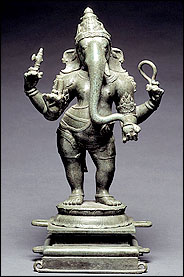 When
Christianity became the official religion of the Roman Empire
under Constatantine, the natural humanistic beliefs were
proscribed. With the spread of Christianity after the fall of
Rome, the story was the same across Europe, the Maghreb and the
former Roman Middle East. The high philosophy of the Greeks, the
ancient beliefs of ancient nations like the Armenians,
Assyrians, Egyptians, Celts, Teutones, Norse, Slavs, and last
of all, right up to the thirteenth century, the Lithuanians,
fell to the rapacious jaws of iconoclastic and dogmatic
Christianity. Under both the dominant Greek Orthodox and Roman
Catholic churches, manifestations of the natural religion was condemned as sorcery,
Satanism, and witchcraft. When
Christianity became the official religion of the Roman Empire
under Constatantine, the natural humanistic beliefs were
proscribed. With the spread of Christianity after the fall of
Rome, the story was the same across Europe, the Maghreb and the
former Roman Middle East. The high philosophy of the Greeks, the
ancient beliefs of ancient nations like the Armenians,
Assyrians, Egyptians, Celts, Teutones, Norse, Slavs, and last
of all, right up to the thirteenth century, the Lithuanians,
fell to the rapacious jaws of iconoclastic and dogmatic
Christianity. Under both the dominant Greek Orthodox and Roman
Catholic churches, manifestations of the natural religion was condemned as sorcery,
Satanism, and witchcraft.
India
is the spiritual mother of natural religion. Without India the
natural beliefs of humanity can never be fully realised.
Can the
pagans of Europe thus sit back and let happen in India what they
have taken almost two thousand years to throw off themselves?
These are not issues for the next few years, but ideas long
overdue for now. It must be understood that a renewed
fundamentalist church in India would threaten the physical
existence of neo-pagans of Europe. The
battle between rationalism and dogmatism is not yet over.
(source:
Hindus,
the last of the Pagans? - Hindu Human Rights.org
and
Who is a Hindu? - Koenraad Elst
p. 37 - 39 and An
European Pagan and Non Western Perspective – by Von
Christopher Gérard
Conversions have an unedifying
history. The Encyclopaedia Britannica
says, “Christianity from its beginning, tended towards an
intolerance that was rooted in self-consciousness. Christianity
consistently practiced an intolerant attitude in its approach
towards Judaism and paganism
as well as heresy in its own ranks.” The advent of
Christianity into entire continents, the Americas, vast parts of
Africa, some parts of Asia razed local cultures to the ground.
(source: Conversions!
- By Dasu Krishnamoorty - sulekha.com).
Top
of Page
Pagan Worship?
Catholics Protest Hindu Worship at
Fatima Shrine in Europe
 Fatima,
Portugal. June 15, 2004: HPI received a couple of reports
regarding the visit of a group of Hindus from Lisbon to the
famed Catholic shrine to Mother Mary at
Fatima. The first, dated May 22, reads in part:
"Last October The Portugal News reported on the Interfaith
Congress held at Fatima, one of Catholicism's most sacred sites,
where representatives of the world's leading religions allegedly
explored the possibility of opening the shrine to a whole
variety of faiths. While the newspaper received many letters and
emails congratulating it for reporting on the congress, it
was also criticized by some groups who claimed that Fatima would
remain exclusively Catholic. Fatima,
Portugal. June 15, 2004: HPI received a couple of reports
regarding the visit of a group of Hindus from Lisbon to the
famed Catholic shrine to Mother Mary at
Fatima. The first, dated May 22, reads in part:
"Last October The Portugal News reported on the Interfaith
Congress held at Fatima, one of Catholicism's most sacred sites,
where representatives of the world's leading religions allegedly
explored the possibility of opening the shrine to a whole
variety of faiths. While the newspaper received many letters and
emails congratulating it for reporting on the congress, it
was also criticized by some groups who claimed that Fatima would
remain exclusively Catholic.
The Portugal News' October report. Sixty Hindus
led by a high priest had travelled from Lisbon to pay homage to
the Goddess Devi, the
divinity of nature. SIC's reporter described how before leaving
Lisbon the Hindus had gathered at their temple in the city to
pray to and worship various statues of Hindu gods. Arriving in
Fatima the pilgrims made their way to the Chapel of the
Apparitions, where from the altar a Hindu priest led prayer
sessions. A commentary on the service was given by the TV
reporter who explained: 'This is an unprecedented unique moment
in the history of the shrine. The Hindu priest, or Sha Tri
[probably Shastri], prays on the altar the Shaniti Pa [probably
Shanti mantra--sahanavavatu...] , the prayer for peace.' The
Hindus can be seen removing their shoes before approaching the
altar rail of the chapel as the priest chants prayers from the
altar's sanctuary."
A report at fatima.org
is subtitled, "Another interfaith outrage blessed by shrine
rector." It is very strongly opposed to the Hindu visit and
reads, in part, "Saint
Francis Xavier said, 'All the
invocations of the pagans are hateful to God because all their
gods are devils.' Saint Francis Xavier wrote these words to
Saint Ignatius about the pagan religion of Hinduism. Francis
Xavier, writing from India at the time, merely restates the
truth from the infallible Sacred Scriptures: 'The gods of the
gentiles are devils.' (Psalm 95:5)
Yet on May 5, 2004 -- the Feast of Pope Saint Pius V --
the Little Chapel of the Apparitions at Fatima was allowed to be
used for a pagan Hindu ceremony.
One
of the Hindus is reported to have said that they go to Fatima
because there are many gods, and the gods have wives and
companions who will bring good luck. This is a blasphemy against
the Queen of Heaven as it places Our Blessed Mother on the same
level as some sort of 'wife' of a false god.
Thus, the Hindus did not even come to Fatima to learn of, or
take part in, Catholic prayer. Rather, they folded the holy
event of Fatima into their own superstitions and pagan myths.
It is reported that pilgrims who witnessed the event at
Fatima were scandalized, but Shrine Rector Guerra defended the
use of the Marian Shrine for pagan
worship."
The recent
Hindu ceremony at Fatima shows how fraudulent are Fr. Fox's
assurances. It also means that Fr. Fox and EWTN are guilty of
neutralizing the healthy resistance that Catholics should mount
against these interfaith outrages.
(source: Catholics
Protest Hindu Worship at Fatima Shrine in Europe
- hinduismtoday.com
and http://www.fatima.org/060304rit.htm).
For more refer to chapter on European
Imperialism).
Top
of Page
UK Hindus
irked over panel report
London (June
10):A serious controversy has erupted following the release of a
report by the House of Lords Select Committee on Religious
Offences from Westminster.
Many prominent leaders of the UK Hindu community
are now irked over a statement made by a member of the
Committee, the Earl of Mar and Kellie, that has been published
in the minutes of the oral evidence given by the Hindu community
to the Select Committee in November 2002.
During an oral evidence before the members of the Select
Committee, Ramesh Kallidai, speaking on behalf of the Hindu
Community, pointed out an article by the Christian
Medical Fellowship's Pastor Juge Ram that claimed that Hindus
were lost and spiritually blind and that Hinduism was a false
religion.
Responding to this statement, the Earl of Mar and Kellie said,
"They (the Christian Medical Fellowship) were not actually
telling any lies about the Hindu religion in the sense that they
were not actually putting out any false remarks which were
possibly going to distort people or mis-educate them."
A few leaders
pointed out that historically, the Houses of Parliament have
witnessed earlier attempts to vilify Hindus. Lord
Macaulay had made a statement in the 19th Century at the House
of Commons to say that all the ancient books of wisdom from
India could not compare with the one shelf of books from
England. "Dr J C Sharma, Director of the UK
Council of Hindus said, " I'm surprised that thinking like
Lord Macaulay's still exist in modern Britain."
(source:
UK
Hindus irked over panel report - hindustantimes.com).
For more on Lord Macaulay refer to chapter FirstIndologists).
Top
of Page
Heal
yourself first, your Holiness
Pope John II is peeved and perturbed but obsessively persistent -- about
his declared mission of harvesting umpteen souls in India.
According to an Associated Press report from Vatican City
published in The Times of India, Mumbai, on June 4, 2003,
he told a group of visiting Indian bishops
to 'courageously' proclaim the
gospel in India notwithstanding --
- 'Increased activity of a few Hindu
fundamentalist groups which are creating suspicion of the
church and other religions'
- 'Unfortunately, in some regions the
state authorities have yielded to the pressures of these
extremists and have passed unjust conversion laws,
prohibiting free exercise of the natural right to religious
freedom'
- 'State support has been withdrawn for
those in the Scheduled Castes who have chosen Christianity'
- 'People experience animosity,
discrimination and even violence because of their religious
or tribal affiliations.'
The
above 'revelations' by His Holiness indicate Frustration with a
capital F.
And it is understandable because despite the colossal money and
missionary effort pumped into this country since the times of St
Thomas some 2,000 years ago, the Christian population of
India remains below three per cent of the total. The
Muslims have always preferred the Koran to the Bible and the
Hindus have preferred Ganga jal to church water.
Reliable
reports say that attendance at churches in the West is
dwindling, that churches are being sold away. According to that
multi-disciplinary scholar, N S Rajaram, even in Rome, the home
of Christianity, church attendances are down to six per cent or
less. (The Organiser, May 4, 2003, page 4). So
why then is the Vatican not concentrating on retaining its flock
instead of trying to harvest more and more souls in India and
the rest of Asia?
(source: Heal
yourself first, your Holiness -
By Arvind Lavakare - rediff.com).
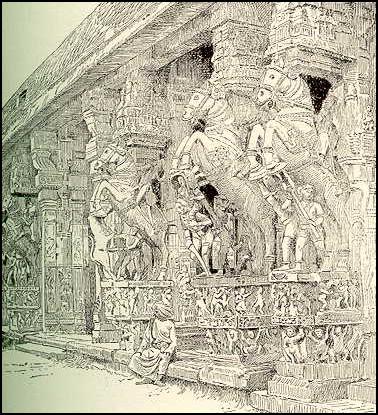 Does
the Pope want to convey the message that Indian citizens
following Catholicism should indulge in conversion even through
unfair means? Does he realise that by supporting conversion
through fraud, coercion or allurement, he is inviting violence
in Indian society? Does
the Pope want to convey the message that Indian citizens
following Catholicism should indulge in conversion even through
unfair means? Does he realise that by supporting conversion
through fraud, coercion or allurement, he is inviting violence
in Indian society?
It
is important to note that Christianity believes in one god, but
divides humanity into Christians and heathens.
They
believe that the elimination of heathens is inevitable for the
unity of the world. A couple of years ago, the Millennium Peace
Summit of the delegates of various religions of the world took
place in New York. A unanimous resolution passed by about 1,000
delegates said all the religions are equal and there should be
no violence in the name of religion.
Different
religions are different paths to the goal of realising the
Absolute Truth. The
resolution was only a reiteration of the Hindu doctrine, “Ekam
sadviprah bahudha vadanti”.
The
ink on the resolution had hardly dried when the pontiff gave his
assent to a 36-page report prepared by a committee of Vatican
bishops. The
report postulated that the non-Christian religions are gravely
deficient as they did not accept Jesus Christ as the only son of
god. Simultaneously, it
stated that the other Christian churches too have defects
because they do not accept the primacy of the Pope. The
idea of equality of all religions is, therefore, totally
unacceptable to the Church.
(source:
Losing
my religion - By Balram Mishra - hindustantimes.com June
24 2003).
Jaya raps
Pope's remarks on conversion
Chennai:
Tamil Nadu Chief Minister J Jayalalithaa condemned the statement
of Pope John Paul II, critical of the Anti-Conversion
law in Tamil Nadu. Jayalalithaa
told reporters that the Pope could be a religious head, but he
had no right to react to or criticise a legislation enacted by a
democratically-elected government in any state in India. She
also refuted the Pope's assertion that there was no religious
freedom in India. Asserting that there was indeed religious
freedom in the country, she said the law was only against
forcible conversions.
(source:
Jaya
raps Pope's remarks on conversion).
Remark
on Pope irks bishops
Chennai,
June 14: The
Tamil Nadu Bishops’ Council took exception to Chief Minister J
Jayalalithaa’s remarks against Pope John Paul II that the
pontiff had no business to comment on
anti-conversion laws enacted by democratically elected
governments in India.
“We,
the Catholic Bishops of Tamil Nadu, express our hurt over the
disrespectful criticism against the Pope by the Chief
Minister,” the council said. “As the worldwide leader of
Catholic Christians, he has the right to express his concerns
over the difficulties Christians face in certain parts of
India,” it said, adding the Pope had only raised his voice
against an “obvious violation of human rights regarding
religious freedom.”
(source: Remark
on Pope irks bishops - deccan chronicle). Watch
An
Invasion through Conversion
- videoyahoo.com
He
is upset. Understandably
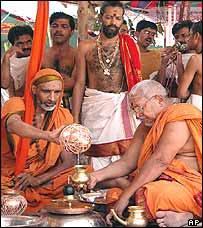 The
Pope has genuine problems. The Papacy
was born to convert the world to the only true religion,
Christianity. This Pope merely continues this 2000
year tradition to cleanse the world off ‘false faiths’. Turn
it exclusively Christian. The plans are backed by meticulous
research costing billions to stratify global societies, to trap
them into the only true faith. Like business plans they look at
the position now with a 25 year projection. The
Pope knows how cheap our market is for his harvest.
Perhaps, he will not mind if the high-cost US, not the low cost
Indian states, pass such a law. In India he can count heads for
God at 1/700 of the cost he has to pay in the US. When Jaya and
Modi pass laws to stop low cost head hunting will the Pope not
be upset? He will be and he is, understandably. The
Pope has genuine problems. The Papacy
was born to convert the world to the only true religion,
Christianity. This Pope merely continues this 2000
year tradition to cleanse the world off ‘false faiths’. Turn
it exclusively Christian. The plans are backed by meticulous
research costing billions to stratify global societies, to trap
them into the only true faith. Like business plans they look at
the position now with a 25 year projection. The
Pope knows how cheap our market is for his harvest.
Perhaps, he will not mind if the high-cost US, not the low cost
Indian states, pass such a law. In India he can count heads for
God at 1/700 of the cost he has to pay in the US. When Jaya and
Modi pass laws to stop low cost head hunting will the Pope not
be upset? He will be and he is, understandably.
(source:
He
is upset. Understandably - by S. Gurumurthy).
The holy
double-cross
The Niyogi
Committee which went into the activities of the
missionaries in the wake of tensions owing to conversions in
Madhya Pradesh had not minced words on such extra territorial
loyalties and what it portends for India. Here are some of the
observations:
...the idea of change of religion
as bringing about change of nationality appears to have
originated in the Missionary circles..the missionaries by
converting them give them a separate nationality, so that they
may demand a separate state for themselves.
The separatist tendency that has
gripped the mind of the aboriginals under the influence of the
Lutheran and Roman Catholic Missions is entirely due to the
consistent policy pursued by the British government and the
Missionaries. After a
villager is converted to Christianity, it is easy to alienate
his mind against his society as well as his country and State
...Christian convert changes his style of dress and assumes the
air of a foreigner.
The
supremacy of the Christian flag over the national flag of India
was also depicted in the drama which was staged in a school in
Jabalpur. The expression 'Jai
Hind' was substituted with 'Jai yeshu'..
Evangelisation
in India appears to be part of the uniform world policy to
revive Christendom for re-establishing Western supremacy and is
not prompted by spiritual motives. The objective
apparently is to create Christian minority pockets with a view
to disrupt the solidarity of the non-Christian societies, and
the mass conversions of a considerable section of Adivasis with
this ulterior motive is fraught with danger to the security of
the State..
The allegations by missionaries
that they are being harassed by Government officials is part of
the old established policy of the Missions to overawe local
authority and to carry on propaganda in foreign countries...And
the joke is on India on another count too. These franchisees of
faith are deemed minorities in this country while they have none
less than the Pope with all his mammoth army of minions, muscle,
money etc, etc at his disposal to back them. The law of the land
is acceptable only so long as it is subservient to their oath of
allegiance to the Vatican. Heads win, Tails win! What a
double-cross!
(source:
The
holy double-cross - By T R Jawahar - newstodaynet.com
June 20 2003). For more refer to Indians
Against Christian Aggression).
Top
of Page
Secularism',
Colonial Hegemony and Hindu 'Fanaticism'
Why, in a world where proselytizing is banned by virtually every
Islamic country, where Hindus have been virtually 'cleansed' out
of Pakistan, Bangladesh and the Kashmir valley, are Hindutvaadis
singularly such a key target of the world press? Why,
in a world where the Pope – the official head of the largest
Christian denomination of the world – talks about
“harvesting Indian souls” is it that there is
such a concerted effort by the popular media worldwide to
demonize aggressive Hindus – and only Hindus – as
'fundamentalists'?
That the effort by the media to
taint the emerging 'vocal' and 'public' Hindu as a fanatic is a
concerted one hits one smack in the face every time one reads
anything on this issue. By the choice of words (Gujarat
'pogroms'). by the selective focus on victims (Dalits, Muslims,
missionaries, but never a Kashmiri pandit or Hindu worshipper);
by the number and prominence of articles focused on 'Hindu
fanaticism' (front page news) versus 'other fanaticism' ('40
pilgrims gunned down” blurb half way down on page 26 of your
local newpaper).
A good way to contextualize this
battle is to look at the Universal Declaration of Human Rights
which was first adopted by the U.N in 1948 and is to this
day a standard bearer of what should constitute genuine
humanistic principles. The Christian worldview, with its
predilection to proselytize and convert others into its fold has
chosen to focus on only one element amongst all those present in
the three articles listed above; namely the freedom to change
one's religion or belief and made that the cornerstone of their
'religious freedom index'. In other words, those cultures and
societies that allow active proselytizing and conversion are
considered more 'religiously tolerant' and open societies.
With their fundamental belief in
the absolute uniqueness of Christ as compared to the rest of us
mortals and sinners, and thus the path to salvation, a believing
Christian has no choice but to consider all other
spiritual paths and religions as being confused at best and
minions of the devil at worst.
(source: 'Secularism',
Colonial Hegemony and Hindu 'Fanaticism-
by Arjun Bhagat - sulekha.com).
Top
of Page
Smelling
British sahibs learnt to bathe in India
The
first Englishmen who came to India as servants of the East India
Company were bewildered by many of our customs. Many of them
commented on, in their letters home, the habit, among certain
classes of the Hindus, of taking a daily bath.
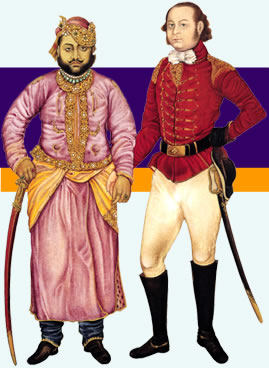 The
early factory-hands of John Company in India may have been
somewhat scandalized by the fact that
Hindu men and women of good families should not mind taking
their baths in full view of others, what they found
even more strange was that they should be washing their bodies
at all. The
early factory-hands of John Company in India may have been
somewhat scandalized by the fact that
Hindu men and women of good families should not mind taking
their baths in full view of others, what they found
even more strange was that they should be washing their bodies
at all.
For
the British, the process
of washing the body entailed lying prone in a tub half full of
hot water. And how many houses in pre-Industrial England could
have had metal containers large enough to accommodate grown men
and women, and, even more, the facilities to heat up enough
water? The
conclusion was inescapable. For most Englishmen of the 17th and
18th centuries, a bath must have been a rare experience indeed,
affordable to the very rich, who perhaps took baths when they
felt particularly obnoxious, what with their zest for vigorous
exercise, such as workouts in the boxing ring or rowing or
riding at the gallop over the countryside. What a sensual
pleasure it must have been to lie soaking in a tub full of
scalding hot water? But such indulgences were possible only
during the few weeks of what the English call their summer. For
the rest of the year, the water in the tub could not have
remained hot for more than a couple of minutes, and from
November through February must have gone icy cold as soon as it
was poured in. Brrrrr!
Then again, even those who thus
bathed their bodies a few times every summer seem to have been
careful to, as it were, keep their heads above water. In other
words, a bath did not also involve a hair-wash. Otherwise there
doesn’t seem to be any reason why they should have found it
necessary to coin—or adopt—a special word to describe the
process of bathing hair: shampoo, which, ‘Hobson Jobson’
tells us is derived from the Hindi word, champi, for
‘massage’. Why a word which normally described the process
of muscle-kneading should have been picked on to explain a
head-wash, is not at all convincing. It seems that the
Company’s servants used to send for their barbers every now
and then to massage their heads with oil and then rinse off the
hair with soap and water. So the head-champi,
became ‘shampoo’.
Which
may explain why G M Trevelyans’s
English
Social History does not so much as mention the
word ‘bath’. In the pre-industrial age it was, at best, an
eccentricity indulged in by exercise-freaks in the summer
months, and a head-bath was even rarer.
English royal court felt compelled to post in 1589:
"Let no one, whoever he may be, before, at or after meals,
early or late, foul the staircase, corridors, or closets with
urine or other filth."
But,
out in the tropics they must have gone about smelling quite a
bit. In fact, the Chinese, when they
first encountered the White man described him as "the
smelly one".
According
to William
Dalrymple, in his book White
Mughals: Love
and Betrayal in Eighteenth-Century India
"Indian women, for example, introduced British men in the
delights of regular bathing." And again:
"Those
who had returned home and continued to bathe and shampoo
themselves on a regular basis found themselves scoffed at as
‘effeminate’."
(source: Smelling
sahibs learnt to bathe in India - by Manohar Malgonkar -
tribuneindia.com).
***
Early Christians took a dim view of bathing. St. Benedict in the
6th century declared that "to those who are well, and
especially the young, bathing shall seldom be permitted."
In the early 1200s, St. Francis of
Assisi declared personal uncleanliness a sign of piety.
Europeans
have an interesting history of bathing. Long before they turned
Christian, Scandinavians and Germans bathed naked in lakes and
rivers during the summer months, and in public baths during the
winter. With the advent of Christianity nakedness came to be
associated with vulgarity, lascivious thoughts and, therefore,
sinful. St Agnes (d. 1077) never took a bath; St Margaret never
washed herself; Pope Clement III issued an edict forbidding
bathing or even wetting one’s face on Sundays. Between the
16th and 18th centuries, the practice of bathing in rivers was
frowned upon. In 1736 in Baden (Germany), the authorities issued
a warning to students against "the vulgar, dangerous and
shocking practice of bathing."
(source:
The
importance of bathing - by Khuswant Singh
- tribuneindia.com).
For
more refer to chapter on Greater
India: Suvarnabhumi and
Sacred
Angkor
Top
of Page
Hinduism - A
scientific religion
It is often said that Hinduism is
a Scientific religion. The Sanskrit word for Science is
'Shashtra.' Because
Shastra means a Science, or exact knowledge. Because of this
reason we find in Hinduism a number of Sciences or Shastras, as
Sanskrit calls them. When we say that 'Hinduism is a
Scientific Religion', it means more. It means that Hinduism
teaches certain Universal Truths and Laws of Nature, just like a
Science. A Universal truth does not change from Religion to
Religion, or from man to man or nation to nation.
Hinduism is Scientific, in
another sense too! It is a Science of mental development. It
prescribes certain mental disciplines
like Yoga, besides, Physical, Moral and Spiritual
disciplines which are necessary for every man for his
improvement irrespective of his race, creed, nation or status of
birth. It gives us a Technique. It gives us "The Science of
Living.'
The Bhagavad Gita is thus a
Universal Book, in the above sense. It gives a philosophy that
any man can adopt, without forsaking his "religion."
It gives certain exercises, like the Yoga exercises for
controlling the mind, controlling the breath, achieving
concentration and reaching a state of oneness with God (while
still alive, in the body). This is a Science. All can follow
this Science. It is thus even the people of the West, in America
and Russia have taken to the study of Yoga. Even "Christian
Yoga" has made its appearance too now a days! Similar is
Sufism which is like Advaita among the Muslims.
(source: Hinduism
in The Space Age - By
E. Vedavyas p. 127-132). For more information on Yoga
refer to chapter on Yoga
and Hindu Philosophy). For
more refer to chapter on Greater
India: Suvarnabhumi and
Sacred
Angkor
Top
of Page
The Call of India
 Many Westerners have traveled to India to be taught by
Vivekananda, Gandhi, Ramana Maharshi, Aurobindo, and a great
many others. It must be emphasized that this acceptance remains
valid only within the restricted boundary of the ashram itself.
The moment a foreigner emerges into the world again, he becomes
once more the “barbarian” he has never ceased in the Hindu
eyes, and reverts to being a pariah among pariahs. However, the
fact that so many Westerners still make the journey is not
without significance. It is a sign that
Hinduism, particularly in the form of yoga, is answering a need.
…Quite the contrary is true; “the call of the East” dates
back for centuries. From the Greeks to Marco Polo, from Vasco da
Gama to Dupleix and Warren Hastings, the West has never ceased
to dream of the treasures of Golconda, of the land of
spices….and of the wisdom of the
Brahmins. Many Westerners have traveled to India to be taught by
Vivekananda, Gandhi, Ramana Maharshi, Aurobindo, and a great
many others. It must be emphasized that this acceptance remains
valid only within the restricted boundary of the ashram itself.
The moment a foreigner emerges into the world again, he becomes
once more the “barbarian” he has never ceased in the Hindu
eyes, and reverts to being a pariah among pariahs. However, the
fact that so many Westerners still make the journey is not
without significance. It is a sign that
Hinduism, particularly in the form of yoga, is answering a need.
…Quite the contrary is true; “the call of the East” dates
back for centuries. From the Greeks to Marco Polo, from Vasco da
Gama to Dupleix and Warren Hastings, the West has never ceased
to dream of the treasures of Golconda, of the land of
spices….and of the wisdom of the
Brahmins.
One has to think, for instance, of the 18th
century craze for printed calicoes (the French called them
indiennes) and of the fact that the fundamental Hindu scriptural
texts actually became accessible in translation during the last
years of the same century. Their impact
was prodigious: the Bhagavad Gita, the Upanishads, and later the
Bhagavata-Purana produced a tremendous intellectual ferment
particularly in Germany and France.
Schopenhauer was fond of saying that
the first intuition of the work he was to do came to him while
reading these texts, of which he was later to say that they had
been “his life’s consolation.” Herder,
Schelling, and Hegel and the Romantics were passionately
interested in finding out all they could about Indian literature
and thought. If one wishes to form an idea of the fervor that
things Indian created in Europe at that time, then one has only
to read what Goethe, Hugo, Nerval,
Lamartine, Blake, Shelley, and many others had to say
on the subject. There was not an important work that did not
refer in some way to the Indian tradition.
(source: Yoga and the Hindu Tradition
- by Jean Varenne p. 186 - 187).
For
more refer to chapter on Greater
India: Suvarnabhumi and
Sacred
Angkor
Top
of Page
Gujarat
bans conversions through bribes, force
Gujarat's
state assembly passed a bill on Wednesday banning religious
conversions through use of force or bribery.
Officials
said anyone wanting to change religion in the state must now
seek the permission of district collectors.
The
Bharatiya Janata Party had promised in the election campaign
that swept it back to power last December a law to ban
conversions. The legislation carries penalties of up to three
years imprisonment and a 50,000-rupee fine.
Christians
in Gujarat condemned the law, saying it was targeted at their
religion and would deny people freedom to practise the religion
of their choice.
"We
will oppose this draconian law as it's against the spirit of
India's constitution which allows freedom to propagate and
practise any religion," said Samson Christian, a spokesman
for the All India Christian Council.
A
BJP government official said the law was not directed against
any religion. He said its aim was to ensure the right of people
to practise their faith free of any pressure to convert.
(source:
Hindustan
Times
- http://www.hindustantimes.com/news/181_221877,000900040003.htm).
Ayodhya
is a National Symbol – by N S Rajaram
Ram Janmabhumi is a national symbol,
while the Babri Masjid is a symbol of Babar's imperialism.
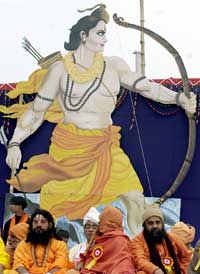 The
basic problem is that the concerned parties have avoided such
fundamental issues. Instead of trying to understand what Ram
Janmabhumi and Ayodhya mean to the Hindus, the Babri Masjid
advocates have been trying to present it as a dispute over a
piece of real estate and a structure in brick and mortar. Every
living nation has national symbols and Ayodhya is India's. A
young American - a former student of mine - recently asked me
why building the temple at Ram Janmabhumi was so important. I
asked her if Americans would let stand a mosque built by someone
like Osama bin Laden after demolishing Mount Vernon (George
Washington's home) or the Statue of Liberty. Similarly, the
Westminster Abbey in London is more than a Church, for it is
inseparably bound with English history and tradition. This is
how the people of India also look at Ram Janmabhumi: it is a
sacred spot for Hindus for historical, cultural and
nationalistic reasons - and not just because it is a place of
worship. Many like me who never go to a temple still hold it
sacred for cultural and historical reasons. The
basic problem is that the concerned parties have avoided such
fundamental issues. Instead of trying to understand what Ram
Janmabhumi and Ayodhya mean to the Hindus, the Babri Masjid
advocates have been trying to present it as a dispute over a
piece of real estate and a structure in brick and mortar. Every
living nation has national symbols and Ayodhya is India's. A
young American - a former student of mine - recently asked me
why building the temple at Ram Janmabhumi was so important. I
asked her if Americans would let stand a mosque built by someone
like Osama bin Laden after demolishing Mount Vernon (George
Washington's home) or the Statue of Liberty. Similarly, the
Westminster Abbey in London is more than a Church, for it is
inseparably bound with English history and tradition. This is
how the people of India also look at Ram Janmabhumi: it is a
sacred spot for Hindus for historical, cultural and
nationalistic reasons - and not just because it is a place of
worship. Many like me who never go to a temple still hold it
sacred for cultural and historical reasons.
From
Babar to bin Laden
To highlight this point: can the terrorist warlord Osama bin
Laden claim the ideological right to demolish the Venkateshwara
Temple in Tirupati or the Golden Temple in Amritsar and build
something else in their place to mark the triumph of his
'faith'? These, like Ram Janmabhumi, the Westminster Abbey, and
the Statue of Liberty, are not pieces of real estate that can be
bartered - or forcibly occupied and demolished.
When
put in this light, the Secularists will scream that Babar cannot
be compared to a terrorist warlord like Osama bin Laden. Hasn't
Nehru told us that Babar was both charming and tolerant - a true
'Secularist'? Like most things that Nehru wrote it is nowhere
near the truth. Babar was as much a religious fanatic as bin
Laden. He saw himself as a Ghazi - an Islamic warrior - on a
jihad to uproot infidelity. Jihad was Babar's ideology, the same
as bin Laden's. Here are his own words from the Babarnama:
"Chanderi had been in the
daru'l-harb [Hindu rule] for some years and held by Sanga's
highest-ranking officer Meidini Rao, with four or five thousand
infidels, but in 934 [1527-28], through the grace of God, I took
it by force within a ghari or two, massacred the infidels, and
brought it into the bosom of Islam ..."
This
was the real Babar - in his own words. When in a particularly
jovial mood, he composed the following poem happy for having
become a Ghazi (religious warrior):
For the sake of Islam I became a
wanderer;
I battled infidels and Hindus.
I determined to become a martyr.
Thank God I became a holy warrior.
This
was the man who gave India the Babri Masjid - at the spot held
sacred by Indians. He and his successors did not build it to be
a place of worship- they saw it as a mark of conquest.
Ideologically, Osama bin Laden is a modern day Babar - a Ghazi.
And yet Nehru praised Babar as:
… one of the most cultured and
delightful persons one could meet. There was no sectarianism in
him, no religious bigotry, and he did not destroy as his
ancestors used to."
(source:
Ayodhya
is a National Symbol - by N S Rajaram).
Watch History
of Ayodhya - videogoogle.com.
Top
of Page
Pillar
Found at Site of India Mosque
Lucknow, India - Archaeologists
have uncovered a broken pillar
with a carving of a lotus flower
at the site of a destroyed 16th-century mosque claimed by both
Hindus and Muslims, a government official said Tuesday.
The significance of the discovery was still
unclear, but officials hope it will eventually help settle the
impassioned debate about what was originally built on the site.
(source:
Pillar
Found at Site of India Mosque - By V J Bandopadhaya
- Associated Press).
Either
by instinct or consensus, India's uniquely secular national
press simply ignored the recent discovery of a broken pillar
with a lotus carving at the site of the erstwhile Babri Masjid
in Ayodhya. Such negation cannot, however, diminish the
significance of the finding. As senior Government administrator R
M Srivastava observed, "The finding of a pillar
and a multi-layered flooring suggests there exists a permanent
structure beneath the soil. At this point we can only say that
remains of a permanent structure lay buried in the soil. It
could be anything - a temple, a mosque or even a kitchen
structure" (Associated Press, April 1, 2003).
A
mosque is simply untenable. Even die-hard Islamists have not
claimed that a mosque existed at the site prior to the arrival
of Babar's general, Mir Baqi, who was appointed Governor of
Ayodhya. What is more, no medieval mosque has ever incorporated
sacred and popular Hindu motifs in its decorative patterns,
unless it was built by appropriating the materials of ransacked
temples.
Eminent historian Irfan Habib has
signalled the Muslim determination not to settle the dispute
honourably, by claiming that the excavations are a
"post facto rationalisation of what was done on December 6,
1992" (Indian Express, March 12, 2003). Habib claims that
archaeological finds are open to several interpretations. But
what is germane in the current dispute is only whether or not a
temple existed at the site prior to the erection of the Babri
mosque. As Ayodhya has from time immemorial been associated with
the story of Sri Rama, this would be regarded as convincing
evidence by all fair-minded persons.
(source:
Footprints
in earthly paradise - By Sandhya
Jain - dailypioneer.com April 8, 2003).
Top
of Page
Uddalaka
Aruni: The First Natural Scientist
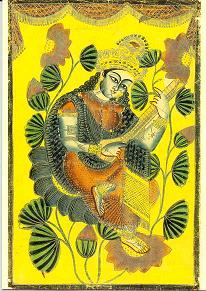 Mythological
literature of India tells us a story of the ocean being once
churned by the gods (devas) and demons (asuras). As a result
there emerged both nectar and poison. Mythological
literature of India tells us a story of the ocean being once
churned by the gods (devas) and demons (asuras). As a result
there emerged both nectar and poison.
In a sense,
this also happens in the philosophico-scientific tradition in
ancient India. Out of the ocean of the intellectual turmoil
there emerged a remarkable person whose teachings were both
nectar and poison. It was nectar for science and
science-orientation and poison for its opposite – for myths,
religion and the hangover of magical belief.
His name comes
down to us as Uddalaka Aruni. It has become an accepted
convention that science began in ancient Greece by one of the
reputed sages called Thales, who lived in the 7-6th
century B.C. But we come across in our early texts certain
trends of thought that are scientifically significant
and to a person – Uddalaka Aruni of the Gautama clan
– as having been the initiator of this new direction of
systematically investigating nature. The science intoxicated
Uddalaka must have been earlier than Thales whose actual
teachings moreover give us the impression of having been far
more profound from the viewpoint of science-potential than all
that we know about Thales.
But historians
of science remain unaware of the very name of Uddalaka Aruni. Internally, in his own country, his views are subjected to
almost endless distortions, energetic efforts being made for
centuries to make him appear as a religion-oriented extreme
idealist philosopher. Externally, most of the historians of
science have so far worked under the spell of what is often
described as Euro-centrism – that science is an essentially
European phenomenon.
J D Bernal goes to the extent of using the
rather exasperated expression “arrogant ignorance”
as
forming the main prop of this Euro-centrism.
With pronounced
bias for Euro-centrism, the otherwise admirable French
historian, Arnold Reymond claims that nature science owes its
origin to the peculiar genius of the Greeks, or more simply to
some kind of “Greek miracle”. Who then is the miracle maker
and what were his achievements? Since Thales himself leaves for
us nothing in writing and since we are confronted with all sorts
of floating legends about him – one example, wanting us to
believe that as an idle star gazer he fell into a well, another
insisting on his practical wisdom enabling him to earn a lot in
olive business. That on May 28 585 BC. He predicted an eclipse
of the sun which put an end to a battle between the Lydians and
the Medes. Not that he understood the real cause of eclipses.
How, then could he predict it?
(source: History
of Science and Technology in Ancient India - By Debiprasad
Chattopadhya chapter 7 p. 89-148). For
more refer to chapter on Greater
India: Suvarnabhumi and
Sacred
Angkor
Top
of Page
Tribal
Rage in Kerala
In much of the world, tribal societies have
been decimated, their cultures devastated, and their members
enslaved. Native Americans (Dee Alexander Brown's classic Bury My Heart
at Wounded Knee), Maoris (the 1995 film Once Were
Warriors), Australian aborigines (the 1978 film
The Chant
of Jimmie Blacksmith) have all been subjected to extreme
duress. The same thing has happened in India as well.
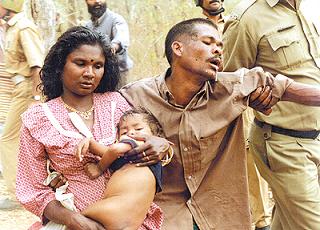

Decimation
of Tribal Culture in India
Watch
An
Invasion through Conversion
- videoyahoo.com
***
The
recent incidents at the Muthanga Wildlife Sanctuary in Kerala's
Wyanad district need to be seen in this context. Dispossessed
tribals, who have seen their lands and their way of life being
destroyed before their very eyes, are fighting back with the
only weapons they have available to them: agitations and
violence.
Kerala
has pockets of tribals in its dense Western Ghats forests who
have lived unmolested for centuries or even millennia. Recent
genetic data has suggested that some of them might go back to
the very first wave of out migrants from Africa: truly ancient
genes.
The sheer inaccessibility of the Western Ghats allowed tribals
to live there without outside interference, using sustainable
forest produce. Besides, I understand at least some of them were
quite capable of defending themselves: for example, the
anti-British campaigns of Pazhassi Raja were spearheaded by an
army of Kurichya tribal archers.
All
this changed in the last hundred years. It is the oldest story
in the book: land-grab and greed. Lowlanders, mostly from
Central Kerala, started encroaching onto the mountains.
This
invasion, which mirrors on a much smaller scale the white
conquest of North America and Oceania, is documented in S K
Pottekkat's novel Vishakanyaka ('Poison maiden') about
how the virgin forest is a dangerous adversary; and in O V
Vijayan's epic Thalamurakal ('Generations'), the old
feudal landlord finds one fine day that enterprising settlers
have taken over his lands by the simple expedient of bribing the
land title recorder.
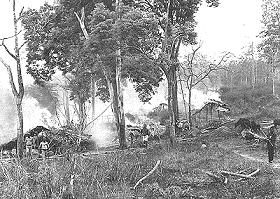 The
white Christian authorities (ruling directly in Malabar, and
with heavy influence on Travancore and Cochin) encouraged all
this, partly because white planters too were coming in and
setting up tea and coffee estates, and partly because the vast
majority of small-time settlers were Christians. The
white Christian authorities (ruling directly in Malabar, and
with heavy influence on Travancore and Cochin) encouraged all
this, partly because white planters too were coming in and
setting up tea and coffee estates, and partly because the vast
majority of small-time settlers were Christians.
If
you drive through highland districts such as Idukki or
Pathanamthitta, you will find innumerable white-washed churches
dotting the landscape; and hardly any non-Christian shrines. The
settlers are almost entirely Christian. In their enthusiasm,
some Christians actually set fire to the Sabarimala
temple in the 1950s: it was a nuisance to them in
their attempts to grab the surrounding forest. Interestingly,
Hindus in Kerala have held
forests in reverence, and seldom practiced
clear felling or slash-and-burn agriculture. There were many sarpa
kavu (sacred serpent groves) that were left untouched as
tributes to chthonic deities. Christian converts feel no such
compunctions. There are many tales of widespread
sexual exploitation of tribal women by plantation managers and
settlers. And there are also stories of forced conversion to
Christianity if tribals want to retain their jobs.
(source: The
Chant of Jimmie Blacksmith: Tribal Rage in Kerala - By
Rajeev Srinivasan -
rediff.com and Hinduunity.com).
***
Witness
in Staines murder case says she was sexually assaulted
A defence witness in the trial for the brutal
1999 murder of Australian missionary Graham Staines and his two
teenaged sons in eastern India testified that Staines had
sexually assaulted her. Hemalata Karua caused a tremor to shoot
through the district court when she charged that Staines had
told her that a "sexual relationship with him will benefit
her." Later, Staine's wife Glady had asked her not to
describe the incident to anybody, Karua claimed. Karua alleged
both Glady and Graham had invited her to visit a Manoharpur
"jungle camp" with her husband. She said the camp was
established to convert Hindus to Christianity. She, along with
her husband Yogendra Karua, went to Manoharpur on January 21,
1999, to attend the camp. The defence witness said first her
husband was converted to Christianity and then she followed.
Both were asked to have dinner where beef was served and when
she refused, Graham told her that it was part of the conversion
process. "He entered and asked me to close my eyes
and meditate. As I was meditating he laid his hands on my body,
I protested but he continued to persuade me saying physical
relationship with him would benefit me," she said.
(source: Witness
in Staines murder case says she was sexually assaulted -
yahoo.com).
Top
of Page
The
Horned God in Indian & Europe
'Six
thousand years ago almost two thirds of the human population in
Mexico, North America, in France, Egypt, the Middle East,
Afghanistan, India, Ceylon, Thailand, Tibet, China, Japan and
many other lands practised this science'. 'This science' being
magickal and yogic teachings. Doreen then offers an explanation
as to how so many cultures, separated by time and space, could
know of the horned Lord, magick and yoga. Not only must the
horned Lord be in the forest and the woods of an ancient past,
but also 'in the collective unconscious of mankind' , and
therefore still with each and everyone of us today.
(source:
http://www.geocities.com/indianpaganism/hornedgod.html).
Top
of Page
Adivasi - Indian Pagans
The word has been coined by Christian missionaries to
designate Indian tribals and is not an indigenous term attested
by Indian tradition and is a projection of the 19th
century racist, colonial perceptions, onto ancient Indian
history.
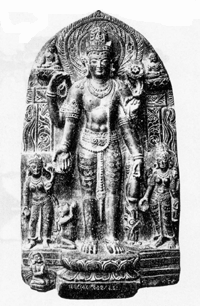 Christian missionaries and secularists have popularized the
belief that this is a hoary self-designation of the tribals
Contrary to widespread belief, this term is not indigenous. Christian missionaries and secularists have popularized the
belief that this is a hoary self-designation of the tribals
Contrary to widespread belief, this term is not indigenous.
It
is not listed in the 19th century Sanskrit dictionary
of Sir M. Monier-Williams, a
zealous Christian who would gladly have obliged the missionaries
if only he had been aware of the term. The
Sanskrit classics attest the awareness of a separate category of
forest-dwellers, but used descriptive terms for them, eg.
Atavika, from atavi, “forest.” The
assumption that the term “forest-dwellers” is condescending
is simply not correct from the viewpoint of the forest-dwellers
themselves, who hold their forests and the concomitant
life-style in high esteem, just as the Vedic people did.
Likewise, Mahatma Gandhi’s
indigenous term for the tribals, Girijan or “hill people.”
Christian authors feign indignation when such descriptive
terms are preferred. The imposition of
the term adivasi during the colonial period was itself an
instance of replacing facts of history with an imaginative
theory.
The message of the colonial terms, Adivasi was that the urban
elites who were waging a struggle for independence, could not
claim to be the rightful owners of the country anymore than the
British could. Likewise, it served to
present Hinduism, the religion named after India, as a foreign
imposition. The delegitimation of Hinduism as India's
native religion.
The only non-tribals considered aboriginal were the
Untouchables, supposedly the native dark skinned proletariat in
the Apartheid system imposed by the white Aryan invaders to
preserve their race. This racial view of history was nothing but
a projection of 19th century racist colonial
perceptions onto ancient Indian history, but it was
well-entrenched and put to good colonial use.
Thus, during the 1935 Parliament debate on the Government of
India. Act, Sir Winston Churchill
opposed any policy tending towards decolonization on the
following ground: “We have as much right to be in India as
anyone there, except perhaps for the Depressed Classes who are
the native stock.”
(source:
Who is a Hindu? - Koenraad Elst
Voice of India p.179-181). For
more refer to chapter on Greater
India: Suvarnabhumi and
Sacred
Angkor.
Watch
An
Invasion through Conversion
- videoyahoo.com
Top
of Page
But for India!
Once a gypsy told me, “We come from India.” India! What
an amazing appeal India has to the imagination of the world.
How, in one way or another, it has invariably played a deciding
part in the destiny of nations. Think what would have happened
if Napoleon had gone on to India! He felt the appeal. He
followed his star east, east…And then turned back to his doom.
But for India there would be no British Empire. How the old
Queen Victoria, loved that Empire of hers which she never saw!
India, round which the politics of the world revolved for
centuries, perhaps still revolve. Looking for India, Christopher
Columbus found America. Still looking for India, Vasco da Gama
rounded the Cape of Good Hope. To ensure a market for Indian
tea, England embarked on that disastrous policy which lost her
the American Colonies. She fought the French Emperor in Europe,
but would she have fought so desperately had not India also been
the prize? She held Gibraltar, she held Egypt, she intrigued
passionately for the Suez Canal; all for India.
 India has changed and civilized the habits of Europe. India has changed and civilized the habits of Europe.
Did
not baths and fresh linen come from India, at an epoch when
gentlemen went to Court holding pomander balls to their noses,
because human beings frankly smelt. She had altered
the thought of Europe. What a profound effect upon German
philosophy had been caused by Max Muller ‘s rediscovery of
Sanskrit, poor though his translations were!
Even Voltaire had
been touched by the thought of India. Through Persia something
of her thought had reached France.
(source:
The Power of India
- By Michael Pym
G. P. Putnam's Sons New York. 1930. p. 15-17).
Top
of Page
Eurocentric
and Bible-centered view of History
Textbooks throughout the world teach that civilization was
first invented in the Near East, in Sumeria and Egypt, and was
then developed further by the Greeks and Romans. From there it
passes on to the Europeans who developed modern civilization and
spread it throughout the world. By civilization is meant urban
life, writing, the use of metal and other factors of technology
and science particularly developed in the West. In this account
of history the rest of the world, including India and China, is
a sidelight. That Middle Eastern and European civilization was
not the largest or most enduring, nor was always the most
sophisticated, is forgotten. Nor did such cultures as Egypt and
Sumeria ever claim to be the first and they also looked to older
and to eastern cultures with reverence. Scholars would attribute
the main aspects of civilization to Mesopotamia or Greece, even
though the Mesopotamians and Greeks never claimed this.
The reason for this fixation on the Near East, Egypt and
Greece is simple. This is the history and roots of European and
Western civilization that developed out of a Greco-Roman basis,
which in turn was based on a Judeo-Christian basis whose earlier
horizon was Egypt and Mesopotamia. It is a projection of a
European model of civilization on the entire world. Scholars argue that the oldest archaeological remains are
from the Middle East, though archaeological evidence from India
is of the same antiquity, and many regions of the world have not
been adequately examined.
Desert regions, such as the Middle East, are favorable for
ruins to be preserved. Jungle regions and damper river plains,
such as are common in eastern India and in China, cannot easily
preserve such ruins. In addition, areas that have been
continuously inhabited will not preserve at one time and then
abandoned for some reason. Therefore, in the post-colonial
era we need to do serious rethinking about our Eurocentric and
Bible-centered view of history. Vedic references to kings,
dynasties, rivers, oceans and countries must be taken seriously.
We cannot simply assume them to be exaggerations because they
don’t agree with our current views. We
cannot imagine that the ancient Indians created such distortions
in order to deceive future generations of foreign scholars.
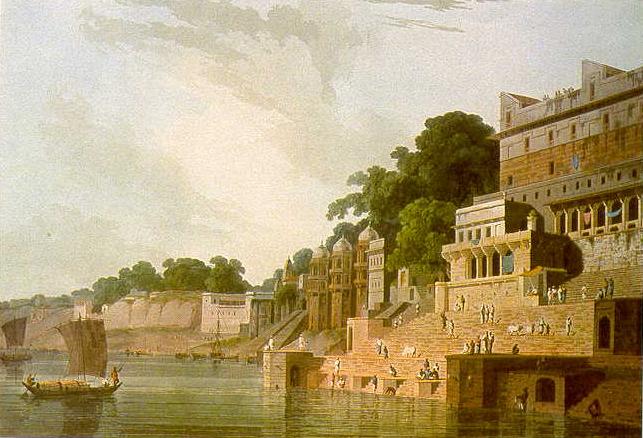
Ghat
at Benares on the Ganges
(image source: Picturesque India: sketches of
travels of Thomas and William Daniell – By J. Mahajan).
***
Recent studies indicate that since time immemorial, India’s
links were mainly with the East and Southeast Asia. This is
supported by similarities in climate (tropical-monsoon), floral
and fauna as well as the domestication history of the most
important animal of the Indian civilization – the cow, and
possibly the horse. India’s ties with the West and the
Northwest were secondary.
Vedic literature is the world’s oldest, largest and most
continuous literature, which by even the most reduced accounts
goes back at least 3500 years. It should have a great
civilization behind it. It cannot simply be an oral record of a
nomadic culture that left no other traces, as is the current
view. Ancient India, with its vast urban sites on the old
Saraswati River lauded in Vedic texts, provides such an
archaeological counterpart for this great literature. Both are
in the same geographical are and describe the same environment
and tradition. To keep the literature
and archaeology of the region apart is ridiculous.
(source: The Rig Veda and the History
of India - By David Frawley p. 9 -11).Watch
History
of Ayodhya - videogoogle.com.
Top
of Page
Hell,
Christianity and the Vedantic Way
As I have gotten older, I have
had a desire to find God and in a way I still do not understand,
I discovered Vedanta. . . the Vedas. I have no way of knowing
for sure what is the correct truth but there are several
philosophical problems that Vedanta solves which I believe are
unanswerable by Christian theology. Vedanta provides what seems
to me, answers that are more in keeping with the dictates of
logic and the concept of a loving God.
The first problem is: “What
happens to people that do evil in the name of good?” I once
read about Christian soldiers and missionaries in South America
in the 1500s. This was a diary in which one individual describes
giving the native people the chance to convert to Christianity.
The writer states, “Those that agreed, we baptized, and those
that did not, we burned at the stake.” Now the question is,
“What happens to such an individual?” Should he go to Hell
for eternal punishment when we was doing what he thought was
right? Or should he be taken to Heaven for a reward for service
to the Lord. It's a problem for Christians who believe that once
one dies, there is no further chance. Vedanta has a simple
answer. I do not know if it is true but it is sensible and does
not put one on the horns of a dilemma, as does the Christian
answer. The Vedic answer is “Reincarnation.” You come back
for another life. Thus the man who burned those who did not join
them will come back and learn a hard lesson about such behavior
in the next life.
In Christianity, life is a test
and you either pass or fail. In Vedanta,
life is a learning experience and if you don't learn
the first time, you come back to learn some more.
If you believe the Christian
doctrine of Hell, then ultimately you must conclude that no one
can be happy in heaven for how could someone be happy knowing
that their child or parent was suffering eternal torment? This
entire problem is avoided by Vedanta, which teaches: not a
loving god that turns vengefully when you draw your last breath,
but rather a God who is a teacher and you are His pupil who
ultimately learns the lessons of life. In this scenario, sin is
not an “infinite offense against God” but rather like
someone who after being warned, nevertheless puts his or her
hand in a burning flame. The individual is burned but God is not
angry. All the individual did was to hurt himself and hopefully
will learn a lesson. Sin is not offending God but removing
yourself from knowing God. You are the one hurt, not God. No
Hell. No Problem.
(source: Hell,
Christianity and the Vedantic Way - by Charlie Lawrence -
sulekha.com).
Top
of Page
Harvest of
bigotry?
Pope decries
anti-conversion laws in India
Vatican
City, June 3: Pope John Paul II today decried new
anti-conversion laws in some Indian states and urged
the Church in India to "courageously" proclaim the
Gospel.
John
Paul told the Indian churchmen that despite "the grave
difficulties and suffering" caused by the crackdown, the
Church in India must continue with evangelizing.
(source:
Pope
decries anti-conversion laws in India).
For more refer to Address
of John Paul II to the bishops of India on their ad limina visit
Tuesday, 3 June 2003).
Pope
criticizes conversion laws of India
Mumbai,
May 24: Pope John Paul II on Saturday told pastors from India
visiting the Vatican that he was concerned about laws in India
that require people to seek the permission of local authorities
before converting to Christianity.
According to Vatican Information Services, the official Vatican
agency, the Pope said, "It is most disconcerting that some
who wish to become Christians are required to receive permission
of local authorities, while others have lost their right to
social assistance and family support. Many others have been
ostracised or driven out of their villages. Unfortunately,
certain fundamentalist movements are creating confusion among
some Catholics and even directly challenging any attempt at
evangelisation."
Asking the visiting pastors not to allow such obstacles to
disturb their focus, the Pope said, "It is my hope that as
leaders in the faith you will not be discouraged by these
injustices but continue to engage society in such a way that
these alarming trends can be reversed." He added,
"Fundamental to sustained efforts of evangelisation is the
development of a local church which is itself poised to become
missionary. The commitment to follow Christ as a priest requires
the best training possible."
"Obstacles to conversion are not always external but may
occur within your own communities. This can happen when those of
other religions see disagreement, scandal and disunity within
our institutions. For this, it is important for priests,
religious and lay people to work together and co-operate with
their bishop, who is the sign and source of unity," the
Pope told the Indian pastors, adding, "I am pleased to hear
that in many of your dioceses the faithful frequently avail
themselves of the grace of the sacrament of
reconciliation..."
(Note:
Religious
Conversions are banned in Israel, Saudi Arabia, Russia, China,
Pakistan and other Islamic countries.
Opposition to conversion is a bid by
Indians to ‘preserve’ cultural pluralism in the face of the
proselytization of an intolerant religion).
***
Mahatma Gandhi
called religious conversions a fraud on humanity. "If
I had power and could legislate, I should certainly stop all
proselytizing". "I resent the overtures made to
Harijans."
"Stop
all conversion, it is the deadliest poison that ever sapped the
fountain of truth." Poverty doesn't
justify conversion.
(source: The
Collected Works of Mahatma Gandhi Volume
46. p.110 and Volume 61, p. 46-47 volume 64, p. 37 and 400
New Delhi 1968). Watch
An
Invasion through Conversion
- videoyahoo.com
Mahatma Gandhi stated
that: “proselytizing under the cloak
of humanitarian work is unhealthy, to say the least. It is most
resented by people here."
The resentment that
Gandhi alluded to has increased in India over the years, mostly
due to the persistence of religious conversions engineered by
Christian evangelists who derive their financial support from
foreign sources. Fundamentalist Muslims too have entered the
fray in recent years with substantive financial contributions
from Muslim countries interested in furthering the spread of
Islam in India. Some Hindu groups have resorted to
reverse conversions. All these trends are destructive to India's
time-tested culture of religious tolerance.
The
muteness of liberal Indian Christians, both in India and
overseas, is indeed surprising. In my opinion, most
Christians born and raised in India's diverse milieu are
innately liberal and pluralistic in their outlook. Therefore,
they should now raise their voices against the divisive
activities of the evangelical Christians, especially those that
are bankrolled by the Western churches. Failure to do so is
likely to do harm both to the religious freedom of India's
minorities and the territorial integrity of that nation. The
peripatetic foreign missionaries certainly have no stake in
preserving the territorial integrity of India. But,
Indians of all religions do. Besides, separatist movements in
Northeast India have been suspected of deriving support from
foreign missionary groups. Given the sordid history of Western
Christianity, eternal vigilance is indeed prudent....Otherwise,
India will remain a weak and soft State much to the glee of the
Western nations
(source: Indiacause.com
- forum and Proselytization
In India: An Indian Christian's Perspective - By C Alex
Alexander -sulekha.com).
For more, refer
to chapter on Politics
of Conversion and Vedas
and the Original Sin - By George Thundiparambil.
Italy's
Hindu Controversy - Swami
Yoganandagiri seeks official status for Italian-born Hindus in
the land of the VaticanSubhead - Hinduism Today September
1997.
Top
of Page
India's
contribution to World Unity
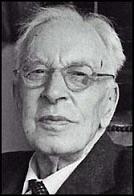 Arnold
Toynbee (1889-1975) the great
British historian. His massive research was published in 12
volumes between 1934 and 1961 as `A Study of History'. He
was a major interpreter of human civilization in the 20th
century. He has observed: Arnold
Toynbee (1889-1975) the great
British historian. His massive research was published in 12
volumes between 1934 and 1961 as `A Study of History'. He
was a major interpreter of human civilization in the 20th
century. He has observed:
"Christianity presents a
contrast to the religious and philosophies of Indian origin in
being, on the whole, exclusive minded and intolerant hearted.
Most Christians believe that their own religion has a monopoly
of truth and salvation; some Christians feel hostility towards
other religions; and some of these, again, have put this
Christian belief and Christian feeling into action in times past
by trying to wipe other religions off the map. In showing this
militant aggressive temper, Christianity is not unique. The same
temper is characteristic of all those living religions and
ideologies that have arisen in the section of the Oikoumene
that lies to the west of India. Intolerance is common to
Christianity, Islam, Judaism, and Zoroastrianism, and also to
the modern Western ideologies, that have sprung up in a
post-Christian environment: I mean Fascism, Nazism,
Communism.
But, on the whole, aggressive
militancy is, I am afraid, characteristic of all the religions
of the trans-Indus family, in contrast to the catholicity of
Indian religion and philosophy."
(source: One
World and India - Arnold Toynbee Indian Council for
Cultural Relations New Delhi. 1960 p. 56-57).
Top
of Page
West
'plunders' Indian therapy for quick profit
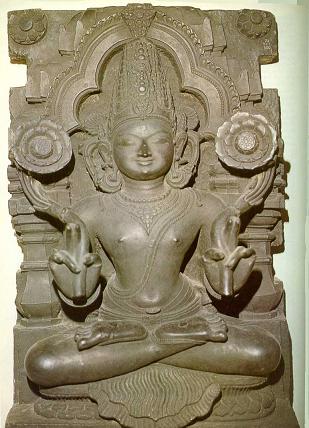 Cher,
Madonna, Prince Charles and Cherie Blair have eased the
pressures of fame by turning to Ayurveda, an ancient Indian
therapy which uses holistic healing techniques to reach the
parts that Western treatments cannot. Cher,
Madonna, Prince Charles and Cherie Blair have eased the
pressures of fame by turning to Ayurveda, an ancient Indian
therapy which uses holistic healing techniques to reach the
parts that Western treatments cannot.
But the
booming popularity of Ayurveda,
now offered in high street salons, spas and even GP clinics, is
worrying genuine Indian practitioners, who believe the West is
'hijacking' it for commercial gain.
Several
eminent professors from India will warn a conference in London
next Friday that Britain and America are diluting the philosophy
of Ayurveda. They claim counsellors, therapists and beauty
consultants are making millions from the name without basic
training, leaving patients out of pocket for no medical
benefits.
Gopi Warrier,
chairman of the Ayurvedic Company of Great Britain and the
British Ayurvedic Medical Council, said: 'Ayurveda
is being plundered. Its beliefs and practices are being hijacked
and the public are being conned.
'In
India, these remedies are used to cure poor people with genuine
ailments. It's a serious practice; you have to train for
five-and-a-half years to become fully qualified. But in Britain,
we are seeing people with a few hours' training pretending to
understand the full complexity of a system which has been built
up over many centuries.'
Warrier
added: 'Our remedies are being pilfered - there's no other word
for it - in order for spas and clinics to jump on a New Age
bandwagon and con people out of their money.'
Ayurveda, an intricate
system of healing that originated at least 6,000 years ago, is
based on the belief that people's constitutions fall into three
different types, known as Vata, Pitta or Kapha doshas.
Treatments will be tailor-made for their type, but diet and
meditation as well as massage will also form part of the
therapy. At its heart is the belief that there are energy forces
which cause illness if ignored.
(source:
West
'plunders' Indian therapy for quick profit -
Observer.co.uk).
Top
of Page
Archaeologist
too believes Ram temple existed at Ayodhya
The VHPs assertion through
scientific data that a Ram temple existed at the disputed site
in Ayodhya now has the backing of archaeologists who dug up the
place in the 1980s.
According to an agency story, one
of the architects who conducted extensive digging on a half-acre
area barely a metre off the site has said the excavations will
establish without doubt the existence of an ancient temple.
The observation of the archaeologist
is significant as the Allahabad High Court has ordered
excavations at the disputed site. The Archaeological Survey of
India (ASI) is already preparing its team to begin excavations
within a week at the site to ascertain the antiquity of
structures detected in radar tests in January. But even before
that archaeologists are saying that a
temple existed there. The structures we found dated back 3,000
years to 900 B.C., S.P.
Gupta, who was among the dozen archaeologists who excavated the
site from 1975 to 1980 has been quoted as saying by a news
agency. Gupta described pillars,
floors, brick walls and even statuettes uncovered by his team.
We covered them up with earth after our studies were complete,
he has said.
If these findings were barely a
metre away from the actual spot of dispute, then it is obvious
that the temple would have covered the disputed site too.
Another expedition was conducted in 1992 just before the
demolition of the Babri structure.
According to Gupta, 68
idols had been uncovered in that bout of digging and there were
certain indications of a sprawling temple complex that existed
before the Babri mosque.
(source: Newstodaynet.com
- March 7 2003). Watch History
of Ayodhya - videogoogle.com.
Top
of Page
Charles
Dickens and India
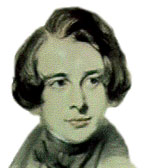 Charles
Dickens (1812-1870) English novelist, generally considered the
greatest of the Victorian period. Dickens's works are
charactericized by attacks on social evils, injustice, and
hypocrisy. Author of several books, including The
Pickwick Papers, David
Copperfield, A Tale of Two
Cities and Oliver Twist. Charles
Dickens (1812-1870) English novelist, generally considered the
greatest of the Victorian period. Dickens's works are
charactericized by attacks on social evils, injustice, and
hypocrisy. Author of several books, including The
Pickwick Papers, David
Copperfield, A Tale of Two
Cities and Oliver Twist.
Writing
about India after the
Mutiny on 4 October 1857 he said:
"I
wish I were commander-in-chief in India. I would do my utmost to
exterminate the Race... "
Nothing
less than extermination of the Hindus
would have satisfied Dickens....
(source: Raj:
The Making and Unmaking of British India - by Lawrence James
p. 283). Watch
An
Invasion through Conversion
- videoyahoo.com
Top
of Page
Giving
Savarkar his due, at last
Vinayak
Damodar Savarkar (1883-1966) - The
crown prince of revolutionaries. He organized Abhinav
(New) Bharat (India). The aim was to overthrow the British Raj
by any means necessary. He motivated many rich Indian men who
had come to U.K. for pleasure, as well as young students. The
men became experts in making hand grenades and using handguns.
They smuggled weapons into India for other revolutionaries.
Their chief targets were the British officials who gave orders
of torture of Indian patriots and people. In
1911 he was sentenced to life imprisonment on the Andaman Islands. This is the
site where whippings used to take place, all under the supervision of the
Anglo-Indian jailors, the room where Savarkar was locked up for so many years,
the room where prisoners were hanged three at a time and the hole through which
the bodies were removed outside of the prison wall to be cast into the sea, are
all there. It was here that Savarkar was incarcerated along with thousands of
freedom fighters, remains a symbol of indescribable colonial cruelty as also of
freedom-loving humanity's undying spirit of resistance.
Savarkar
took a pledge in front of the idol of Durga to liberate India
from British.
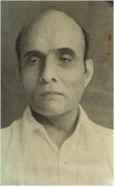 He
was the first Indian political leader to call for Swadeshi, and
the first Indian leader who publicly performed a bonfire of
foreign clothes (1906). Savarkar was the first barrister who was
refused the degree on account of his political line of thought
by the British Government. Savarkar was the first Indian leader
who cleared the myth British historians propagated and showed
that 1857 war of independence was not a mutiny of sepoys in few
regiments but a revolt of Indian population against the British
sustained over for 2 years. He
was the first Indian political leader to call for Swadeshi, and
the first Indian leader who publicly performed a bonfire of
foreign clothes (1906). Savarkar was the first barrister who was
refused the degree on account of his political line of thought
by the British Government. Savarkar was the first Indian leader
who cleared the myth British historians propagated and showed
that 1857 war of independence was not a mutiny of sepoys in few
regiments but a revolt of Indian population against the British
sustained over for 2 years.
Savarkar
also designed the first Indian flag to be unfurled overseas (by Madame
Bhikaji Cama (1861-1936) in Stuttgart Germany,
on August 22, 1907 at the International Socialist Congress,
where Britsh and French socilaists moved a resolution to call
India an oppressed country
He
was the first president of Marathi Sahitya Parishad (Council of
all Marathi writers and poets). He was the only Hindu leader
honored by SGPC (Sikh religious body)
C.
Rajagopalachari - Savarkar
to him was a national hero, a symbol of courage, bravery and
patriotism, an 'abhitirth' in the long battle for freedom.
Subhash Chandra Bose wanted
Savarkar to join the Congress after Savarkar' s release in
1937.
M. N. Roy wanted Savarkar to devote his life again to the
emancipation of India on Savarkar's own line of thinking.
Dr. Rajendra Prasad, Dr.Radhakrishanan, YB Chavan felicited
Savarkar on Dec.1960.
General Cariappa India's
first Commander in Chief (C-in-C) in Dec. 1962 after the defeat
of Indian Army in the China war said " Had India listened
to Savarkar and adopted his policy of militarization and and
prepared herself she would not have been placed in this
predicament.
Congress
MPs Violet and Joachim Alva (on Feb 5, 1966) wrote to Savarkar
"We humbly salute your unforgettable daring achievement -
Swimming the ocean and regaining freedom- will be long cherished
in the pages of freedom struggle"
S. A. Dange (Chairman of the
Communist party) said of Savarkar " He was one of the great
anti-imperialist revolutionary".
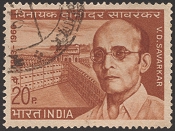 Prime
Minister
Indira Gandhi said " Savarkar was a great figure
of contemporary India and his name is by-word for daring and
patriotism. He was cast in a mould of a classic revolutionary
and countless people drew inspiration from him." After Veer
Savarkar's death, Mrs. Gandhi, the late Prime Minister of India,
said "Savarkar's death removes a great figure of
contemporary India. Prime
Minister
Indira Gandhi said " Savarkar was a great figure
of contemporary India and his name is by-word for daring and
patriotism. He was cast in a mould of a classic revolutionary
and countless people drew inspiration from him." After Veer
Savarkar's death, Mrs. Gandhi, the late Prime Minister of India,
said "Savarkar's death removes a great figure of
contemporary India.
In
1970 she had released a postal stamp recognizing the sacrifice and valor
of Veer Savarkar to the national struggle and she personally ordered a
documentary to be made on his life. She also donated Rs 11,000 from her personal
account to the Veer Savarkar Trust.
Defence
minister YB Chavan " Savarkar displayed a unique
combination of nationalism, bravery and social unity ".
M.
C.
Chagla (a Muslim, the then Education minister) said
" Savarkar was a great patriot and an illustrious son of
India" he added " anyone living in in this country who
loved and drew inspiration from the great heritage of India and
was loyal to India was a Hindu. Revolutionaries like Savarkar
created an atmosphere which made it possible for Mahatma Gandhi
to succeed. It would be unpatriotic if the people of India
failed to give Savarkar a prominent place in the history of
India".
On June 7, 1985, the British Parliament adjourned its
proceedings for an extraordinary reason. MPs paid tributes to a
person once the empire classified as its deadly enemy -Swatantryaveer
Vinayak Damodar Savarkar (1883-1966). They converged at the
auditorium in the Westminster's Annexe where a documentary on
Savarkar by Prem Vaidya (adjudged the best Filmfare documentary
for 1983) was screened. The book Five Stormy Years:
Savarkar in London by Dr Harindra Srivastava, the greatest
authority on Savarkar alive, was released.
On June 8, the 70 to 80 MPs (and ambassador of Greece)
converged at the India House in London that was the epicenter of
Savarkar's revolutionary acts in London between 1906 and 1911.
The chief guest was cricketer Sunil Gavaskar, who of course had
little to contribute to the occasion. 97-year-old Labour MP Lord
Fenner Brockway (1888-1988), in his impeccable style, said all
charges levelled against Savarkar by British Empire were
"completely baseless and fraudulent". He said that to
have a patriot like Savarkar was a matter of great pride for any
country.
What
an irony that the Indian Parliament had to lag behind the
Westminster by 17 years plus to venerate the volcano of
patriotism, Veer Savarkar. To compound the irony the opposition
boycotted the function on February 26 en masse
***
Installing
portrait of Savarkar in Center Hall of Parliament
No
party can have a monopoly over the interpretation of history.
No, not even the constantly evolving Indian Communists. However
it is ironic in the extreme that those denigrating Savarkar have
themselves emerged as the biggest revisionists of modern times.
The Indian Communists had abused Netaji Subhash Chandra Bose,
Mahatma Gandhi, Bhagat Singh et al in the strongest of words.
Savarkar
was too great to be hurt by the slings of these petty men and
women who resent him his rightful place in the Central Hall of
Parliament.
Nehru-Gandhi
family in the initial decades of independent India had sought to
create a halo to the exclusion of everyone else in the pantheon
of our nationalist heroes. The contribution of those anonymous
freedom fighters was not recorded by any historian while the
officially patronised hagiography centering around the Nehru
family made it out as if he was the lone warrior battling the
cruel Brits. As against his years spent in gilded jails, Savarkar
underwent unmentionable tribulations in the cellular jail `kala
paani’ in Andaman. A hall which
displays the portrait of Ambedkar, the creator of the
Constitution, along with that of Indira Gandhi, who virtually
killed it in 1975-77, (during the Emergency) cannot look very
incongruous should it also feature the portrait of Savarkar who
too represented a significant stream of the Indian nationalist
thought in the 20th century.
(source: Giving
Savarkar his due, at last
- M V Kamath - samachar.com Feb. 28 2003).
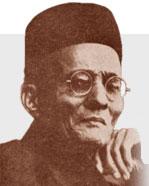 Bharatheeya
Vichara Kendram director P.
Parameswaran
has said that the anti-Savarkar vituperation of the Leftists was
an expression of their frustration. ‘‘While working for the
freedom of India from England, Savarkar had come in contact with
Lenin who was in exile there. Both of them discussed various
aspects of building a revolutionary movement against
imperialism. Savarkar and M.N.Roy were the two Indian
revolutionaries who rubbed shoulders with Lenin. ‘‘New
generation Communists may not know this fact but comrades like
Somnath Chatterji must be knowing. That is probably why he
silently approved the proposal for the Savarkar portrait in the
Central Hall of Parliament. Pranab Mukherjee must have been
aware of Jawahar Lal Nehru’s reference to Savarkar’s
contribution to the freedom struggle in the ‘Discovery of
India’ with special reference to ‘‘Volcano-The First War
of Independence’’. Bharatheeya
Vichara Kendram director P.
Parameswaran
has said that the anti-Savarkar vituperation of the Leftists was
an expression of their frustration. ‘‘While working for the
freedom of India from England, Savarkar had come in contact with
Lenin who was in exile there. Both of them discussed various
aspects of building a revolutionary movement against
imperialism. Savarkar and M.N.Roy were the two Indian
revolutionaries who rubbed shoulders with Lenin. ‘‘New
generation Communists may not know this fact but comrades like
Somnath Chatterji must be knowing. That is probably why he
silently approved the proposal for the Savarkar portrait in the
Central Hall of Parliament. Pranab Mukherjee must have been
aware of Jawahar Lal Nehru’s reference to Savarkar’s
contribution to the freedom struggle in the ‘Discovery of
India’ with special reference to ‘‘Volcano-The First War
of Independence’’.
‘‘The greatest charge levelled against Savarkar is
that he negotiated with the British while he was in the Andamans.
If so it was tactical. Savarkar has put it on record that while
engaged in a warfare one has to adopt different strategies at
different times. Shivaji and Mazzani were his ideals. Even
Shivaji, who was an inveterate foe of Aurangazeb, negotiated
with him and went to the Imperial Court accepting to be his
subordinate. But that was only a tactic. The war continued until
Aurangazeb met his grave in the battlefields of Deccan. History
does not blame Shivaji for his tactical retreat. Savarkar too
changed tactics but never diluted his ideals. ‘‘Gandhiji was
a saint among politicians. Savarkar was not and he did not want
to be one. He was a revolutionary statesman. Ideological
perceptions of Gandhiji and Savarkar were vastly different but
both were ardent nationalists and uncompromising idealists. To
extol one by condemning another is neither charitable nor
beneficial in the long run. The Leftists who throw stones at
Savarkar have been marginalised by history and stand accused for
their betrayal of Indian nationalists and freedom
movement.’’
(Please refer to
Six glorious epochs of Indian history -
Vinayak Damodar Savarkar and The
Indian war of independence, 1857 - By Vinayak Damodar Savarkar
and Swatantrya Veer Savarkar: The Eternal
Hero - By Dhananjay Kheer
Sangam Books Ltd, London,
2nd Ed, 1988, 569 pages ISBN 086132 182 0) and P.
Parameswaran criticises anti-Savarkar tirade by Leftists
- Newindpress.com March 4 2003).
Top
of Page
Hindu
Temple attacked in US
The
police and FBI are at a loss why a fire bomb was thrown at the Hindu
temple in St Louis, Missouri, on the night of
February 22. "It seemed to be a crude bomb or Molotov
cocktail, which set fire to the front door of the temple,"
Krishna Reddy, president of the temple trustee board, said.
The
police have registered a hate crime case, officials said. The
fire quickly burned itself out, charring a four-foot section of
the door.
The
attack happened after midnight, Reddy thinks. Temple officials
discovered the attack when they arrived to open the shrine the
next morning. "There
are four priests living in the compound a little behind the
temple. They did not hear anything that night," Reddy said.
The temple has no dispute with anyone, Reddy noted. There was an
attack on statues in front of the temple two years ago, he said.
Vandals cut parts of the statues, which were replaced later.
Established
13 years ago, it is one of the largest temples in the US serving
more than 8,000 families. Lord Venkatesa is the principal deity.
Maha
Shivratri celebrations are scheduled for March 1. "The
attack has not changed anything," Singla noted. All the
activities will go on as scheduled, he said.
(source: Hindu
Temple attacked in US
- Hindu
Vivek Kendra).
***
Distorted
picture of India and NRIs ?
"Gujarat - a Laboratory of
Hindu Rashtra, Fascism" is a typical psuedo title film
created to project a distorted picture
of India and NRIs. There are several Universities,
Organizations and Individuals (Professors) working to promote
this anti-India propaganda in USA and Canada.
So far this film has been shown
at Univ.of Maryland, North Carolina State Univ., Duke Univ.
Surprisingly, a partnership center of UNC-CH, NCSU and Duke have
sponsored this film. (What are their interests? They did not
reveal). We contacted NCSU, DUKE and UNC-CH asking; if they are
sponsoring the film, is it not their responsibility to verify
all the facts before the sponsorship? Though they replied to our
communication, they did not answer any of the 12 questions
raised by us. This film will
be screened at Georgia Tech University on Friday, April
11.
(source:
IndiaCause.com).
Top
of Page
Hindu mothers do not love their
babies like Western Mothers - says American Anthropologist
 Stanley N Kurtz, a social
anthropologist of India, recently received his Ph.D. in
anthropology from Harvard University and is currently a Fellow
of the Committee on Human Development and the Center for
Research on Culture and Mental Health at the University of
Chicago. He
is an NRO Contributing Editor, is a fellow at the Hoover
Institution with a special interest in America's
"culture war." In addition to his regular
contributions to National Review Online, Kurtz's writings on the
family, feminism, homosexuality, affirmative action, and campus
"political correctness" have appeared in Policy
Review, the Wall Street Journal, and Commentary. Kurtz
was also Dewey Prize Lecturer in Psychology at the University of
Chicago. Kurtz has published extensively on family life, child
rearing, religion, and psychology in various parts of the world
— particularly India,
where he did his field research. Stanley N Kurtz, a social
anthropologist of India, recently received his Ph.D. in
anthropology from Harvard University and is currently a Fellow
of the Committee on Human Development and the Center for
Research on Culture and Mental Health at the University of
Chicago. He
is an NRO Contributing Editor, is a fellow at the Hoover
Institution with a special interest in America's
"culture war." In addition to his regular
contributions to National Review Online, Kurtz's writings on the
family, feminism, homosexuality, affirmative action, and campus
"political correctness" have appeared in Policy
Review, the Wall Street Journal, and Commentary. Kurtz
was also Dewey Prize Lecturer in Psychology at the University of
Chicago. Kurtz has published extensively on family life, child
rearing, religion, and psychology in various parts of the world
— particularly India,
where he did his field research.
He
uses psychoanalysis to conclude that
Hindu mothers do not have “a Western-style loving, emotional
partnership” with their babies.
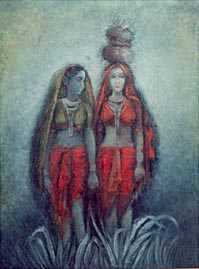 “The special relationship between the Hindu mother and her son
appears here as a variation on a distinctive Hindu pattern
rather than as a mere intensification of a style of intimacy
found in the West… Nursing is not therefore, an occasion
through which mother and child cement on an emotional union. The
child is frequently fed, yet the mother seldom lingers to mirror
the baby's satisfaction. Thus, while the child no doubt develops
a strong emotional attachment to the mother as a result of the
physical gratification she provides, the mother does not respond
by setting up a Western-style loving, emotional partnership.” “The special relationship between the Hindu mother and her son
appears here as a variation on a distinctive Hindu pattern
rather than as a mere intensification of a style of intimacy
found in the West… Nursing is not therefore, an occasion
through which mother and child cement on an emotional union. The
child is frequently fed, yet the mother seldom lingers to mirror
the baby's satisfaction. Thus, while the child no doubt develops
a strong emotional attachment to the mother as a result of the
physical gratification she provides, the mother does not respond
by setting up a Western-style loving, emotional partnership.”
(note: Perhaps
Mr. Kurtz should read about what Andrea Yates and
Susan Smith
did
to their children, both
who were
devout Christians, before using psychoanalysis on Hindu mothers). For more refer
to chapter Women
in Hinduism).
This is utterly false, namely, that Hindu mothers do not see
nursing the baby as opportunity to cement emotional union, the
way white women supposedly do. This kind of racial, ethnic and
cultural profiling and denigration has replaced what used to be
blatant racism. Today, this racism is justified as
“objective” research findings, and is especially dangerous
because many Indian scholars have sold out to join this
movement.
In yet another book, “All
the Mothers Are One, ”Stanley Kurtz has
constructed a new model for the psychology of Hinduism, based on
his studies into Indian social and family structures, and
interviews with devotees of Santoshi Ma. Claiming that Durga
symbolizes the castrating Mother Goddess, he has propounded the
Durga Complex to explain “the characteristically Hindu form of
conflicts over unconscious incestuous strivings,” in which
“castration symbolism at the most mature level represents
transformative self-willed sacrifice signaling the abandonment
of infantile attachments…”
To deny Hindus their sense of
individuality, he writes: “Their notion of the
divine knows neither boundaries of time, place, substance, nor
identity.” And therefore claims: “Individualism is built
into our psychic structure but not into that of the Hindu.”
Besides finding many technical flaws in his methodologies, Humes
criticizes his work severely as “a method which in the end
borders on racism: despite arguing for greater sensitivity to
cultural difference in psychology, “those people” over
“there” are actually all alike – but not like
“us”…Kurtz psychology excludes Hindu women…they are,
after all, “mommies” whose psychology can be dispensed with
in a few words and a note.”
 The new editor of the major 15-volume critical edition of
Mahabharata being published by The University of Chicago Press,
said at the Mahabharata Conference in Montreal, that MB is
“God's Genocide,” the main theme being “Krishna commanding
the destruction of mankind,” and that this should be the
overarching theme of the entire translation. So what do we have
here? Islamic scholars are busy trying to clean up the image of
Islam. On the other hand, Hinduism
scholars are trying the opposite -- appearing to demonize it,
and thereby causing, intentionally or otherwise, Hindu shame
amongst the youth. The new editor of the major 15-volume critical edition of
Mahabharata being published by The University of Chicago Press,
said at the Mahabharata Conference in Montreal, that MB is
“God's Genocide,” the main theme being “Krishna commanding
the destruction of mankind,” and that this should be the
overarching theme of the entire translation. So what do we have
here? Islamic scholars are busy trying to clean up the image of
Islam. On the other hand, Hinduism
scholars are trying the opposite -- appearing to demonize it,
and thereby causing, intentionally or otherwise, Hindu shame
amongst the youth.
History shows that genocides have been preceded by the
denigration of the victims -- showing them as irrational,
immoral, lacking a legitimate religion, lacking in compassion
towards others and love towards their babies, etc., i.e. not
deserving of the same human rights extended to white people. Notice
how these so-called practices of mothers are labeled as “a
distinctive Hindu pattern” per se. This
is also why “dowry murders” have been very aggressively put
on the dominant culture's agenda, to be prosecuted specifically
as “a Hindu problem,” even though the scholarship of Veena
Oldenburg and others clearly establishes that it is not a
“Hindu” problem.
(source: RISA
Lila - Hindu mothers do not love their babies like Western
Mothers - by Rajiv Malhotra -sulekha.com).
Top
of Page
Theory of Time (Kala-vada)
Erich Frauwallner (1898
-1974) author of The
History of Indian Philosophy, observes, “In the
mythological and the religious sphere there is the idea of Time
as the world-ruling power which brings forth everything and
again destroys it – immensely impressive and capable of
lasting development. In India, where in the attempts to explain
the world, philosophy assumed the lead, the things developed
differently.”
Time
in Indian and Christian Traditions
There are important conceptual differences about the notion
of time between the Indian and the Christian tradition. The
history of the cosmos unfolds in time, as do our own individual
histories. Time is an essential ingredient of all experience and
thought. One of the distinguishing features of human
consciousness is its awareness of temporal order – past,
present and future. We are in time – there was a time when we
were not, and there will be a time when we shall not be any
more. Kala (Time) is also Yama (Death). Awareness of this
dissolution of self is the source of our metaphysical anxiety.
What strikes us, first of all, is
the immense gulf between the two time scales.
Until a century ago, a majority of people in the Western world
– including secular scientists – accepted Archbishop
Ussher’s estimate of the age of the world – based on the
Genesis story – as 4004 BCE.
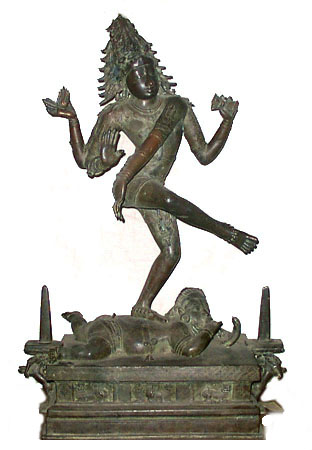 According to the ancient Indian
cosmology, one day for Brahma, the period of
existence of a universe, and one night, during which this
universe arrives at dissolution, are each equal to 4,320,000,000
human years. These daily creations and dissolutions of universes
will continue for a hundred years of Brahma. A state of
re-absorption then prevails for a Brahma century. After that
other gods will arise and other universes. There is a marvelous
story in the Brahmavaivarta Purana
(Krishna-janma Khanda, 47.50.161) that dramatically illustrates
the stupendous scale of Indian cosmology, and the
distinctiveness of the Indian attitude to time. According to the ancient Indian
cosmology, one day for Brahma, the period of
existence of a universe, and one night, during which this
universe arrives at dissolution, are each equal to 4,320,000,000
human years. These daily creations and dissolutions of universes
will continue for a hundred years of Brahma. A state of
re-absorption then prevails for a Brahma century. After that
other gods will arise and other universes. There is a marvelous
story in the Brahmavaivarta Purana
(Krishna-janma Khanda, 47.50.161) that dramatically illustrates
the stupendous scale of Indian cosmology, and the
distinctiveness of the Indian attitude to time.
In addition to the vastness of time scale, what is striking
in the story is the cyclical nature of time. Universes arise and
dissolve with their own Brahma, Indra, and other gods. Evil and
good increase and decrease in never ending cycles. The
serpent-cycle of time (the world-bounding serpent, sarpini,
biting its own tail) will go on revolving through ascending (usarpini)
and descending (avasarpini) periods forever. The world drama is
repeated again and again. There is nothing unique to our present
age (Kali Yuga), which is the last and the worst era because it
has the least amount of Dharma in the present cycle of the Maha
Yuga. The Maha Yuga spans a period of 4,320,000 human years,
equivalent to one thousandth part of a single Brahma day. The
present Kali Yuga is computed to have begun on Friday, February
18, 3102 BCE., and it will last for a period of 432,000 years.
The moral and social degradation of the Kali Yuga is
characterized in a passage of the Vishnu Purana: “When society
reaches a stage where property confers rank, wealth becomes the
only source of virtue, falsehood the source of success in life,
sex the only means of enjoyment, and when outer trappings are
confused with inner religion…”
However, this too shall pass. And, after the dissolution,
another golden age will begun – which will gradually
deteriorate. The wheel of time will keep on revolving –
without pause, without mercy, forever. The cosmic dance of Shiva
goes on – different steps heralding the creation and
destruction of the worlds. According to Indians, the world is
not progressing towards perfection under the direction of God
– in contrast to the typical Western view. The Judeo-Christian
evaluation of time is teleological. In one of the Puranic
accounts of Vishnu’s deeds in his Incarnation as a Boar, we
find the Boar,
carrying on his arm the goddess Earth whom he is in the act of
rescuing from the depths of the sea, passingly remark to her:
“Everytime I carry you this way…” Giordano Bruno, on the
other hand, was burnt at the stake by the Christian Church in
the 16th century for believing in the infinity of
worlds, which implied multiple betrayals and crucifixions of
Jesus. Thus, Primitive Christianity knows nothing of a timeless
God.
In India, time is itself an aspect of Brahman. ‘There are,
verily, two forms of Brahman, time (Kala) and the timeless (Akala)
– Maitir Upanishad. Vi. 15. ‘from time all beings flow, from
time they advance to growth; in time they obtain rest (they
disappear). Time is formed and formless too’ – Maitri
Upanishad vi. 14. In the Bhagavad Gita,
Lord Krishna,
an incarnation of Vishnu, says to Arjuna: ‘I am Imperishable
Time’ – BG10:33, and ‘I am the inflamed Time, the
destroyer of the worlds BG 11:32. Shiva – a major deity
of the Hindu pantheon – is given many names by his devotees.
Among them are Kala (time), Maha Kala (Great Time), Kala Rudra
(All Devouring Time), Kala Samhar (Destroyer of Time). The
timeless Brahman creates, sustains and destroys the multiplicity
of world through Brahma, Vishnu and Shiva (Mahesh) who are lords
over time, everlasting and endless.
(source: History
of Science and Technology in Ancient India - by Debiprasad
Chattopadhya volume II p. 47 and Yoga
and The Teachings of Krishna - by Ravi Ravindra
p. 219-230).
Top
of Page
Lord Ganesha
on Sandals at American Eagle Outfitters
American Eagle Outfitters, a
North American clothing retail chain is marketing flip-flops
(slippers) with an illustrated depiction of the revered Hindu
Lord Ganesa (Ganesh). It is clear to all of us that the
fashion, music, and marketing industries are significantly
influenced by the Hindu religion and the Indian culture.
However, American Eagle Outfitters has completely disregarded
Hindu and Indian sentiment in their pursuit to market a
successful product. It is important to point that while
freedom of
speech is a fundamental right, that freedom should not compel us
to defame the Hindu religion and ignore Hindu sentiments.
Companies have repeatedly disrespected the Hindu faith, and we
must all help to put an end to it. Taking action against
this issue is not difficult, write to American Eagle Outfitters,
express your anger about their carelessness, and boycott their
merchandise until they see it fit to discontinue the sale of
this product.


(source: Hindu
Unity.com). Let them know how you feel: AE.com
Customer Service:
1-888-232-4535 (24 hours a day) Click on this link to email AE: http://www.ae.com/contact/feedback_merchandise.htm).
Watch
An
Invasion through Conversion
- videoyahoo.com
***
Without
being hyper-sensitive, one may legitimately question why
Hindu gods alone are singled out for such honour. I do
not believe the incidents are innocent, harmless or accidental.
India has been associated with the spiritual quest since the
dawn of civilization; the dullest soul in the world knows the
esteem in which gods are held in this land. For a god as
universally renowned as Ganesh to land up beneath human feet is
to my mind a very intentional insult.
Hindus
have a special prayer seeking Mother Earth's forgiveness for
having to put their feet upon her sacred body. We cannot view a
god on footwear as part of secular evolution.
I
believe these cultural shock and awe tactics are related to the
consistent White Christian goal of eradicating all native faiths
and traditions in the world. What better way than by eroding the
sanctity of other gods? At some level, these
activities connect with last year's well orchestrated campaign
against a US-based charity, India Relief and Development Fund (IDRF),
titled "The Foreign Exchange of Hate: IDRF and American
Funding of Hindutva." Coming in the wake of the Gujarat
riots, it got good mileage internationally.
(source: Hindu
gods & gospel untruths - By Sandhya Jain - dailypioneer May
5 ' 2003).
Top
of Page
Gita a source
of inspiration to diverse minds
With the memorable words, “Close thy Byron, open thy
Goethe,” Thomas Carlyle, the sage of Chelsea, sent forth hits Sartor
Resartus to the English people, as the manifesto of an all round
Germanism. This German Kultur was the idealism of Kant, Lessing,
Fichte, Schelling and Hegel, the nearest European ally of Hindu
monism. It opened the Anglo-Saxon mind to the sense of the
infinite, of the majesty of the spiritual self, and electrified
the soul to the recognition of the “duties that lie nearest
thee.” The gospel that taught to “make thy numerator zero in
order that the quotient may be infinite” converted the
Bostonians of the trans-Atlantic world from Lockites into
metaphysicians. This “new thought” of the day was worshipped
by Parker and Emerson around the Dial. The New England
Transcendentalists thus became kinsmen of the Hindus (Infra, p.
115).
(source:
Creative India - By Benoy Kumar Sarkar
p. 111-112).
Salt
– a symbol of British oppression
Before East India Company rule, the
production of salt was free, for trade or private use;
it was also necessary:
R J Forbes
has noted how the nature of a vegetarian civilization is always
reflected in its profuse use of this almost basic commodity. The
Company first imposed a tax on the salt trade; later it made
salt a monopoly and increased the price. The corresponding
revenue was enormous – already in 1789, it totaled 7 million
rupees. In that year, production of it in secret was blessed
with penalties.
In 1883, W S Blunt wrote
in his diary:
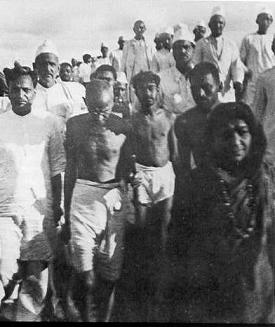 “The police are empowered to enter houses night or day and,
on their accusation of there being a measure of earth salt in
it, the owner of the house may be fined 15 rupees, or imprisoned
for a month. If the villagers send their cattle to graze
anywhere where there is a natural salt on the ground, the owner
is fined or imprisoned and the salt is thrown in heaps and
burned. The cattle are dying for want of it, and the people are
suffering seriously….In the Deccan, its pressure is more
galling, because natural salt lies on the ground and people are
starved of it as it were in sight of plenty. In several villages
which I passed the ryots told me that they had been reduced to
driving their cattle by night to the places where salt is found,
that they may lick it by stealth.” “The police are empowered to enter houses night or day and,
on their accusation of there being a measure of earth salt in
it, the owner of the house may be fined 15 rupees, or imprisoned
for a month. If the villagers send their cattle to graze
anywhere where there is a natural salt on the ground, the owner
is fined or imprisoned and the salt is thrown in heaps and
burned. The cattle are dying for want of it, and the people are
suffering seriously….In the Deccan, its pressure is more
galling, because natural salt lies on the ground and people are
starved of it as it were in sight of plenty. In several villages
which I passed the ryots told me that they had been reduced to
driving their cattle by night to the places where salt is found,
that they may lick it by stealth.”
Blunt notes that a kind of leprosy
had already begun to prevail along the coast, and that the
police continued to collect and burn all salt found in its
natural state above the ground. In 1883, the salt
revenue netted 6 million sterling for the British. In 1930, the
salt revenue netted the same authority 25 million pounds out of
the 800 million pounds still taken out of the country.
In 1930, too, when Mahatma Gandhi wished to begin a new
campaign of national civil disobedience, he began with salt: all
he had to do was to trek down 200 miles to the Arabian Sea,
there stoop and pick up a few grains of salt from the pans, and
the entire nation ignited.
(source: Homo
Faber: Technology and Culture in India, China and the West
1500-1972 - by Claude Alphonso Alvares p. 159).
For more refer to chapter European
Imperialism).
Little seems to
have been written by modern historians about the physiological
consequences of salt deprivation that might have
resulted from the high Salt Tax in British India. Writers on
famine in British India seem generally to have ignored salt
intake as a nutritional factor.
(source: http://www.rmoxham.freeserve.co.uk/salt%20starvation.htm).
Top
of Page
Nostradamus
and References to India
Century I,
quatrain 50
De l'aquatique triplicite
naitra,
D'uni qui fera le jeudi pour sa fete,
Son brut, los, regne, sa puissance croitra,
Par terre et mere aux Orient tempete,
In the land of three waters will
there be born,
One who will Thursday his day of worship make;
His strength, praise and rule all powerful grown,
On land and sea he will in Orient be tempest like,
It should be clear to anyone familiar with the geography of Asia
that 'born in the land of three waters' means born in a
peninsula surrounded by three seas. There is only one such
peninsula in the world - the Deccan peninsula or South India.
The three seas are: the Indian Ocean to the south, the Arabian
sea to the West and the Bay of Bengal to the east. In
Nostradamus time Orient meant India and the Near East and not
the Far East as is the case today, a part of the world largely
unknown to him.
There is yet another clue: le
jeudi pour sa fete. He will make (or follow) Thursday as the
holy day. Only Hindus regard Thursday
as holy. For Christians it is Sunday, for Jews
Saturday, and for Muslims, it is Friday. Upon seeing this and
other signs a well-known French scholar (Le Pelletier) observed
more than a century ago that most prophecies of Nostradamus
cannot apply to the Christian world alone.
(source: Nostradamus
and Beyond: Visions of Yuga-Sandhi - By N S Rajaram
p. 21- 25). For more on Nostradamus, refer to Glimpses
III).
Top
of Page
What's in a
Name? It is a matter of Hindu pride..
Coromandel
(Portuguese) -
Chola-mandlam
Allahabad – Prayag
Bombay – Mumbai
Poona - Pune
Madras – Chennaipatnam
Calcutta - Kolkata - Kali Ghatta (Kali's banks)
Indian Ocean – Hindu Mahasagar
Mt. Everest – Sagarmatha
Ahmedabad - Karnavati
Aurangabad - ?
Ganges - Ganga
Indus - Sindhu
Top
of Page
Idols from
Maratha period found in Belgaum
At least 18 sculptures and
inscriptions, which are said to belong to the 17th or 18th
Century A.D., are lying unprotected in Chorla village in
Khanapur taluk of Belgaum District. They are obviously under
threat from unscrupulous elements, and there are reports of
"strangers" visiting the village and taking
photographs of the sculptures, which are kept in a hut outside
the village on Belgaum-Goa Road.
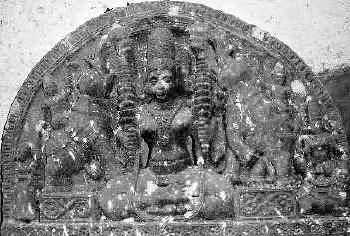 On
being shown photographs by this correspondent, J. Varaprasada
Rao, Deputy Superintending Archaeologist, Archaeological Survey
of India (ASI), Dharwad, who has jurisdiction over Belgaum,
identified the sculptures, inscriptions on black stones, and
idols of deities such as Sri Gajalaxmi,
Mahishsuramardini, Brahamani Mahamaya, Ravalnath (hero's
statue), and Betal (believed to be a form of Shiva) with a Shiva
Linga, as belonging to 17th or 18th Century (Maratha period). On
being shown photographs by this correspondent, J. Varaprasada
Rao, Deputy Superintending Archaeologist, Archaeological Survey
of India (ASI), Dharwad, who has jurisdiction over Belgaum,
identified the sculptures, inscriptions on black stones, and
idols of deities such as Sri Gajalaxmi,
Mahishsuramardini, Brahamani Mahamaya, Ravalnath (hero's
statue), and Betal (believed to be a form of Shiva) with a Shiva
Linga, as belonging to 17th or 18th Century (Maratha period).
The villagers are not aware of
the archaeological value of the sculptures, idols, and
inscriptions. However, these have been in the hut for several
decades, according to them. They plan to construct a temple of
Sri Gajalaxmi (also known as Kelabai and Sateri Devi), and
install the deity's idol. Sri Gajalaxmi is a widely revered
deity in the region (comprising Khanapur in Karnataka, north Goa,
and Sawantwadi in south Maharashtra). Dr. Rao says the
inscriptions imitate the "Kadamba style", and may be
easily mistaken as belonging to the 13th Century A.D. A careful
study shows that they are from the 17th or 18th Century,
according to him.
There may have been a
manufacturing centre in the region during the period of the
Marathas, as similar inscriptions have been recovered in the
neighbouring areas of northern Goa and Maharashtra, some of
which are kept in the ASI Museum in Goa. Findings from
archaeological excavations are universal treasures as they
provide evidence of heritage and culture. It is, therefore,
imperative to protect them for the benefit of future
generations. Dr. Rao says he will visit the place immediately,
and inform senior authorities of the ASI.
(source: Idols
from Maratha period found in Belgaum - By Vijaykumar Patil).
Top
of Page
Roberto
de Nobili's Brahmins
Roberto
de Nobili (1577-1656 A.D.) was an Italian Jesuit missionary who
had made it his life's ambition to proselytize the Hindus of
Tamilnadu. He was well versed in Tamil and possibly in Sanskrit,
though his understanding of many Sanskrit works was wrong, as
can be seen from his inability to distinguish between
"Brahman" and "BrahmA".
He followed every
custom of the Brahmins such as wearing of the tuft, sacred
thread, sacred ash or "vibhUti" and vegetarianism. He
initiated people into Christianity by giving them all
these Brahminical symbols. Of course, none of this means that he
had a great regard for Hinduism or its practices. Far from that.
He held them in utter contempt. He argued that a missionary
should follow these practices as that way he can easily
proselytize the heathen
Hindus.
It
is another story that we Indians never see their real motives.
We end up glorifying them; Tamilnadu government funds an
institute named after him.
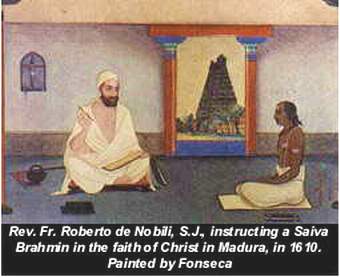 In
the book Roberto de Nobili on Indian Customs, edited
by the Jesuit priest S. Rajamanickam, we find many of the
letters written by Roberto de Nobili, on this subject matter. In
the book Roberto de Nobili on Indian Customs, edited
by the Jesuit priest S. Rajamanickam, we find many of the
letters written by Roberto de Nobili, on this subject matter.
Roberto de Nobili was interested in converting *only* Brahmins.
He was even critical of the church that would try to proselytize
other castes.
Roberto de Nobili argued
that if a Brahmin is converted, it automatically ensures the
conversion of many more members of other castes, as the Brahmins
are held by the society in the highest regard. He was also
against spending the missionary efforts in converting "Nambis"
and other non-Brahmin Saivite priests, for he considered them to
be of no social standing.
His methods were very effective for he single-handedly converted
30,000 Hindus, some of them Brahmins and others upper caste
Hindus, from Madurai alone.
He
argued that careful adaptation, even imitation, of Brahminical
customs is an integral part of a missionary's life. He said that
unless a missionary practises them, the Hindu society would look
down upon him with contempt. He said that whenever the
missionary preached to a person of lower caste, he immedietly
turned to a Brahmin for approval and if the Brahmin rejected the
Christian ideals, there was little chance that the lower caste
would convert. Au contraire, he argued, if a Brahmin is won over
and if he preached catechism, while still wearing his tuft,
sacred thread and Brahminical robes, the lower castes
automatically converted. And he concluded that once the heathen
Hindus are won over and once they are hopefully brought under
Christian rule (such as the Portugese), the local bishops can
purge such Hindu methods which had been adopted to convert the
very same people to Christianity.
If
deception is an art, then Roberto de Nobili was its practitioner
par excellence. Even though a follower of St.Xavier,
he wouldn't implement the barbaric methods of his
"saint", perhaps because he realized that such methods
wouldn't work in those regions where the Portugese didn't rule.
(source:
yahoogroups.com) Watch
An
Invasion through Conversion
- videoyahoo.com
Top
of Page
IIT - India's
premier institution - unmatched educational excellence
Attending the fete, Microsoft
chairman Bill Gates told the over 2,300 IIT alumni from all over
the United States, Europe and India, "India is a superpower
of human talent. Many brilliant IITians are working at
Microsoft." Sun Microsystems co-founder Khosla, now a
general partner in the venture capital firm Kleiner Perkins,
announced a donation of $5 million for IIT Delhi. Another ex-IITian,
advisory director of Goldman Sachs Avi Nash, donated $1 million
to the chemical engineering department of IIT Mumbai. Covering
the two-day celebrations, CBS' news program "60
Minutes" said, "The US imports cars from Japan,
whiskey from Scotland and smart IITians from India. In science
and technology, IIT undergraduates leave their American
counterparts in the dust."
(source: Students
for the world: India's dilemma - by Raju Bist).
It's about a university that may
be the hardest school in the world to get into. It's called IIT-
Indian Institute of Technology. A stunning percentage of CEOs
and innovators in the American high tech industry were graduated
from IIT. The government of India highly subsidizes the school
and the students who go there - it costs a kid just $700 a year.
But - and here's the rub - a full two-thirds of the students
leave India for jobs (many of the best come here) and never
return.
(source: CBS.com
- 60 minutes - Lesley
Stahl).
Top
of Page
Inferiority
Complex of Indians under the British Empire
The abject feeling of inferiority in India was the result of
a different set of circumstances, brought about principally by
total subjection to British rule. Unlike the Chinese, Indians
adapted at first to the roles that Empire required. The
psychological and moral effects of British conquests and Indian
subjection gradually spread and deepened. The
disappearance of the warrior element in Indian society (the
Kshatriyas) marked the disappearance too of basic components
such as courage and encouraged more superficial doubts among
Indians about their technical ability to do anything about the
overthrow of British rule.
British rule succeeded in making clear to the Indians
themselves that they lacked power, and it strengthened the
imperial opinion that qualities of passivity, weakness, and
cowardice were in fact norms of Indian culture and character. On
the other hand, Britons were led to think that the superiority
of English power and culture was an inherent rather than a
historical phenomenon. What is even more surprising, the
devaluation of Indian culture led to contempt for the Indian
physique.
“The physical organization of the Bengali
is feeble even to effeminacy. He lives in a constant
vapor bath. His pursuits are sedentary, his limbs delicate, his
movements languid. During many ages he has been trampled upon by
men of bolder and more hardy breeds….His mind bears a singular
analogy to his body. It is weak even to helplessness for
purposes of many resistance; but its suppleness and tact move
the children of sterner climates to admiration not unmingled
with contempt.”
This is a passage from John
Strachey’s India written
at the turn of this century and a standard training assignment
text at the time for Englishmen undergoing probation in the
Indian Civil Service.
“Within twenty years of the
deliberate exclusion of United Province Brahmins from the Bengal
Army because of their leading role in the rebellion
of 1857, the idea that Brahmins lacked fighting
qualities had become a prevailing opinion. “
Contrary to the Dutch in Indonesia, the Portuguese in Goa,
and the Spanish in the Philippines, the
English established themselves as a separate ruling caste:
like other Indian castes, they did not inter marry or eat with
the lower (native) castes. Their children were shipped off to
public schools in England, while they themselves kept to their
clubs and bungalows in special suburbs known as cantonments and
civil lines. The close contact with the caste system
strengthened British snobbery: the British civil service, with
its tradition of generalists and Brahmannical status of the
administrative class, is practically derived from the Indian
model.
The new Indian elite was the product
of English-created opportunities, and these opportunities were
more easily exploited if its members successfully embraced
Western, or more particularly, English ideas and manners.
Political power was sought to be added to traditional priestly,
commercial and literary power. Every
one of these new elites would be found in the port cities of
Asia: by mid-19th century, it was obvious that all of
them had already become fundamentally Westernized, and that it
would be these Westernized groups emerging in Calcutta, Bombay,
Madras, Karachi and Colombo who would inherit and shape South
Asia’s development after independence.
(source: Homo
Faber: Technology and Culture in India, China and the West
1500-1972 - by Claude Alphonso Alvares p. 186-191).
Top
of Page
Indian Temples and 19th
century British woman in India
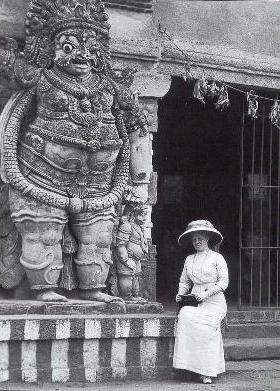
One 19th century guide book
advised women to tip local guides for not pointing out suggestive temple
carvings.
***
Indian temples were a popular destination for
British tourist, but escorts usually steered female sightseers away from the
erotic art featured on some temple facades. One 19th century guide book
advised women to tip local guides for not pointing out suggestive temple
carvings.
(source: What
Life Was Like in the Jewel of the Crown: British India AD 1600-1905
- By The Editors of
Time-Life Books.
p.156).
Top
of Page
Clean,
Modern Subway, Efficiently Built. In India?
NEW
DELHI, Jan. 23 — The trains arrive with a whisper, speak with
a computerized voice and at times are driven by women.
Passengers board quickly and quietly at stations that are clean
and airy, with graceful 30-foot arched ceilings and computerized
entryways.
In
a city of 14 million people that otherwise tends toward
controlled anarchy, it is a pride-inspiring marvel.
 But
already New Delhi's system is being hailed as a political,
managerial and engineering triumph. The first five miles of the
system opened on Dec. 24, on budget and on time — a rarity in
Indian public works projects.Not least, over the last four and a
half years, much of the sprawling system has been built in,
above and beneath some of the most densely populated square
miles on earth. But
already New Delhi's system is being hailed as a political,
managerial and engineering triumph. The first five miles of the
system opened on Dec. 24, on budget and on time — a rarity in
Indian public works projects.Not least, over the last four and a
half years, much of the sprawling system has been built in,
above and beneath some of the most densely populated square
miles on earth.
Much
of the credit for the project's success goes to a 70-year-old
longtime public servant who oversaw it, Elattuvalapil
Sreedharan, an engineer who has been hailed for
maintaining zero tolerance for
corruption and coming up with innovative solutions to
problems.
His
success has indirectly bolstered the stand of Indians who
advocate the privatization of government-run industries
criticized for waste, poor service and fraud. Instead
of creating a ponderous bureaucracy, he subcontracted most of
the construction work, hiring top Indian and foreign engineering
firms. Of the 20,000 workers involved in the project, only 400
are government employees. Older Delhi-ites marvel that Metro
workers do an extraordinary thing for notoriously bureaucratic
Indian civil servants: they quickly respond to complaints.
In
a feat of engineering, construction workers are building almost
seven miles of underground tunnels and nearly 32 miles of
above-ground track without closing major roads. Down the center
of busy avenues, precast 50-ton blocks of reinforced concrete
are being fashioned into an overheard track. Cranes lift
sections at night when there is little traffic. During the day,
tens of thousands of cars speed underneath as workers secure the
track.
(source:
Clean,
Modern Subway, Efficiently Built. In India? - nytimes.com).
Top
of Page
Terror's
Mask: massacre probe at Godhra

Burning
of Sabarmati train at Godhra carrying Hindu Ramsevaks
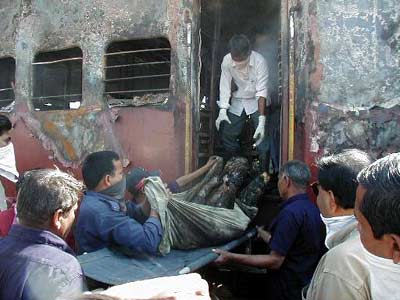
Recovering
charred bodies of Hindus
***
Blaming
the Hindu Victim: Manufacturing Consent for Barbarism?
It was a case of spontaneous combustion - says the ELM -
(English language Media)
This
'secularist' viewpoint was best exemplified by the comment Teesta
Setalvad made to The
Washington Post
of February 28. She said,
'Let us not forget the provocation. These people were
not going for a benign assembly. They were indulging in blatant
and unlawful mobilisation to build a temple and deliberately
provoke the Muslims in India.'
Setalvad
must be perverse to label karsevaks returning from Ayodhya as
those 'indulging in blatant and unlawful mobilization'.
Ashok Chowgule, president of the Vishwa Hindu Parishad,
Maharashtra region, counters in an email statement that:
'if
this provocation argument has to be accepted, then we have to
accept that the terrorist attacks of September 11 on the USA was
entirely justified because the terrorists have said that they
have been provoked by the policy of the USA'.
Do
you buy that, Ms Setalvad?
(source:
Blaming
the Hindu Victim: Manufacturing Consent for Barbarism -
By Rajeev Srinivasan and
Apartheid
in India - By Rajeev Srinivasan - rediff.com
and Why
'secular' history repeats itself - By Arvind Lavakare -
rediff.com). Watch
An
Invasion through Conversion
- videoyahoo.com.
Watch History
of Ayodhya - videogoogle.com.
***
On
February 27, 2002, coach S-6 of the Sabarmati Express was set
afire at Godhra railway station in Gujarat. Fifty-eight
passengers were killed, most of them VHP activists or Ramsevaks
returning from Ayodhya.
A throng of extremist Muslims, said to be 1,500 strong, was held
responsible. The act set off a retaliatory carnage, a
contentious election and changed the face of Gujarat's politics.
Igniting Murder: Umarji apparently directed the conspirators to
coach S-6; his arrest has shocked his followers in Gujarat
The
past year has been, truly, history. The original act, however,
is still a mystery. As many as 75 of the 121 accused have been
arrested by the Special Investigation Team (SIT) appointed by
the state Government. Yet it may actually be the latest arrest,
that of Maulana Hussein Umarji, 55, on February 6 that signals a
turning point.
Umarji, a prominent leader of the Deobandi-Tableegh Jamaat
movement in the Godhra region, has been charged with being part
of the conspiracy as well as obstructing investigations by
protecting the accused. The mob that burnt down compartment S-6
is believed to have been drawn from the local Ghanchi community,
zealous followers of the Tableegh Jamaat, a puritanical sect
that set up shop in Godhra in the mid-1970s.
The group has been bringing in crores of rupees, largely using
the hawala route. While this money has been mobilised from
overseas sympathisers to build mosques and madarsas, the
authorities suspect much of it may have been spent feeding
fundamentalism and instigating violence.
Besides implicating Umarji, Behera also referred to the role of
Razak Kurkur, another accused in the case. Kurkur's Aman Guest
House, located near the Godhra railway station, was virtually
the base of terror. At 9.30 p.m. on February 26, 2002, the
evening before the murders, six people held a war council at
Aman Guest House. They included Behera, Kurkur, Salim Paanwala,
alias Badam, and Salim Zarda. They decided to set the Sabarmati
Express on fire. The strategy was simple: at the slightest
provocation from the Ramsevaks, or even without one, begin a
full-fledged assault.
Some
questions remain unanswered though. Who told Umarji to target
coach S-6? Who
set up his funding network? In short, which organisation is
Umarji a front for? The families of the 58 victims would want to
know. So would the rest of India.
(source:
Terror's Mask - by Uday Mahurkar -
India Today February 24 2003).
58 pilgrims,
including 26 women and 12 children, returning from Ayodhya when
the Sabarmati Express carrying them was torched near Godhra
railway station and the subsequent sectarian violence. These
gory incidents shocked the nation to no end. Torching
alive innocent citizens is in total violation of Indian values
and traditions and is a blot on the fair name of this ancient
civilization. It is a gross violation of human rights of
innocent citizens who were roasted alive or brutally killed or
maimed for no fault of theirs.
(source:
Facts
Speak For Themselves: Godhra and After).
Top
of Page
Religious
Adherents of World Population
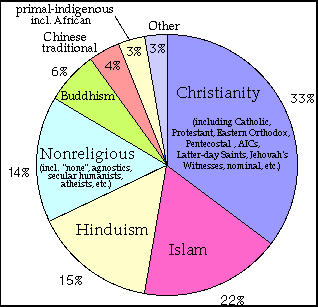 Christians
- 33% Christians
- 33%
Muslims - 22%
Hindus - 14%
Buddhist - 6%
Silks - .4%
Jews - .2%
Non-Religious - 12.7%
In modern
Western thought, the first writers to divide the world into
"world religions" were Christians. Originally, three
religions were recognized: Christians, Jews and pagans (i.e.,
everybody else).
After many centuries, with the increased Western awareness of
Eastern history and philosophy, and the development of Islam,
other religions were added to the list. Many Far Eastern ways of
thought, in fact, were given the status of "world
religion" while equally advanced religious cultures in
technologically less developed or pre-literate societies (such
as in Australia, Africa, South America, and Polynesia) were
grouped together as pagans or "animists," regardless
of their actual theology.
(source:
Adherents.com).
Watch
An
Invasion through Conversion
- videoyahoo.com
The
English writer G. K. Chesterton
(1874 - 1936) English author, critic, journalist, called America
a “nation with the soul of a church,” and every
president, at times, is the pastor in the bully pulpit.
The
Church of England is the official religion of the U.K. The U.S.
President-designate has to swear by the Bible and in 1983 the
American Senate unanimously voted to celebrate 1984 as Bible
Year.
Top
of Page
Henry
Kissinger and Indian Philosophy
On November 12, 1973 Kissinger met Mao Tse-tung. Kissinger
told Mao: "There is a sentimental
love affair between western intellectuals and India based on a
complete misreading of the Indian philosophy of life. Indian
philosophy was never meant to have a practical
application."
To which Mao's reply was: "It's just a bunch of empty
words". So much for Mao's understanding of India. Is it any
wonder then that he behaved the way he did? Nixon, Kissinger,
Mao and Chou En-lai were all haters of India. That India outwitted
them all only shows who really is politically savvy.
(source:
Hindu Vivek Kendra - http://www.hvk.org/articles/0303/255.html).
Top
of Page
The
Turk who loves the Gita
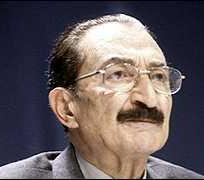 Bulent
Ecevit (1925 - ) the then Turkish prime minister, was
asked what had given him the courage to send Turkish troops to
Cyprus (where they still remain). His answer: he was fortified
by the Bhagavad Gita which
taught that if one were morally right, one need not hesitate to
fight injustice. Besides the Gita, Ecevit was also influenced by
Nehru’s Glimpses of World History. Bulent
Ecevit (1925 - ) the then Turkish prime minister, was
asked what had given him the courage to send Turkish troops to
Cyprus (where they still remain). His answer: he was fortified
by the Bhagavad Gita which
taught that if one were morally right, one need not hesitate to
fight injustice. Besides the Gita, Ecevit was also influenced by
Nehru’s Glimpses of World History.
Ecevit
first learnt Sanskrit at the
Ankara University. Later his love for poetry and philosophy led
him to Rabindranath Tagore. He learnt Bengali to appreciate and
later translate Tagore’s writings, including some poems from
Geetanjali. During his visit to India in early 2000, Ecevit
fulfilled his dream of visiting Shantiniketan. After
the 1971 military crackdown by the left, the Upanishads, Gita,
and Geetanjali were banned in Turkey.
Turkish prime
minister Bulent Ecevit's passage to India has far greater
significance than that of an Indophile scholar-statesman
realising his long cherished dream.
Mr Ecevit, had translated Tagore's Gitanjali and the
Bhagavad Gita into Turkish. Together
with Delhi and Agra, he has included a visit to Shantniketan in
his itinerary.
(source: The
Turk who loves the Gita -
http://www.telegraphindia.com/1021114/asp/opinion/story_1363040.asp).
Top
of Page
Absurd
secularism in India
It is normal
for children in other countries to be taught about their own
culture and civilisation and if it has not happened here already
it is entirely due to a distorted interpretation of secularism.
Ancient Indian civilisation and anything to do with it have
almost been taboo subjects in Indian schools. It is absurd that
the Ramayana should be part of the culture of Muslim Indonesia
but considered anti-secular in India.
Indian
astronomy, mathematics, systems of medicine, Sanskrit literature
are all areas in which schoolchildren are taught nothing. So,
though we have a satellite named after Aryabhatta few Indian
schoolchildren know much about him.
(source: By
Talveen Singh India Today
Date: July 3, 2000).
Top
of Page
Gujarat
and the secular overkill
That
the election results in Gujarat have irrevocably altered the
contours of secular discourse in this country is apparent not so
much in the exultation of the religious right but in the
response of professional secularists: They are either into
denial or are sheepishly sidestepping failure by resorting to
obfuscatory logic.
In
his book, Secular
Common Sense, Mukul
Kesavan talks about Hindu chivalry vis-a-vis Muslims,
wherein secularists among Hindus take it upon themselves to be
chivalrous towards Muslims. This unequal power relationship is
exacerbated by tokenism. The worst manifestation of such
chivalric tokenism is secular acquiescence in even obscurantist
practices among religious minorities. There
is no secular voice calling for liberal education, gender
equality and uniform laws for all citizens of the land.
The reason for this is the debilitating (and
misplaced) sensitivity secularists display towards the minority
community. Most ironically, this sensitivity actually obtains of
not
the feelings of the minorities per se, but of the secularists
need to reify their woolly notion of what is secular.

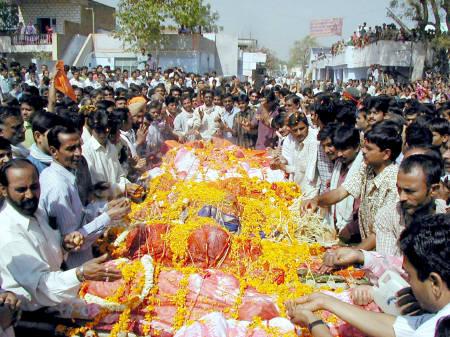
Mourning Hindu
bodies after Muslim mob burnt train at Godhra.
***
The
Left has for long appropriated the secular space in this
country, with other political parties (like the Congress)
enamoured by, and coopted into, its semantic jugglery. At a
meeting organised by historians in a Delhi University college, a
member vociferously attacked the Sangh Parivar for having played
up Godhra. They call the killing of 60 people a massacre, he
hahed. Just then, a student, who till then was willing, with 20
other friends, to join a march in support of communal harmony in
Gujarat, piped: A thousand Muslims were killed in Gujarat,
whereas the pogrom in Nazi Germany saw the extermination of six
million Jews. If the former can be called a pogrom, why can't
Godhra be labelled a massacre? This is the sort of
good work our professional secularists are doing across every
swathe of society. They are alienating peace-loving and caring
citizens and pushing them into adopting hardened positions..."
Religious
iconography has always been used to preach the message of
brotherhood and egalitarianism in this country. From Kabir to
Gandhi, that is the medium that has always struck a chord with
the masses. And whether they like it or not, it is not the
secularists but the ordinary people of India who can preserve
its pluralism. By denigrating and debasing these very people,
professional metropolitan secularists are playing into the hands
of the obscurantist forces within all religions.
(source:
Gujarat
and the secular overkill - Debraj
Mookerjee
pioneer.com).
For more refer to Godhra
and After: The Role of Media
and Let's
Call it Post-Godra Riots).
Watch History
of Ayodhya - videogoogle.com. Refer to
My
People, Uprooted: "A
Saga of the Hindus of Eastern Bengal"
- By Tathagata Roy
For
more on riots in India refer to
Anti-Sikh
riots a pogrom: says Khushwant Singh-
rediff.com
- Celebrated
writer and journalist Khushwant Singh on Wednesday, deposing
before the Nanavati Commission, probing the anti-Sikh riots of
1984 after the assassination of then Congress
prime minister, Indira Gandhi by her two Sikh
bodyguards, said that the police were mute spectators while
rioting was on.
Refer
to Sonia's
Apology Lip-Service, Say '84 Riot Victims - by Gaurav C.
Savant
Top
of Page
The
Indian President: More ‘Hindu’ than ‘Muslim’
 Avul
Pakir Jainulabdeen Abdul Kalam (1931 - )
Branded as "200 percent Indian" by his
colleagues and acquaintances, ‘India’s Missile Man’, the
noted missile scientist who catapulted India as a nuclear state
and influenced New Delhi’s policy to not sign the
Comprehensive Test Ban Treaty, has landed his biggest job yet.
He was elected as India’s 12th President and India’s third
“Muslim” head of state. Avul
Pakir Jainulabdeen Abdul Kalam (1931 - )
Branded as "200 percent Indian" by his
colleagues and acquaintances, ‘India’s Missile Man’, the
noted missile scientist who catapulted India as a nuclear state
and influenced New Delhi’s policy to not sign the
Comprehensive Test Ban Treaty, has landed his biggest job yet.
He was elected as India’s 12th President and India’s third
“Muslim” head of state.
The bachelor-scientist, dubbed by some in his home state of
Tamil Nadu as a “poonal podadha pappan” (Brahmin
without a sacred thread). This is because
silver-haired Kalam loves quoting from
the Bhagavad Gita as much as the Qur’an. The
reclusive Kalam is a vegetarian and a teetotaller, plays the
Rudra Veena (a string instrument) and writes poetry in Tamil.
During his first press conference after being declared a
presidential candidate, he chose to quote from the Gita rather
than the Qur’an.
Kalam begins
his day by reading from the Bhagwad Gita. Known for his fondness
for Subramania Bharati's poetry. He is
a self-confessed Ram Bhakt.
Kalam
already has lofty visions for India - freedom, development and a
keen desire that India should have global influence. “Unless
India stands up to the world, no one will respect us. In this
world, fear has no place ... Only strength respects strength,”
said Kalam after India conducted the 1998 nuclear tests that won
him the country’s highest civilian honour, the Bharat Ratna.
***
"In
3000 years of our history, people from all over the world have
come and invaded us, captured our lands, conquered our minds.
From Alexander onwards. The Greeks, the Portuguese, the British,
the French, the Dutch, all of them came and looted us, took over
what was ours. Yet we have not done this to any other nation. We
have not conquered anyone. We have not grabbed their land, their
culture, their history tried to enforce our way of life on them.
Why? Because we respect the freedom of others."
"Why
is the media here so negative? Why are we in India so
embarrassed to recognize our own strengths, our achievements? We
are such a great nation. We have so many amazing
success stories but we refuse to acknowledge them. Why? We are
the second largest producer of wheat in the world. We are the
second largest producers in rice. We are the first in milk
production. We are number one in Remote sensing
satellites."
(source: 'Three
Visions For India'
- by Avul
Pakir Jainulabdeen Abdul Kalam - outlookindia.com). For
more refer to chapter on Greater
India: Suvarnabhumi and
Sacred
Angkor
Top
of Page
Why
Gandhi was not awarded Nobel Peace Prize
Mahatma
Gandhi
(1869-1948), the greatest icon of non-violence, was
nominated for the Nobel Peace Prize five times, even
posthumously in 1948, as revealed by the diaries of former
members and chairpersons of the Nobel Committee reveal.
In
fact, when the fifth nomination got mired in technicalities as
there was no precedent of giving away the award posthumously,
the Commmittee took the unusual step of not awarding the Peace
Prize for anyone.
The
entries in the diaries make startling revelations regarding the
thinking of the Nobel Committee on awarding the Prize to Gandhi.
One such fact is that in 1947, he
was not considered because he was a ''patriot''.
Gandhiji
personified non-violence in the twentieth century and was the
most natural choice for the Nobel Peace Prize. But, still the
Nobel Peace Prize eluded him. Many questions have been raised on
the issue, but there have been no convincing answers.
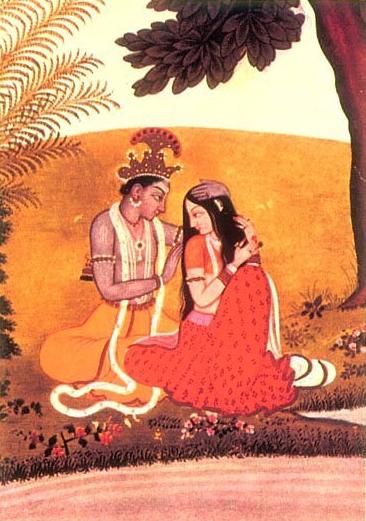
***
Was
the horizon of the Norwegian Nobel Committee too narrow? Was the
committee unable to appreciate and take cognisance of the
struggle for freedom among non-European people? Or were the
Norwegian committee members perhaps afraid to award the Prize,
which might be detrimental to the relationship between their
country and Great Britain, at that time?
"Friends
of India" associations in Europe and the US at that time
were advocates of Gandhi's name for the Nobel. In 1937, a member
of the Norwegian Parliament Ole Colbjornsen (Labour Party),
nominated Gandhi for that year's Nobel Peace Prize.
However,
the Committee's advisor, Professor Jacob Worm-Muller, wrote a
rather critical report on Gandhi. He admired Gandhi as a person
but was critical of him as a statesman.
He
wrote, "He is, undoubtedly, a noble and ascetic person - a
prominent man who is deservedly honored and loved by the masses
of India...", adding that there were, however, "sharp
turns in his policies, which can hardly be satisfactorily
explained by his followers... He is a freedom fighter and a
dictator, an idealist and a nationalist. He is frequently a
Christ, but then, suddenly, an ordinary politician."
(note:
Nobel peace prize were given to Yasser Arafat and de Klerk -
source: sifynews.com
Jan 20'03).
Top
of Page
Non-Resident
Nataraja
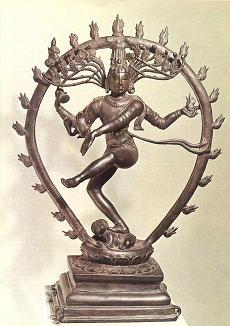 When
the
American art collector Norton Simon paid one million dollars to
buy a stolen 10th-century bronze Nataraja in 1973, he certainly
had no idea that it was so much money down the drain. For when
he sent the idol to the British Museum for repairs, it was
impounded as stolen property by the Scotland Yard, acting under
pressure from Indian officials. A protracted litigation followed
during which Simon pleaded "innocent purchase".
Finally an agreement was reached whereby the Norton Simon
Foundation in Los Angeles was allowed to keep the idol for 10
years until 1986, after which it was reinstalled at its original
place of residence, the Sivapuram temple in Tamil Nadu’s
Thanjavur district. When
the
American art collector Norton Simon paid one million dollars to
buy a stolen 10th-century bronze Nataraja in 1973, he certainly
had no idea that it was so much money down the drain. For when
he sent the idol to the British Museum for repairs, it was
impounded as stolen property by the Scotland Yard, acting under
pressure from Indian officials. A protracted litigation followed
during which Simon pleaded "innocent purchase".
Finally an agreement was reached whereby the Norton Simon
Foundation in Los Angeles was allowed to keep the idol for 10
years until 1986, after which it was reinstalled at its original
place of residence, the Sivapuram temple in Tamil Nadu’s
Thanjavur district.
The
happy ending of the Sivapuram Nata-raja saga is one that evokes
hope among those concerned about the fate of Indian antiquities.
But the very fact that a saga is there to be told reflects the
ease and impunity with which art thieves have been steadily
depleting the Indian countryside of the treasures it is strewn
with—bronze Natarajas from the Chola period being only one
among them.
Coveted idols
The
Cholas were a powerful South Indian dynasty who ruled over half
of India between the 9th and 12th centuries from their base in
Thanjavur in today’s Tamil Nadu. They also controlled a
sea-borne empire that extended to Sri Lanka and as far as
Indonesia.But a more lasting and benign legacy of the Cholas are
the incredibly graceful Nataraja idols they so favoured, which
today rate as collector’s items alongside Ming vases and Greek
sculptures.
But
what is it that makes these Natarajas so special? "Siva’s
cosmic dance in magnificent bronze sculptures of dancing figures
with four arms whose superbly balanced and yet dynamic gestures
express the rhythm and unity of life," is how Fritjof
Capra described them in his
best-selling The Tao of Physics.
An eloquent description indeed, but one that hastened the speed
with which the Natarajas, and other Chola bronzes, left Indian
shores for the sumptuous living rooms of private collectors and
respectable museums in the West.
These
bronzes stand out for the emphasis of maleness in the gods and
beauty in the goddesses, says
J. E. Dawson, an expert on bronzes at the National Museum in New
Delhi. Chola artists breathed life into their work by using the cire
perdue, or lost wax process, with minute details worked into
the clay moulds closely following the Silpa
Shastra
texts. The
craftsmen approached their task with the right Dhyana Shlokas
pertaining to the particular deity so that their minds would be
imbued with the essential quality of the deity.
(source: Non-Resident
Nataraja - by
himalmag.com).
Top
of Page
5000
Christians to embrace Hinduism
CHENNAI: The
Dalit Ethnic Liberation Organisation (DELO), headed
by D Periyasamy, an erstwhile associate of DPI leader
Thirumavalavan, is organising a programme in Tiruchi on April
13, next year to re-convert Christians to Hinduism.
In a media briefing, he claimed that about 5,000 Christians
would get converted to Hinduism on the occasion.
He further said his organisation would fight against the
practice of untouchability in Hinduism and urged Kanchi Pontiff
Jayendra Saraswathi to provide representation to Dalits in the
Kanchi Mutt.
Welcoming the Tamil Nadu Prohibition of Forcible Conversion Act,
Periyasamy said the status of converted Dalits had been changed
from scheduled caste to backward class whereby they lost the
privileges for which they were entitled to and to get back such
facilities, many of them were returning to their parent
religion.
Endorsing Periyasamy's suggestions, Hindu Makkal Katchi general
secretary Arjun Sampath who was also present on the occasion,
appealed to the state government to appoint ``qualified and
devout'' Dalits as archakas in temples as per the recent Supreme
Court ruling.
(source: www.newindpress.com).
Top
of Page
Shivaji - The
Cause for Hindu Freedom
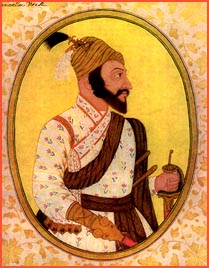 Shivaji's
mission was not parochial; he was no mere conqueror, or Maratha
imperialist. His was the cause of Hindu freedom and Hindu
civilization. According to the Adnapatra,
the aim of Shivaji was that 'all people be free from trouble and
should follow the path of Dharma.' In the traditional Hindu
manner, he assumed the role of the Protector; the title of Chhatrapati
(lit. lord of the umbrella), which he chose, was
symbolic of this. He regenerated the Marathas...He rescued
Dharma, established gods and
Brahmins in their places.." Shivaji's
mission was not parochial; he was no mere conqueror, or Maratha
imperialist. His was the cause of Hindu freedom and Hindu
civilization. According to the Adnapatra,
the aim of Shivaji was that 'all people be free from trouble and
should follow the path of Dharma.' In the traditional Hindu
manner, he assumed the role of the Protector; the title of Chhatrapati
(lit. lord of the umbrella), which he chose, was
symbolic of this. He regenerated the Marathas...He rescued
Dharma, established gods and
Brahmins in their places.."
His real nature is better brought
out by his submission to Ramdas and Tukaram, than by any of his
political adventures. Though he fought, all through his life,
against the imperial domination of the Mughals, he neither hated
Islam nor the Muslims, as such; he employed several of them in
important services.
Khwafi
Khan, the contemporary Muslim historian, has
testified with great candor that:
"He made it a rule that
whenever his followers went plundering, they should do no harm
to the mosques, the Book of God, or the women of any one.
Whenever a copy of the sacred Quran came into his hands, he
treated it with respect, gave it to one of his Mussalman
followers. "
(source: Our
Heritage and Its Significance - By Shripad Rama Sharma p.
138-139).
As Sir
Jadunath Sarkar (1870-1958) eminent historian, has well expressed:
"Shivaji proved, by his
example, that the Hindu race could build a
nation, found a
State, defeat its enemies; they could conduct their own defence;
they could protect and promote literature and art, commerce and
industry; they could maintain navies and ocean going fleets of
their own, and conduct naval battles on equal terms with
foreigners. He taught the modern Hindus to rise to the full
stature of their growth. He demonstrated that the tree of
Hinduism was not dead, and that it could put forth new leaves
and branches and once again rise up its head to the skies.
(source: Shivaji
and His Times - By Sir Jadunath Sarkar p. 406).
For on refer to chapter on Glimpses_VIII).
Life
in Ancient India
Mrs.
C. Speir wrote eloquently about India: in 1856:
"India,
the land of gold and sunshine, has ever been regarded as a
region of Romance. In the tales of our childhood magicians and
jugglers move amid scenes oppressed by the luscious scents, gay
with the flowers, and sparkling with the precious gems and
fabrics of India. In the classic pages, India is the mysterious
bourn to which point the fabulous expeditions of Bacchus and
Sesostrius; and when history emerges from primeval haze, we see
India as the gorgeous eastern boundary of Earth, where princes
enthroned on elephants offer tribute in solid gold. Nor is there
less romance in India’s natural history and geography; in the
golden ant-hills of Herodotus, in the tree he notes as
sheltering ten thousand troops, or his rivers too wide for the
eye to reach across. Romance is inherent in the country,
steeping even the science, meta-physics, and mythology of this
wonderful country in its rainbow-tinted hues."
(source: Phases
of Indian Civilization: A Historical and Cultural Outline - By
C. Speir p. 1-3). For
more refer to chapter on Greater
India: Suvarnabhumi and
Sacred
Angkor
Top
of Page
Churches for
Sale or Rent
Introduction: Christians find
themselves with a surplus.
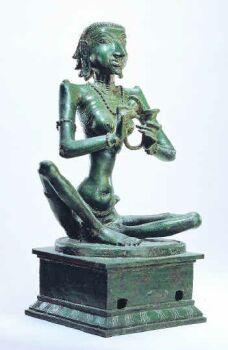 Hindus in India are astounded
when they hear that one or another temple in America or
England has bought or rented an unused Christian church. The
Church of England has so many unused facilities that they have
a web site, http://england.anglican.org/rcsale/redchhome.html
to solicit “successful and sympathetic conversions of and
uses for redundant church buildings.” Since the 1960s, the
Church has put to new use about 1,500 buildings, and has a
fairly constant listing of 20 to 25 more available each year. Hindus in India are astounded
when they hear that one or another temple in America or
England has bought or rented an unused Christian church. The
Church of England has so many unused facilities that they have
a web site, http://england.anglican.org/rcsale/redchhome.html
to solicit “successful and sympathetic conversions of and
uses for redundant church buildings.” Since the 1960s, the
Church has put to new use about 1,500 buildings, and has a
fairly constant listing of 20 to 25 more available each year.
While the site lists “places
of worship for other Christian bodies” as the first
“suitable new use,” several have been turned into Hindu
temples. They include the Shri Sanatan Mandir in Leicester and
the Sanatan Deevya Mandal in Bristol. In the US, the Ganesha
Temple in Flushing, New York, was begun in a church, later
torn down to build a traditional temple. Such conversions of
use have a distinct advantage to Hindus because religious
services are already an “established use” under zoning
regulations, avoiding the often very lengthy process of
obtaining new zoning permission. But-most of the buildings
currently listed on the Church of England's site have a
distinct disadvantage for Hindus-they are surrounded by
graveyards, something put as far from a temple as possible in
India.
(source: Hinduism
Today January / February / March 2003). Watch
An
Invasion through Conversion
- videoyahoo.com
Top
of Page
Universal
Unity of Mankind
Lord Krishna says:
“I am the Self, O’Gudakesa,
seated in the hearts of all beings; I am the beginning, the
middle, and also the end of all beings.”
He further explains: “Whatsoever is the seed of all beings
that am I, O’Arjuna! There is not a single moveable or
immoveable being, which can exist without Me.”
Over and over again He insists on the importance of the unity
of the Self and of the presence of the Self in each and all.
All human relations exist because of this unity, as Yajnavalkya
explained to his wife Maitreyi
when she prayed of him the secret of immortality: "Behold!
Not indeed for the love of the husband is the husband dear, but
for the love of the Self is the husband dear. All are dear
because the One Self is in all."
(source:
The Wonder That Is Hindu Dharma - By
Ram Chandra Gupta p. 223-224).
Top
of Page
The trauma of
the 1947 partition cataclysmic events of August 1947
Remember the partition of India in
1947. It brought untold suffering and unprecedented humiliation
in its train. Men, women and children were given a profuse blood
bath when we were gloating over our bloodless revolution.
A glorious dream of independent, happy India, born out of love,
goodwill and brotherhood, a dream nurtured for generations was
blown to pieces because of religion. The work of Mahatma Gandhi
and all the great patriots of this country was destroyed in no
time. Therefore, one must be extremely careful in determining
the place of religion vis-a-vis the nation.
Even after Independence the
problem of religious minorities continues to be one of the most
vexing and intriguing problems of contemporary India. The
temperament of the people of the country, and the trauma of
India's partition contributed to the thinking of the Constituent
Assembly on religious minority groups. There are elaborate
articles on "minority rights" ensuring
freedom of religious beliefs; in fact in no other constitution
have the minorities had it so good as in ours. One might even
call India a paradise of minorities. Yet, in no other
country the religious groups have made such a serious
encroachment on the happy, harmonious national life as in India.
(source: http://www.hindubooks.org/Retrospect_of_Christianity/ch2.htm).
In defense of
Hindutva
Cho
Ramaswamy is well known for his satiric humor. He was recently
asked an hair-raising question in 'Thuglak'
In
his famous work, 'Glimpses of World History', Jawaharlal Nehru
wrote to the same effect by attributing India's integrity to
some 'invisible silken bond' that from time immemorial has
united the people of India from Kanyakumari to the Himalayas. There
is no such thing as an invisible silken bond that unites India.
Such vague reasons, especially from a self-proclaimed agnostic
like Nehru, hide the real fact that the integrity of India
really springs from the sole reason of India being the sacred
land of tolerant Hindus who, despite the language, caste and
other differences among them, take pride in being, first and
foremost, devout followers of ancient Hindu religion.
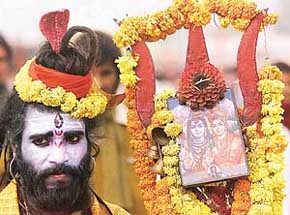 It
is the de facto 'Hindutva' among Indians, from north to south
and east to west, which lies at the root of the Indian
integrity.
But for the tolerant Hindu majority,
India would have disintegrated long back. It is for
this realistic reason that BJP has been striving hard to put 'Hindutva'
above the foreign concept of secularism that can only damage
Indian integrity in the long run. 'Hindutva' embraces Indians of
all faiths and excludes none. It also stands for eradication of
the scourge of untouchability that is an embarrassment to Hindu
religion. It
is the de facto 'Hindutva' among Indians, from north to south
and east to west, which lies at the root of the Indian
integrity.
But for the tolerant Hindu majority,
India would have disintegrated long back. It is for
this realistic reason that BJP has been striving hard to put 'Hindutva'
above the foreign concept of secularism that can only damage
Indian integrity in the long run. 'Hindutva' embraces Indians of
all faiths and excludes none. It also stands for eradication of
the scourge of untouchability that is an embarrassment to Hindu
religion.
All
attempts in the past to break up India on the grounds of race or
religion died a natural death. For instance, the formation of DK
and DMK was originally intended to pursue the goal of an
independent Dravida Nadu which floundered at the very start
since there were no takers for the same in Andhra, Karnataka and
Kerala. The so called 'Khalistan' movement engineered by
Pakistan met with the same fate. The insurgency by the rebels in
Nagaland and Mizoram that was fuelled by the mischievous foreign
missionaries in India has had little success. In all such cases,
it is the 'Hindutva' spirit that won the battle against
separatist tendencies.
'Hindutva'
is not anti-Muslim or anti-Christian. If there is one religion
in the world that abhors proselytization and is based on
tolerance and respect for other faiths, it is Hinduism. The
term Hindu fundamentalism is therefore a misnomer and a
contradiction in terms. There were no non-Hindu minorities in
India prior to the Muslim invasion of India from the north west
and the start of British colonialism which alone are responsible
for creating the Muslim and Christian minority in India through
conversion of Hindus by force and enticement. Despite the above
fact, 'Hindutva' does not consider Indian Muslims as some aliens
from Saudi Arabia or other Muslim countries in the Middle East.
It recognizes that India is as much the home of the Indian
Muslims as it is for the majority Hindus.
(source:
In
Defense of Hindutva - By Cho Ramaswamy).
For more refer to Call
For An Intellectual Kshatriya
- by
Rajesh Tembarai Krishnamachari.
Watch
An
Invasion through Conversion
- videoyahoo.com
Top
of Page
The splendid
capital of Emperor Chandragupta Maurya
We must draw even more on our
imagination if we are to conjure up a picture of Chandragupta
Maurya's capital, Pataliputra,
the foundations of which were excavated outside the gates of
Patna, the present capital of Bihar: fragments of pillars from a
great hall, a few palisades and other finds are all that remain
of the splendid capital which the Greek ambassador Megasthenes
described.
The
palace with its gilded pillars stood in a magnificent park in
which peacocks and pheasants roamed, meals were served in huge
golden dishes, and the king would appear, surrounded by a highly
colorful retinue, in a golden litter or enthroned on an
elephant.
(source: India
- By Martin Hurlimann p. 224).
Top
of Page
Mother
Teresa - The Final Verdict
by Aroup Chaterjee
Mother Teresa
issued thousands of disclaimers about any knowledge of politics,
but even a casual look at her career would make one wonder if
she 'doth protest too much.'
On an
international level, Mother Teresa's political agenda were
narrow - the 'politics' of human reproductive intervention and
Catholicism. In India however, she often involved herself with
less subtle and more raw politics.
On the issues of abortion,
contraception and Catholicism, she found her political allies in
a particular spectrum in the political arena, who are most
vociferous in the United States. Indeed, her biggest political
allies were also in this country, as were her most powerful
financial backers. Not all her political friends were Catholics,
and some - like Ronald Reagan - are sturdy Christians from other
denominations. Without actually giving an overt call to the
American people to vote Republican, she made it very clear -
especially by meeting Republican hopefuls before elections - who
she supported. When the Republican presidential nominee Bob Dole
was once challenged by his own party over his anti-abortion
credentials, he invoked the Teresa card, saying that he had been
endorsed by Mother Teresa. After Mother Teresa's death, there
remained in the small coterie of the pope's closest circle other
ultra-orthodox stalwarts like Cardinal O'Connor of New York (now
deceased), Cardinal Sin of Philippines and Cardinal Ratzinger.
Ratzinger, who was also close to Mother Teresa, cannot tolerate
other religions - he recently called Buddhism
'auto-erotic'. He also excommunicated his own priest, Tissa
Balasuriya of Sri Lanka, whose crime it was to portray the
Virgin Mary in a robust, unorthodox light. Ratzinger heads the
Congregation for the Doctrine of Faith (CDF), the successor to
the Holy Office of the Inquisition. In this all male,
chauvinistic, women-unfriendly club Mother Teresa was made
welcome, because her views were identical to those of the male
members. She was their most effective ambassador. Indeed, this
supremely feminine wispy nun clad in a saree was regarded an
honorary man by the Vatican inner circle.
Mother Teresa took a keen
interest in the complex political processes of India; she allied
herself with the political party which she felt was friendliest
to Catholicism. This she felt was the Congress party, of the
Nehru-Gandhi dynasty. Mother had a personal relationship with
Indira Gandhi, and her ties with the Gandhi family became
stronger after Mrs Gandhi's son Rajiv married the Italian
Catholic Sonia.
(source: Mother
Teresa The Final Verdict - by Aroup Chatterjee - http://www.meteorbooks.com/chap10.html).
Watch
An
Invasion through Conversion
- videoyahoo.com
Top
of Page
Don't
put them in convents: Hindu Munnani
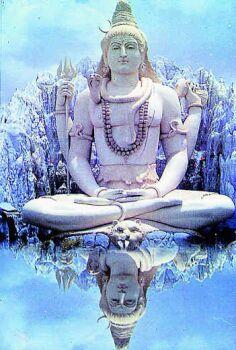 As
Christian institutions have protested against the State
governments anti-conversion law, children should not be sent to
convent schools, Rama Gopalan, convenor, Hindu Munnani, has
said. As
Christian institutions have protested against the State
governments anti-conversion law, children should not be sent to
convent schools, Rama Gopalan, convenor, Hindu Munnani, has
said.
In convent
schools, children were preached on Christianity and this would
result in conversion to Christianity and as a precautionary
measure parents should not send their children to such
institutions.
In
Tamilnadu, people were still being converted to Christianity and
we all should come together to fight against these Christian
institutions, he said.
A
yagna was performed at A K R Marriage Hall at Virugambakkam here
yesterday by Hindu Annayar Munnani, affiliated to Hindu Munnani.
A special pooja was conducted by women who lit 1008 kuthuvillaku. Participating
in the yagna, Rama Gopalan said, we should pray to God to bring
peace in the world and join together to build Ram Temple at
Ayodhya. We should also oppose the governments stand to build a
dam at Kasi and join together to prevent cow slaughter.
The
anti-conversion law is a boon to the people of the State and we
should be thankful to the government, he said.
Sri
Jayendra Saraswathi Swamigal of Sri Kanchi Kamakoti Peetam
attended the yagna and said it would help in bringing peace in
society.
(source: Don't
put them in convents: Munnani
- Newstodaynet.com). Watch
An
Invasion through Conversion
- videoyahoo.com
Top
of Page
India's
pluralist ethos
Regarding the Hindutva overtones,
whether one likes it or not, it has
been a Hindu nation, it is so even now and will
remain
so; not because the Hindu religion is in a majority, but the
ethos which has shaped our nation has come to identity itself
with Hinduism. Hinduism is nothing but a
geographical-cum-cultural concept. The
Church of England is the official religion
of the U.K. The U.S. President-designate has to swear by the
Bible and in 1983 the American Senate unanimously voted to
celebrate 1984 as Bible Year. Yet we do not hold them
as fundamentalists because they only conform to the ethos on
which these nations were evolved. Though it is only 50 years
since we got political freedom, it is a fact that both the
fundamentalists and the secularists alike boast of a history of
at least 5,000 years.
In our
case it is the Vedas, the Upanishads and the epics which have
shaped the ethos on which this nation is evolved. For
those who think that the word "Hindu" is religious and
is of a recent origin, let me quote from Agama
Purana: Himaalayam samaarabhya / Yaavad Indu
sarovaram / Tham deva nirmitham desom / Hindustaanam
prajakshatheth.
It means, "This God's own
land which extends from Himalaya to Indu sea is called
Hindustaanam." Still, the son of this soil,
irrespective of his religious belief, finds it difficult to call
himself a "Hindu." The fault lies in our education
system.
The Vedas and the Upanishads have
nothing to do with the Hindu religion. They only expound the
theories of the existence of the world and the do's and don'ts
for the creatures living in it. We just cannot wish away the
fact that everything that we consider
our contribution to mankind lies in Sanskrit. Until and unless
we, learn that language how can we come to know the greatness
and pitfalls of our tradition?
As Max
Mueller, the propagator of the Aryan invasion theory,
wrote to his wife, "It took only 200 years for us to
Christianise the whole of Africa, but even after 400 years India
eludes us, I have come to realize that it is Sanskrit which has
enabled India to do so. And to break it I have decided to learn
Sanskrit." The soul of India lies in Sanskrit. And Lord
Macaulay saw to it that the later generations are successfully
cut off from their roots.
(source: Assaulting
India's pluralist ethos
- by D. Harikumar The Hindu).
For
more refer to chapter on Greater
India: Suvarnabhumi and
Sacred
Angkor. Watch
An
Invasion through Conversion
- videoyahoo.com
Top
of Page
Panini
methodology for secret defence codes
The ministry of defence is working
towards developing secret codes using Sanskrit,
making it the first serious effort to prevent the language from
becoming redundant.
The
'Panini methodology' of the language is going to be used to
develop a system of coding network, that is expected to be
extremely useful in keepingthe information under wrap. In his
work Ashtadhyayi, that covers the entire literature in Sanskrit,
Panini had used a method of coding so that maximum could be said
in a little space.
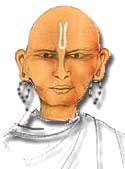 This
method has its base in two steps and involves a combination of
4000 sootras. Firstly, a sootra once used in his work is never
repeated, and is replaced by a code. For example, if the word
'method' is used once, one can only write 'm' instead of writing
the whole word, although it is not that simple, says Dr Prakash
Pandey, assistant director for research and development,
Rashtriya Sanskrit Sansthan. This
method has its base in two steps and involves a combination of
4000 sootras. Firstly, a sootra once used in his work is never
repeated, and is replaced by a code. For example, if the word
'method' is used once, one can only write 'm' instead of writing
the whole word, although it is not that simple, says Dr Prakash
Pandey, assistant director for research and development,
Rashtriya Sanskrit Sansthan.
Secondly,
Panini created situation-based principles, termed adhikar
sootras, for coding, and they had to be changed after a few
hundred words. Like, if at any place one encounters the letter
'a' preceding the letter 'd', it should be read as 'e' and not
as 'a'. This principle will apply to the next 200 words and,
thereafter, a new principle will take over for the same
situation, making it impossible to comprehend.
This
can really solve many problems that the ministry of defence
faces due to unreliable coding systems. Union home secretary N
Gopalaswami had announced that a software firm in Bangalore had
been asked to develop a coding system after studying the
methodology used by Panini, informed Dr Pandey.
Moreover,
a speciality of this ancient language is the possibility of
exact translations. Sanskrit is the
only language in the world in which all the languages can be
translated, without changing the meaning. The
Brahmi lipi in Sanskrit is based on triangles which are modified
to form different letters or signs. Work is going on
to try and make a software or even try and make a new system,
which does not rely on the ones and zeroes principle, but is
based on this sign system, according to Dr Pandey. It will be a
revolution if this research is successful as it will open a
plethora of possibilities.
(source:
Panini
methodology for secret defence codes - Timesofindia.com).
Top
of Page
Bhagavad Geeta
in hotel rooms in India?
Staying at Hotel? Check if they
have a copy of Holy Geeta.
Whenever you visit any hotel
please check whether it has a copy of Holy Geeta. I visited
Hyderabad on work and found that the hotel
kept only the Bible. The owner a Hindu did not even
know about it. For starters the hotel will now keep a book
titled 'In Indian Culture - Why Do We' by the Chinmaya Mission.
(source: Indiacause.com - by
Sanjeev Nayyar).
Top
of Page
Making India a
superpower?
When
India attained freedom, it thought of emerging as a global
leader, without becoming a global power. Its claim to leadership
rested on the age-old Indian, value of universal tolerance,
peace and happiness. But the post-war World afflicted by cold
war had no reverence for such high values. So India was swiftly
marginalised in a World which respected only power.
But,
within India, the Indian leadership did the other way round - it
persuaded the people not to pursue their age-old values, but,
accept the Anglo-Saxon ideas and institutions in the main. It
folded back the philosophic lead shown by Gandhi, Aurobindo, and
Tilak.
Their definition of the Indian identity was substituted by the
western ideas of secularism and socialism. Since
then, for over four decades, the Left-Socialist parties and
intellectuals mounted a vicious attack on the Indian past,
and virtually delinked the Indian polity, economy, history and
education from its past and turned to Anglo-Saxon values.
Because of this drift to the Indian intellectual, India's past
became a burden - and ceased to be matter of pride.
National
Pride and self-confidence:
Again
what India and Indians critically need is a measure of national
pride and self-confidence. Without both, no nation can prosper. It
is unfortunate that the English-educated Indians have repeatedly
failed to generate personal or national self-confidence.
Instead, they began to depreciate everything Indian. In
the process, they depreciated each other resulting in all-round
self-depreciation.
(source:
Looking
to the future: Making India an economic super-power - by S.
Gurumurthy).
Top
of Page
Nationalism and The Christian Church - Fear of Hindu Nationalism?
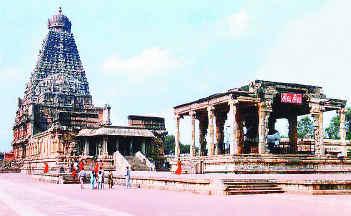 Religion holds a people together. Besides religion there is
yet another binding force which holds a people together more
closely. It is the spirit of nationalism which in depth is the
inborn longing of the human heart to be free. The Hindu has
always been a nationalist. He has always loved, adored and
worshipped his Motherland more than his worldly mother. However,
for a pretty long time attempts have been made – overt and
covert – to destroy the Hindu nationalism. The enemies of the
Hindu will die his own death. And no one has tried to kill and
destroy the nationalism of the Hindu more than the Christian
Church and the Christian colonizers. Religion holds a people together. Besides religion there is
yet another binding force which holds a people together more
closely. It is the spirit of nationalism which in depth is the
inborn longing of the human heart to be free. The Hindu has
always been a nationalist. He has always loved, adored and
worshipped his Motherland more than his worldly mother. However,
for a pretty long time attempts have been made – overt and
covert – to destroy the Hindu nationalism. The enemies of the
Hindu will die his own death. And no one has tried to kill and
destroy the nationalism of the Hindu more than the Christian
Church and the Christian colonizers.
After they lost their colonies the
Christian colonizers under went complete metamorphism.
They turned champions of human rights, of freedom of
expression and of liberty of conscious. They became liberals and
progressives though at heart they remained what they have been.
One of them, a Hindu converted to Roman Catholicism and who, at
one time, was the blue eyed boy of the Church gave his verdict
thus :
“Speaking for ourselves, our loyalty to our Master (Jesus
Christ) comes first, our loyalty to our Motherland, second. We
are first Christians, then Indians.” Another
Christian missionary was more emphatic. In his opinion
nationalism had been the undoing of Christianity in mission
lands. According to him: “ ….the
surrender of the Church to the rising powers of nationalism is
the major betrayal of Christ.”
That there exists close nexus between international
Christianity and Christian imperialism needs only little
explaining. Both want and try to defeat, and if possible to
expurgate, the Hindu of his nationalism so that it might become
the easier to destabilize Hindustan. In a study covering
“major forces affecting human developments in India and
Pakistan” its author, W. Norman Brown,
an American, has very significantly given away a secret. He
said:
“Colonialism is on the way out, but whenever we appear to
be on its side, we strengthen communism by throwing it and
nationalism (of the Indians, the Hindus) into alliance.”
Christian colonialism bolstered and boosted by Christian
imperialism and capitalism has already successfully humbled
communism. Its next and big target is Hindu’s nationalism
which manifests itself in its determined opposition to
Christianism in any form or disguises.”
(source:
The
Hindu - By K V Paliwal and B. Datt Bharti p.95-97 and The
United States, India and Pakistan - By W. Norman Brown.
Foreward). Watch
An
Invasion through Conversion
- videoyahoo.com
Thus, for the
Macaulayists-Marxists Missionaries-Madarsas, the
Indian nationhood with pride in its culture and heritage is
their biggest enemy. They have been trying all these
years to dilute the intensity of Indian nationalism. They tried
to divide the Indian society on the basis of religion, language,
and caste in a bid to weaken national solidarity. For them every
divisive idea is a weapon to disintegrate Indianness.
Only in a fragmented, weakened society, can they hope to advance
their agenda. All efforts and programmes that strengthen Indian
nationhood and create a sense of pride in India's heritage is an
anathema to them.
(source: The
tirade against NCERT – A Conspiracy - By
D.
P. Sinha).
For
more refer to chapter on Greater
India: Suvarnabhumi and
Sacred
Angkor
Top
of Page
The
Sarasvati for a river grid
The
grand plan that hundreds of scientists and engineers are working
on is a two-part one, according to Kalyanaraman. At the heart of
the plan is the perennially water-rich Brahmaputra, which, from
time to time, devastates the Northeast States and, as the Padma,
Bangladesh. Linking the Brahmaputra to the Kaveri - and possibly
even to the Tambraparni and thence to Kanniyakumari - is the
first part of the plan. This will solve the water-related
problems of the East, the Deccan and the South, state the
planners. The second part of the plan calls for linking the
Ganga to the resurrected Sarasvati to provide the north-western
desert with perennial water.
As
for the legendary Sarasvati, to which the Vedas devoted 72
slokas against just one for the Ganga, its entire course of 1600
km from Manasarovar in Tibet to Somnath in Saurashtra, has now
been re-discovered and mapped. And with that
discovery, the river can be revived and linked to both the
Indira Gandhi Canal and the Ganga to make the desert bloom,
states Kalyanaraman. The rediscovered Sarasvati is a bonanza to
not only hydrologists but also to archaeologists. The great
civilisation nurtured on its banks and mentioned in the
Mahabharata is no myth; over 2000 archaeological sites have been
found on the river's banks and scores of them are being worked
on, says Kalyanaraman. There are, I am told, over 12,500
satellite images of the 6 km wide river and its banks now
available, showing a wealth of information about a river, which
could make India never again food-short.
(source:
The
Sarasvati for a river grid
- Hinduonnet.com).
Top
of Page
Globalization is one way street?
For instance BBC and CNN etc., always mention 'Indian
Controlled' or 'Administered' Kashmir. We need to mention in our
TV about 'London controlled' Ireland or Wales or Scotland and
also 'Washington controlled' Texas, since lots of Texans are not
particularly happy with Washington.
India controlled Kashmir? vs ‘London controlled Ireland?
Top
of Page
Calcutta
digs up a 2000-year history
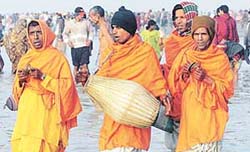 Traces
of an urban settlement over 2000 years old have been found under
the mound on which Robert Clive built his house on the northern
outskirts of Calcutta. Traces
of an urban settlement over 2000 years old have been found under
the mound on which Robert Clive built his house on the northern
outskirts of Calcutta.
At
the site in Dum Dum, the Archaeological Survey of India (ASI)
has discovered materials that suggest the existence of a
settlement of the Sunga Kusana period dating back to 2nd Century
BC, where people lived continuously for centuries without any
significant break.
The
second phase of the excavations by the ASI between December 2001
and April-May 2002 yielded “amazing results”, says Bimal
Bandyopadhyay, superintending archaeologist, ASI, Calcutta
Circle.
The
excavations had started in June 2001. Going deeper, the ASI
found Sunga Kusana period materials at
least 2,200 years old.
A
conclusion can be drawn from these discoveries that thriving
urban centres, not just jungles and marshy land, existed on the
peripheral zones of the city long before Calcutta came up, says
Bandyopadhyay.
The
site was occupied in two phases from 2nd Century BC with
continuous occupation up to 11th-12th Century AD. After a short
gap, it was further occupied during 15th-16th Century AD up to
modern times.
There
were terracotta plaques displaying figures of Yakshinis and
materials of a later period such as divine and semi-divine
figurines, numerous punch-marked and cast copper coins datable
to the same period. The most remarkable find is a miniature icon
of Mahishasuramardini carved out of stone and datable to
9th-10th Century. Historian Dilip Biswas said: “This is not
surprising. The river was highly navigable and foreign ships
sailed down regularly. The Greeks write of a port named Gange.
The two sides of the Ganga are archaeologically very rich. A
Gupta gold coin was discovered near Kalighat. Unfortunately,
systematic excavation of this area has never been done.”
(source:
Calcutta
digs up a 2000-year history - telegraphindia.com).
Top
of Page
Makar
Sankranti and Pongal
Makar
Sankranti marks the beginning of Uttarayan, the Sun's northward
journey. Makar is called Capricorn in the western
astrological calendar. Makar Sankranti falls on 14th of January
every year. The day and night on Makar
Sankrant are of exactly of equal hours. This day is
observed as the most auspicious day by the Hindus all over the
country. In the south, it is known as Pongal
 Makara literally means
'Capricorn' and Sankranti is the day when the sun passes from
one sign of the zodiac to the next. The Sankranti of any month
is considered auspicious as it signifies afresh start. However
Makara Sankranti is celebrated in the month of Magha when the
sun passes through the winter solstice, from the Tropic of
Cancer to the Tropic of Capricorn. This feast is celebrated on
January 14th, and is the only feast of the Indian calendar which
is not celebrated on a fixed day of the lunar month. Makara literally means
'Capricorn' and Sankranti is the day when the sun passes from
one sign of the zodiac to the next. The Sankranti of any month
is considered auspicious as it signifies afresh start. However
Makara Sankranti is celebrated in the month of Magha when the
sun passes through the winter solstice, from the Tropic of
Cancer to the Tropic of Capricorn. This feast is celebrated on
January 14th, and is the only feast of the Indian calendar which
is not celebrated on a fixed day of the lunar month.
On this day the sun enters the constellation of Makar (Croco-dile)
and begins to move towards the north. Throughout the year the
sun passes through twelve constellations: Mesh (Ram, Aries),
Vrishabh (Bull, Taurus), Mithun (Couple, Gemini), Kark (Crab,
Cancer), 5mb (Lion, Leo), Kanya (Girl, Virgo), Tula (Balance,
Libra), Vrishchik (Scorpion), Dhanu (Bow, Saggitarius), Makar
(Crocodile, Capricorn), Kumbh (Wateijar, Aquarius), Mm (Fish,
Pisces). When the sun does not cross any constellation then
there is an extra month called “Adhik Mas”. The crossing of
the Makar constellation takes place in the month of Paush.
“Tilgul”, Symbol of
Friendship
On this day people eat “Khichadi” made of rice and dal. The
Paush month is also known as Dhundhur Mas and people eat
“bajari” bread mixed with “til” (Sesamum). On the feast
of Sankrant “til” is given great importance, for in this
season it is considered to have special nutritive and medicinal
qualities. “Til” is a very oil-giving seed. Mixed with
jaugari or sugar it becomes a very sticky sweet which people
exchange with one another as a sign of friendship. “Tilgul
ghya, god bola.” (“Take tilgul and speak sweetly”) is the
phrase on everybody’s lips. With this good social custom
enmities are forgotten and new friendships started. People are
encouraged to emulate the quality of “Tilgul” and stick to-gether
in permanent union and love. On this day ladies apply
“halad-kumkum” (turmeric powder) on each other’s forehead,
and children fly kites. Many people take bath at Prayag, near
Allahabad, at the meeting point of the Ganges and the Yamuna.
Makara Sankranti is also celebrated throughout India as a
harvest festival. It is a way of giving thanks to the elements
of nature that help man. This is the period when the winter
recedes, paving the way for the summer. It is the time the
farmers bring home their harvest. In the coast al regions, it is
a harvest festival dedicated to Indra. In Tamil Nadu and Andhra
Pradesh, it is celebrated as a three-day harvest festival Pongal.
In Assam, the festival is celebrated as Bhogali Bihu, and in
Punjab it is called Lohri. A big fair is held at the confluence
of the Ganga, the Yamuna and the Sarasvati rivers at Triveni in
Allahabad (Uttar Pradesh) on this occasion. Being the month of
Magha, this fair is also called Magha Mela. Apart from Triveni,
ritual bathing also takes place at many places like Haridvar and
Garh Mukteshwar in Uttar Pradesh, and Patna in Bihar. Since it
is also the season to fly kites, the evening sky is awash with
colourful kites of all shapes and sizes. Several kite
competitions are held in various localities.
(source: Makar
Sankrant).
Top
of Page
India
is One
“This admixture of races,” says Cyril
Edwin Mitchinson Joad (1891-1953)
English philosopher “has had important effects on India’s past history and
present outlook. The first of these is a sense
of fundamental unity far more vivid and persistent
than can be accounted for by the circumstance of propinquity in
the same geographical area. Europeans live together in a
geographical area whose size is not very different from that of
India. But as the wars which have disgraced European history in
the past and the quarrels and rivalries that enfeeble the League
of Nations in the present only too clearly show, that the
inhabitants of Europe are very far from being imbued with the
sense of unity which distinguishes the inhabitants of India. We
cannot, in short, speak of a “European” with the same
appropriateness as we can speak of an “Indian,” who, in
spite of differences of color, caste and creed, looks upon all
other Indians as his fellow-countrymen and upon India as his
home.”
(source:
The Vision of India - By Sisirkumar
Mitra p. 51).
Top
of Page
Modernization
in India
In
India, modernization still means primarily westernization,
not only in socio-political institutions but quite
comprehensively. India seems to aspire towards western modes of
thought in education, research and management, and towards
industrialization according to the procedures and developments
of western sciences and technology, western social values and
goals, and western institutions of government, information and
warfare. No doubt, all of these institutions, procedures and
modes of thought are quite modern within the western world.
Arising out of the western soil, they are likely to be more in
tune with the western soul. However, either owing to military
and economic pressures or because of the seduction of progress
and success, these modern western values and aspirations have
been adopted by the whole world.
From India’s
point of view, the initiative for any change or innovation has
been outside her borders and control for two hundred years or
so. What is true of India is, of course, true of what westerners
and following them now most Indians call Hinduism; for Hinduism
without India is an abstraction, as is India without Hinduism.
(source: Yoga
and The Teaching of Krishna - By Ravi Ravindra
p.
20-21).
Top
of Page
Legendary
tolerance of Hinduism
The inherent tolerance of the
Hindus, an integral part of their ethos, is well accepted. The Jews, the
Parsis, the Syrian
Christians, and the Buddhist
Tibetans had to
flee their own land because of persecution by the Christians,
the Muslims, the other Christian sects, and the communists,
respectively. It was only amongst Hindus that they were able to
survive - not only in terms of keeping their own faith alive,
but also in material terms.
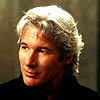 On December 19, 2002, the
Hollywood actor, Richard Gere,
a former Methodist, during his visit to India, said: On December 19, 2002, the
Hollywood actor, Richard Gere,
a former Methodist, during his visit to India, said:
"No nation has helped the
Tibetans more than India. Its contribution remains unparalleled,
as the displaced people have not only been able to rebuild their
monastic institutions but have also prospered materially."
(source: sifynews.com
However, Hindus have resisted
those who came here with an intention of destroying their
culture and civilisation. The interface of Islam and
Christianity in Indian history can be said, at the very least,
to have been architecturally and spiritually harmful on a fairly
vast scale. This is a continuing story, with the threat still
persisting. Because of strong resistance, Hinduism today is the
oldest surviving civilization.
(source: The
Foreign Exchange of Hate: IDRF and the American Funding of
Hindutva - by Ashok Chowgule - sulekha.com).
Top
of Page
Desi
secularism
Take, for instance, conversions:
They cause social tension and mutual distrust. Take the attitude
that if Hindus do something, that should be condemned, but if
Muslims do it, it should be overlooked. Or that if the VHP says
something, that is wrong, but if the Imam of the Jama Masjid
says something, that is OK. A film or a book that offends Hindus
is alright, but one that offends Muslims must be banned. Post-Godhra
riots are condemned but not train burning at Godhra.
We must stop thinking in terms of
majority and minority. The majority will take care of the
minorities; the minorities, in turn, must respect the majority.
There must be give and take and mutual respect. No government
can expect to leave out a section of the people and rule. The
minorities have an equal place in India; indeed, it is not the
minorities who are at fault, but the pseudo-secularists who want
to consolidate their vote banks.
Hindu-bashing must end.....
It
is the same mindset which holds that popularising Urdu is
"secular" but revitalising
Sanskrit is "communal" since it implies the
"imposition of Hindutva." The double standard is thus
self-evident.
Top
of Page
Indologists
urge studying past
When
the West tries to study and understand the past, it is termed
Renaissance, whereas when the same is done in India, it is
called revivalism and an attempt to rake up the past,
said Motilal Banarasidass Publishers chairperson Rama Ranjan
Banerjee on Saturday.
“People
often say studying the past is a waste of time. What they do not
understand is that studying is not going back in time. It is
necessary to understand who we are,” Mukherjee, a former
professor of Sanskrit at Jadavpur University said.
Sanskrit
scholar and former chancellor of Tirupati Sanskrit University
Sitanath Goswami regretted the increasing western influence on
teaching in schools and colleges.
He
said India’s contribution to the sciences, philosophy and
literature was being overshadowed. “Students
know more about Galileo and Copernicus than about Aryabhatta.
Few know that Bhaskaracharya worked with calculus almost five
centuries before the west discovered it,” Goswami said.
To
build awareness on India’s contribution, more than 100
seminars on Vedic mathematics has been held across the country,
Goswami said.
(source:
Indologists
urge studying past -
timesofindia.com - Friday April 4 2003). For
more refer to chapter on Greater
India: Suvarnabhumi and
Sacred
Angkor
Top
of Page
Lack of Pride
in being Indian?
Adam
Osborne (1939
- 2003) who launched the world's first portable computer
in a suitcase well ahead of IBM and other PC makers. He
is the guy who invented the first microcomputer bus called
S-100. He's one of the two that started Apple computers. He was
the director of Silicon Valley Technologies and publisher of a
monthly newsletter "From the Fountainhead. He said:
 "I
was raised in Tamil Nadu in South India, in the ashram of Sri
Ramana Maharishi, of an English father and a Polish mother. Both
were dedicated followers of Sri Ramana Maharishi.
Therefore as a child growing up in the small town of
Tiruvannamalai, Tamilnadu. I was fluent in Tamil and was
surrounded by Indians who were proud of their nationality and
heritage, and believed they had a lot to teach us Europeans. "I
was raised in Tamil Nadu in South India, in the ashram of Sri
Ramana Maharishi, of an English father and a Polish mother. Both
were dedicated followers of Sri Ramana Maharishi.
Therefore as a child growing up in the small town of
Tiruvannamalai, Tamilnadu. I was fluent in Tamil and was
surrounded by Indians who were proud of their nationality and
heritage, and believed they had a lot to teach us Europeans.
I still speak enough Tamil to get
by, and feel that my roots are indeed in India. I must be only
professed "vellackaaren" (white) Tamilian in America.
After all, how could anyone, even an English boy, grown up in
Tiruvannamalai, in the ashram of Sri Ramana Maharishi, and not
acquire a pride in his roots?
It
is therefore with some misgivings that today I find myself
dealing with Indians, many of who do not feel proud of their
Indianness. Indian Americans represent
the most affluent minority in America, ahead of Jewish Americans
and Japanese Americans. This is a statistic and not an opinion.
Indians swarm all over the Silicon valley, where they are an
integral part of most product development teams: be they teams
developing new semiconductor chips, software packages or
computers. Indians are recognized throughout America as
technically superior. No Indian in America has to explain his
educational background, or apologize for his technical training.
And yet, as a group, though Indian Americans are quick to
acknowledge their caste, religion or family, they lack national
pride. Indians are not proud of their nationality as Indians,
something I realized many years ago. Recently, talking
before Indian audiences on the lecture circuit, I have
frequently talked to Indians of their lack of national pride,
with telling results. Invariably, after making this assertion
from the lecture podium, I find myself surrounded by Indians:
Engineers, Scientists, doctors, even lawyers, all asserting the
correctness of my observations, "You are correct,"
they will assert. "I am not proud that I am an
Indian." Is the reasons India's colonial heritage? Who
knows? But whatever the reason, it is a pity.
Since
the day Indians learn pride, India will rapidly move out of its
third world status to become one of the world's industrial
powers."
(source:
http://www.geocities.com/rajeevgm/iu_index.html).
Moved
for India he swears: "I will return to India, to preach
Indian pride. I will preach that Indians must learn to be proud
of being Indians.....irrespective of their race or
religion."
National
pride is thus equally the winning formula in trade wars as in
actual wars. No amount of foreign investment is substitute for
that. Will our elites who undermine the pride of Indians day
after day realise Adam Osborne's prescription for them? For two
reasons, I have quoted Adam Osborne. One, as he is a White man,
his words are important to the Indian elite who want validation
from the west. Second, as he sought
solace in India, his words are important to me.
(source:
But
that was not just what Adam Osborne was - By
S Gurumurthy).
For
more refer to chapter on Greater
India: Suvarnabhumi and
Sacred
Angkor
Top
of Page
Church the 2nd
biggest land-owner in all of India
Tens of billions of dollars worth of land in India is
owned by the Church, and in Mumbai, the Church is the second
largest land owner, the largest being the Indian military. Most
of this land was given under land grants by the British to the
Church, and by subsequent Indian governments. Such
generosity to a minority religion followed by only 2.5% of the
Indian population has gone unreported. Given
the foreign controlled nexus of the various Churches, this is
tantamount to giving billions of dollars to subsidiaries of
foreign entities that are engaged in social re-engineering of
Indian society. The US government has never contemplated such
generosity towards minority religions, especially those
controlled from overseas.
(source: The
Axis of Neocolonialism - by
Rajiv Malhotra - sulekha.com).
Watch
An
Invasion through Conversion
- videoyahoo.com
Top
of Page
Joint
families are planet-friendly: Scientists
To
some, the great Indian joint family
is tiresomely traditional, hopelessly outdated and irretrievably
on the decline, but Western scientists say it may actually be a
hugely 'green' or eco-friendly institution.
And while we are on the subject, divorce is bad for the
eco-system as well.
Not to speak of the new urban trend from Mumbai to Madrid of
leaving mum and dad to live alone. The startling new arguments
are newly published in Britain's Nature group of publications.
They are part of a study that says the modern trend for a
decreasing number of generations to live under one roof is
damaging the environment. It says split families and fragmented
households may be more damaging than simple population growth.
(source:
Joint
families are planet-friendly: Scientists - timesofindia.com).
Top
of Page
Christian
terrorism in the North east
Lot of people are aware about the
Islamic Terrorism in Jammu and Kashmir, but how many are aware
about the Christian Terrorism in the North-East India?
With the support of Christian Missionaries, terrorist
organisations like NLFT and NSCN are spreading terror in parts
of North-East India to convert the whole of North-East states to
Christianity at gunpoint. NSCN has already succeeded in Nagaland
to convert masses to Christianity and asking "Nagaland
for Christ" and still fighting for a greater
Nagaland called Nagalim, with the adjoining
districts of other Indian states. NLFT
is in process of having a repeat of NSCN in Tripura.
(source: Christian
terrorism in the North east ).
Watch
An
Invasion through Conversion
- videoyahoo.com
Top
of Page
It’s
conversion time in Kashmir Valley
After Hindu have fled the
valley, slowly and discreetly, Christian evangelists make
inroads into Muslim heartland of Kashmir
Srinagar,
April 5: Amid booming guns and endless violence, Kashmir is
witnessing a discreet spurt in conversion — from Islam to
Christianity. Christian groups are putting the number of
neo-converts at over 10,000 and a Sunday Express
investigation confirms that conversions have been taking place
regularly across the Valley.
At least a
dozen Christian missions and churches based in the US, Germany,
the Netherlands and Switzerland have sent evengelists to the
Valley and are pumping in money through intermediaries based in
New Delhi. In
the Valley where death and trauma are a way of life, the
missionaries are getting immediate attention because they reach
out to the poor, needy and those affected by violence. Also,
they bring in a lot of money.
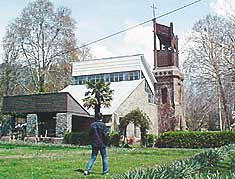 The
native Christians are increasingly getting vocal against the
outsiders. ‘‘This type of conversions aren’t good for
local Christians who had shared a cordial relationship with
Muslims here for centuries. The conversions they are doing are
Bibilically wrong. There are umpteen cases in which one person
has been baptised thrice within a few months. These so-called
evangelists have set up businesses in the garb of Church and
social work,’’ says Pastor Leslie Richards, a native
protestant living in Braen, Srinagar. ‘‘The converts here do
it for monetary reasons and the people who convert them too do
it for the same reasons,’’ he adds. The
native Christians are increasingly getting vocal against the
outsiders. ‘‘This type of conversions aren’t good for
local Christians who had shared a cordial relationship with
Muslims here for centuries. The conversions they are doing are
Bibilically wrong. There are umpteen cases in which one person
has been baptised thrice within a few months. These so-called
evangelists have set up businesses in the garb of Church and
social work,’’ says Pastor Leslie Richards, a native
protestant living in Braen, Srinagar. ‘‘The converts here do
it for monetary reasons and the people who convert them too do
it for the same reasons,’’ he adds.
Christianity
Today, a magazine, puts the number of Kashmiri Muslims who
recently converted to Christianity at thousands. An article,
Harassed Kashmiri Christians Reach out to Discreet Muslims,
posted on their website Christianitytoday.com reasons:
‘‘Wearied by violence, thousands are interested in the
Prince of Peace. They have faith in Jesus but don’t come out.
Their number goes into thousands in the rural areas.’’ The
estimates pieced together by the evangelists here say the number
of converts to Christianity touch 12,000 in the Valley.
The founder
of Agape Mission, Pastor Neethi Rajan, a Hindu convert from
Chennai, says, ‘‘God spoke to me clearly and asked me to go
to Kashmir.’’ Determined to spread the Gospel among
Kashmiris, Rajan says as long as people are not exploited,
spreading the message of Christ isn’t wrong. ‘‘Thousands
of people have accepted Jesus as their saviour and many more are
showing interest across Kashmir. There’s nothing wrong in
preaching the Gospel,’’ says Rajan. Asked
about the source of funds, Rajan says friends help him out.
Insiders, however, say he is linked to Assemblies of God, a
US-based mission.
Though many
organisations say they are interested in social work and not
conversions, an investigation across the Valley confirmed
conversions. Among the churches and missions that have set up
bases are US-based German Town Baptist Church, US-based
Frontiers, a mission with an avowed aim to reproduce churches
among unreached Muslim people (www.frontiers.org) and Assemblies
of God. They have funded around a dozen churches and missions in
Kashmir. Two German-based missions, Call of Hope and Overseas
Social Service, have a base with over 60 evangelists. Another
mission, The Campus Crusade for Christ, with bases in the West
has a strong network of evangelists among the students in the
Valley.
The
Switzerland-based mission, The Good Way, has a base in rural
Kashmir. Two Indian missions, National Missionary Intelligencer
and Cooperative Outreach of India, too fund evangelists here.
The focus of evangelical work is mostly in rural Kashmir and
areas bordering Srinagar. Cooperative Outreach of India (COI), a
Delhi-based NGO that works among the lepers and downtrodden in
Srinagar, makes no bones about the source of funding. Insiders
say COI receives funds from the German Town Baptist Church, one
of the wealthiest Protestant churches in Tennesse, US,
Frontiers, another US mission and Call of Hope, a mission based
in Germany. The director of the COI, Remesh Landge — who
was recently in the Valley to give away sewing machine to lepers
— admits that they receive money from Churches overseas.
(source:
It’s
conversion time in Kashmir Valley - indianexpress.com).
Watch
An
Invasion through Conversion
- videoyahoo.com
Top
of Page
Muslim
inscribes Bhagavad Gita on copper
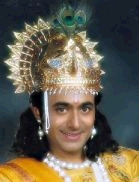 Jameelbhai
Rangrez, the son of a grocer from Jalgaon, was regarded as a man
of more than modest means. With two autorickshaws, a couple of
shops and even an Ambassador car to his name, the trader from
Nashik led a placid yet content life. Then one day, Jameelbhai
says, he discovered the Bhagawad Gita. Jameelbhai
Rangrez, the son of a grocer from Jalgaon, was regarded as a man
of more than modest means. With two autorickshaws, a couple of
shops and even an Ambassador car to his name, the trader from
Nashik led a placid yet content life. Then one day, Jameelbhai
says, he discovered the Bhagawad Gita.
Today, he is at the end of an arduous spiritual journey during
which he has exhausted all his savings, liquidated his assets
and even incurred the wrath of his own family members. But the
man has realised his dream of engraving all 18 chapters of the
Bhagavad Gita on copper plates at a stiff cost of Rs 2.28 lakh.
Jameelbhai says he embarked on what became a monumental task on
the advice of his guru, Musababa Ashrafi. It was the Baba who
asked him to do something that would stand the test of time and
from which society at large would benefit.
"I started reading holy books of
different religions and when I came across the Bhagavad Gita, I
was fascinated by its philosophy," he says,
"Especially Lord Krishna's exhortation that even one's
blood relations should not come in the way of doing
justice."
That was the time when Jameelbhai had already started inscribing
the Quran on copper. But he was so moved by the teachings of the
Gita that he put the Quran plates aside and started work on the
Hindu text. Starting out on Gokul Ashtami last year, he
completed engraving over 60 plates on March 30 this year.
Regarding his personal faith, he says he's crossed the barriers
of religions and would not like to be confined to any single
creed. "It is more important to become a good human
being" he says.
(source: Muslim
inscribes Bhagavad Gita on copper -
newindpress.com).
Top
of Page
Golden
Quadrilateral highway
The Golden Quadrilateral highway
project. In a giant public works project reminiscent of the
1950s U.S. efforts, the government has embarked on three large
highway building efforts: 1. The Golden Quadrilateral connecting
Bombay, Delhi, Kolkata and Chennai 2. The North-South corridor
connecting Jammu & Kashmir to Kanyakumari 3. The East West
corridor connecting Gujarat to Assam. The GQ project is moving
ahead steadily, by rapidly converting existing highways into six
to eight lane expressways. Amazingly, the date of completion has
been pulled in by one year, to late 2003.
(source:
Looking
Back at 2002 - By Rajeev Srinivasan).
Top
of Page
Lord
Krishna ‘spreads AIDS” says American missionary
The real story behind the attack on US Missionary Joseph
Cooper, who was injured and operated upon, is somewhat different
from what was reported.
The attack was made by the relatives of a Dalit woman Sali
who was raped by one Benson Sam and his close relatives some
months back at a Bible college at Sreekaryam, some 10 km from
here. Unable to bear the pressure at Sreekaryam, Benson Sam has
come here at Kilimanoor and the attack was actually meant on
him. The Missionary however bore the brunt of the attack. The
areas in and around south Kerala are a hub of missionary
activities and some eight months ago another foreign missionary
was attacked by the locals for allegedly passing derogatory
remarks about Lord Ayyappa.
As for Joseph Cooper, according to the local people who
inhabit areas in and around this dalit hamlet at Kilimanoor, he
was reported to have talked of Lord Krishna as the one who had
spread AIDS. This may have provoked the locals
against Cooper.
This dalit colony is highly religious. Just after their
Bhajans and other religious ceremonies, the Missionaries had
allegedly made derogatory remarks against the Gods that the
locals worship, which might be another reason for the attack on
the missionary.
The State Organising secretary of the Vishwa Hindu Parishad
Kummanam Rajashekharan, while talking to this correspondent over
phone said that "We demand the arrest of the American
Missionary. He is here on a visitor
Visa. How can he indulge in religious preaching?"
(source: Was
attack on US missionary a case of mistaken identity? -
dailypioneer.com). Watch
An
Invasion through Conversion
- videoyahoo.com
Top
of Page
Mindless
attack on Gandhi
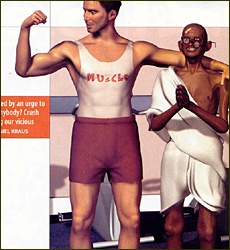
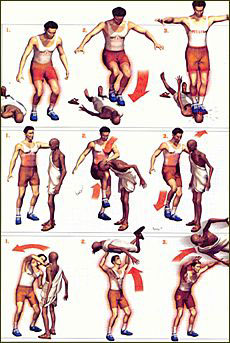
"Muscle"
T-shirt beating up an image of Mahatma Gandhi
It
is ironic that while India is observing the martyrdom of the
Father of the Nation, certain US publications and TV channels
are ridiculing Mahatma Gandhi. An article in the latest edition
of Maxim, a lifestyle magazine,
depicts a strapping man in a “Muscle” T-shirt beating up
Gandhi. The article calls for “a healthy regimen of violent
assaults” and urges readers to “teach those pacifists a
lesson about aggression”. The three-page article includes 21
illustrations of the strapping man hitting, choking, kicking and
throwing Gandhi. The magazine had gone after Gandhi in November,
2000, also when in an article headlined “Oh, Calcutta: Three
Reasons to Hate Gandhi” had described him as a “lousy
husband”, a “rotten father” and a “horrible role
model”.
Its licentiousness becomes all
the more odious in today’s context because, as Mr Michael
Matsuda, chairperson of the Orange County Asian Pacific Islander
Community Alliance in California, says, after the September 11
terrorist attacks in the USA and with the anti-war
movement, this article is telling people to beat the crap out of
Asians and pacifists. It is thus fanning the flames of hatred
and bigotry. The Indian community in the USA is scandalised.
(source: Mindless
attack on Gandhi
- tribuneindia.com and IndiaCause.com).
Top
of Page
Transmigration
of the Soul
Transmigration of soul (atman) is at the bottom of Hindu
(Vedic) Dharma and he or she alone is a Hindu who accepts and
believes in this phenomenon.
Dr.
S. Radhakrishnan points out that the doctrine of
rebirth has had a long history even outside India. Among the
Greeks, it found a place in the Orphic religion, it was believed
in by Pythagoras, Plato and Empedocles,
and later by Plotinus and
the Neo-Platonists. Among
the Hebrews, it is found in the writers
of the Kabbala, and among the Muslims, in the Sufi
writers. In ancient Britain the Druids taught it, as we see from
Caesar's account of them. Within the Christian Church, it was
held by some Gnostic sects
and the Manicheans. And as
for individual writers who believed in the doctrine, mention may
be made of Origen, Brunco, Von Helmont,
Swedenborg, Lessing, Herder and
MacTaggart. The Theosophists teach it now.
The
doctrine of rebirth, says Radhakrishnan, is more reasonable than
the denial of rebirth. The way of
Nature is one of continuity. The goal of perfection
cannot obviously be reached in one life. And the capacity of the
self for endless improvement points to an unbroken future. Life
in a particular body is, therefore, only an episode in the
larger career of the individual soul.
That the soul (atman) takes on new bodies necessarily leads,
as a corollary, to the Karma theory which again is a Hindu
belief but not a basic Hindu belief. Karma theory is a direct
offshoot of the phenomenon of transmigration of soul.
Transmigration of soul leads to Karma theory. The
Hindu Law of Karma is not so much a principle of retribution as
of continuity. It should not be confused with either
a hedonistic or a judicial theory of rewards and punishments, in
the shape of pleasure or pain. The law is both prospective and
retrospective. It asserts both the creative freedom of man and
his continuity with his past.
The Hindu believes that unlike his or her body which is
perishable atman is permanent, perennial, and imperishable. It
dies not and is neither born nor destroyed. He believes that it
is the atman that lends the perishable body its capacity to act
and become a doer of things.
The Hindus are now the only people
whose religious belief is centered around transmigration of
soul. It would, however, be wrong to presume that no
other people ever subscribed to this phenomenon. The Phoenicians
and the Egyptians believed long ago in this phenomenon. So
did Pythagoras: “With respect to man, the doctrine
of Pythagoras was that known by the name of Metempsychosis, that
the soul after death rested a certain time till it was purified,
and had acquired a forgetfulness of what had previously happened
to it; and then reanimated some other body.” Again:
“Empedocles, the Sicilian,” agreed with Pythagoras in his
belief in the metempsychosis.”
Gautam Buddha accepted
the theory of birth-death-rebirth and likewise the Sikhs too
accept the phenomenon of transmigration and birth-death-rebirth.
 Dr. Ian Stevenson,
professor of Parapsychology at the Univ. of California first
came to India in 1961 to investigate cases of reincarnation and
since then has been frequent visitor because he has found a
large number of cases of reincarnation in India. Dr. Ian Stevenson,
professor of Parapsychology at the Univ. of California first
came to India in 1961 to investigate cases of reincarnation and
since then has been frequent visitor because he has found a
large number of cases of reincarnation in India.
He delivered a lecture “Scientific Investigation of
Reincarnation Phenomena at the Max Muller Bhavan in New Delhi in
1922. In the course of his lecture, he made the following
remarks:
“British paid little attention to Hinduism.” “The are
“abundance of cases in India” or reincarnation. He found
“over 300 cases in India.” “Reincarnation is the best
explanation.”
Thus it proves, as far as it is possible within limits, that
reincarnation is a valid explanation, the Hindus call it
transmigration of soul-coming-going and coming again.
(source:
The
Hindu - By Krishna Vallabh Paliwal and Brahm Datt Bharti p.. 63-64 and Hinduism Through the
Ages - By D S Sharma p. 241-242).
Top
of Page
The Myth of
Saint Thomas and The Mylapore Shiva Temple
According to Christian leaders in
India, the apostle Thomas came to India in 52 A.D., founded the
Syrian Christian Church, and was killed by the fanatical
Brahmins in 72 A.D. Near the site of his martyrdom, the St.
Thomas Church was built.
In fact this apostle never came
to India. The Christian community in South India was founded by
a merchant Thomas Cananeus in 345 A.D. (a name which readily
explains the Thomas legend).
In Catholic universities in
Europe, the myth of the apostle Thomas going to India is no
longer taught as history, but in India it is still considered
useful.
Koenraad
Elst in his book Negationism
in India: Concealing the Record of Islam, writes:
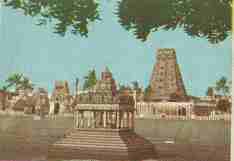 "In reality, the
missionaries were very disgruntled that the damned Hindus
refused to give them martyrs (whose blood is welcomed as “the
seed of the faith”), so they had to invent one. Moreover, the
church which they claim commemorates St.Thomas' martyrdom at the
hands of Hindu fanaticism, is in fact a monument of Hindu
martyrdom at the hands of Christian fanaticism. It is a forcible
replacement of two important Hindu temples (Jain and Shaiva)
whose existence was insupportable to the Christian missionaries.
No one knows how many priests and worshippers were
killed when the Christian soldiers came to remove the curse of
Paganism from the Mylapore beach." "In reality, the
missionaries were very disgruntled that the damned Hindus
refused to give them martyrs (whose blood is welcomed as “the
seed of the faith”), so they had to invent one. Moreover, the
church which they claim commemorates St.Thomas' martyrdom at the
hands of Hindu fanaticism, is in fact a monument of Hindu
martyrdom at the hands of Christian fanaticism. It is a forcible
replacement of two important Hindu temples (Jain and Shaiva)
whose existence was insupportable to the Christian missionaries.
No one knows how many priests and worshippers were
killed when the Christian soldiers came to remove the curse of
Paganism from the Mylapore beach."
The myth of St. Thomas is a
prototype of today's popular Jesus-in-India story. The myth was
invented by the Syrian Christians of Malabar and later taken
over by the Portuguese, and the Jesus story was promoted around
the beginning of this century by western spiritualists who also
paraded as historians of the arcane. The myth of St. Thomas is a
prototype of today's popular Jesus-in-India story. The myth was
invented by the Syrian Christians of Malabar and later taken
over by the Portuguese, and the Jesus story was promoted around
the beginning of this century by western spiritualists who also
paraded as historians of the arcane.
(source: The
Myth of Saint Thomas and the Mylapore Shiva Temple).
Watch
An
Invasion through Conversion
- videoyahoo.com
Top
of Page
India unveils huge
supercomputer
India
has launched an advanced supercomputer known as Param Padma.
The
move places India in a leading position in the field of
supercomputing, normally led by the US and Japan.
There
are plans to market the supercomputer internationally and build
on existing markets in Europe, North America and the Far East.
India
began developing supercomputers in the late 1980s after being
refused one by the US. Arun
Shourie, the information technology minister, said the
development of the Param Padma at the Centre for Development of
Advanced Computing (C-DAC) showed India's technological
capabilities.
The
advanced supercomputer was launched in the southern city of
Bangalore on Tuesday. The Param Padma has 1 teraflop of power,
which means it can make 1 trillion processes per second.
"It
could also be used for defence and space applications." The
thrust of India's supercomputing work, however, will be in areas
such as bio-technology, nanotechnology, weather forecasting,
climate modelling, seismic data processing and structural
mechanics.
India's
earlier version of the supercomputer 'Param 10,000' with 100
gigaflop (floating point operations per second) memory has been
sold to 8 countries including Russia, Canada, Singapore, and
Germany. India began developing a
supercomputer after being denied a Cray supercomputer by the
United States in 1987.
The
US decision was based on fears that it could be used for
military purposes.
(source:
India
unveils huge supercomputer - bbcnews.com).
Top
of Page
Hindutva: a
liberating or confining force?
Tectonic changes are taking place quietly in Hindu society and
hardly anyone seems to be aware of the phenomenon. For years the
revolt against secularism has been brewing with no one being any
the wiser for it. It started to explode during the agitation for
the take-over of the Ram Janmabhoomi site. Even political Hindus
who wouldn't have hurt a fly came to the conclusion that
something is basically wrong with the secularism as practised by
the Congress and the Left-leaning parties.
The Congress secularism aptly
described as ``pseudo-secularism''
stood exposed. Since then there has been no turning
back. Godhra was something waiting to happen. It merely
confirmed gathering Hindu opinion that there has to be a stop to
the enternal pandering to the Muslim electorate. What
subsequently happened was an explosion of long-pent up feelings.
No Narendra Modi, no L. K. Advani, no Sonia Gandhi, no
intervention of Armed Forces could have controlled the ire of a
frustrated people.
The feeling of revulsion against
secularism is so deep that it is unbelievable. What is happening
today is something that was unthinkable a decade ago. It is Hinduism
not just Hindutva resurgent. This resurgence needs to be
understood and properly canalised, not condemned or laughed at.
And this also be said: the more it is belittled and besmirched,
the more it is going to thrive.
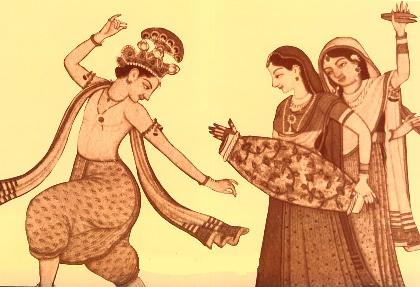
Our pseudo-secularists do not
know what force they are confronting, let alone understand its
significance. Never in the past has Hinduism been united. That
is happening now, right in front of our eyes. It is not going to
brook any insult and it is there to stay.
Our pseudo-secularists do not
know what force they are confronting, let alone understand its
significance. Never in the past has
Hinduism been united. That is happening now, right in
front of our eyes. It is not going to brook any insult and it is
there to stay.
Significantly it
is a force with a very positive content. It is by no means
anti-minority. That supercilious charge made by
ignoramuses cannot withstand scrutiny even for a will turn out
to be. Hindutva is going to release
forces that will take India to the pinnacle of glory.
Those with petty minds will continue to cavil. But they cannot
stop Hindutva's momentum which, like a mighty or oceanic wave
will sweep everything before it. There
have rarely been instances of Hindu resurgence in the past.
We are seeing one now in action.
And it is dazzling.
(source: Hindutva:
a liberating or confining force? - by MV Kamath -
samachar.com).
Top
of Page
Scramble for India
The clashes in India are not between
the Hindus and the Christians, but between the Christian
missionary activities and the Hindus who see it as an assault on
their culture and national identity. This is
aggravated by actions like John Paul II’s recent proclamation
in Manila: “ A great new harvest of faith will be reaped in
this vast and vital continent; “ and by Father Monanchin’s
Christianization of Indian civilization is to all intents and
purposes an historical undertaking comparable to the
Christianization of Greece.” Many Indians firmly believe that
the Vatican and other international organizations are on a
crusade to destroy the Indian Civilization – as happened to
the Greek 1500 years ago and to the Americas a thousand years
later.
The 19th century was dominated by European
colonialism, which became the vehicle for the expansion of
Christianity. Religion was a ruse. Christopher Columbus, the
Founder of European Colonialism wrote his patrons,
“Their Christian Majesties’ Ferdinand and Isabella of
Spain: “Your Highness have an Other World by which our faith
(Christianity) can be so greatly advanced and from which such
great wealth can be drawn…And I say to Your Highnesses ought
not to consent that any….who sets foot here (in America) who
is not a Christian Catholic since this was the end and the
beginning of the enterprise, that it should be for the
enhancement and glory of the Christian religion.”
Brahminism is the standard
missionary term for Hinduism meant to create divisions within
Hindu population.
***
The Vatican Agenda
The collapse of Christianity in the West has forced the
Vatican to look for new pastures in the East. India, in
particular. It is now making a desperate effort to convert the
Hindus, especially in rural and tribal areas. They see the
Hindus, because of their tradition of tolerance as a soft target
that is safe to convert by hook or crook. But their activities
are running into resistance from Hindus in Gujarat and also in
tribal areas of Orissa. The Vatican regards its missionaries as
‘Soldiers for Christ.’ It is an imperial movement whose goal
is to Christianize India, by destroying the Hindu Civilization.
Before the rise of Christianity, the
Pagan Greek Civilization, centered on the
Mediterranean Sea, gave the world a Golden Age. It produced
thinkers like Socrates and Plato, poets like Homer and Hesiod,
dramatists like Aeschylus and Sophocles, as well as scientists
like Ptolemy, Pythogoras and Euclid. The seat of this ancient
wisdom was destroyed by the rise of Christianity. Alexandria
used to be a great center of Platonic learning. One of the
greatest Neo-Platonic scholars was Hupatia, who used to teach at
the academy. A Christian monk named Cyril and a gang of
hooligans dragged her out of the academy and murdered her in
public. (Cyril is considered a saint and was named a ‘Doctor
of the Church’ by the Pope in 1882). Greece never recovered
from the disaster. The Vatican’s goal
is to repeat its ‘success’ in Greece in India by destroying
Hinduism. It was put in so many words by Father J. Monachanin, a
Catholic priest:
“India has received from the Almighty an uncommon gift, an
unquenchable thirst for whatever spiritual. From the Vedic and
Upanishadic times, a countless host of her sons and her
daughters have been great seekers of God…”“Communion with
Him and liberation from whatever hinders that realization, was
for them the unique goal.. Unfortunately, Indian
wisdom is tainted with erroneous tendencies and looks as if it
has not yet found its own equilibrium. So was Greek wisdom
before Greece humbly received its Paschall message of
the Risen Christ…” But once Christianized, Greece rejected
her ancestral errors..” (Greek Civilization was destroyed).
“Is not the message she (India) has to deliver to the world
similar to the message of the ancient Greece? Therefore the
Christianization of Indian civilization is to all intents and
purposes an historical undertaking comparable to the
Christianization of Greece.”
So, according to Father Monchanin, all India has
to do is allow her civilization to be destroyed by marauders in
the name of Christ – like classical Greek civilization. None
of this has to do with religion, much less spirituality.
(source: Christianity's
Scramble for India and The Failure of The Secularist' Elite - By
N S Rajaram Hindu Writers Forum 1999 New Delhi. p. 3-30).
Watch
An
Invasion through Conversion
- videoyahoo.com
Top
of Page
The
Lost Continent of Mu and India?
Mu, the
Motherland, a lost culture which was the center of civilization
some 25,000 years ago. In 1868, while serving with the British
Army as a Bengal Lancer in India, James
Churchward (1851-1936) became close friends with a
Hindu temple priest who taught him how to decipher numerous
stone tablets which had lain hidden for centuries in the temple
vaults.
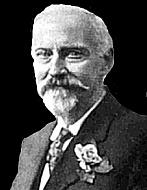 He
writes that he found the civilizations of the early
Greeks, the Chaldeans, the Babylonians, the Persians, the
Egyptians, and the Hindus had been definitely preceded by the
civilizations of Mu. Churchward also identified the
flying chariots mentioned in the Ramayana and Mahabharata as
early scientific wonders. The Continent of Mu in the Pacific was
almost completely sunk 60,000 years ago, with the Hawaiian
Islands and Easter Island being virtually the sole traces left
of it. He
writes that he found the civilizations of the early
Greeks, the Chaldeans, the Babylonians, the Persians, the
Egyptians, and the Hindus had been definitely preceded by the
civilizations of Mu. Churchward also identified the
flying chariots mentioned in the Ramayana and Mahabharata as
early scientific wonders. The Continent of Mu in the Pacific was
almost completely sunk 60,000 years ago, with the Hawaiian
Islands and Easter Island being virtually the sole traces left
of it.
He traced the
same story from Mu to India, where colonizers from the vanished
continent had settled; from India into Egypt; from Egypt to the
temple of Sinai, where Moses copied it; and from Moses to the
faulty translations of Ezra 800 years later.
There is
confirmation of Mu in other ancient manuscripts, including such
a classic as the Hindu epic Ramayana, written by the sage and
historian, Valmiki, from the dictation of Narana, high priest of
the Rishi temple at Ayodhya, who read the ancient temple records
to him. In one place Valmiki mentions the Naacals as “coming
to Burma from the land of their birth in the East,” that is,
in the direction of the Pacific Ocean.
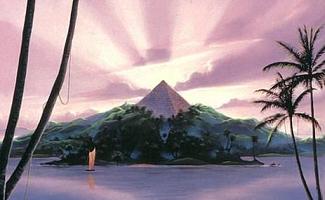
The Book of the
Dead is a sacred memorial, dedicated to the multitudes of people
who lost their lives at the destruction of Mu, the forefathers
of the Egyptians and all mankind. These are the “dead”
referred to. Upper Egypt was colonized and settled by Mayas from
India and when their settlement Maioo was firmly established, a
party of Naacals left India and went to Egypt.
(source: The
Lost Continent of Mu - By James Churchward p.
21-109). For
more refer to chapter on Greater
India: Suvarnabhumi and
Sacred
Angkor
Top
of Page
Iraq -
Creation of the Old Indian Army
The modern
state of Iraq is a creation of the old Indian Army. So we
can’t really wash our hands off the problem once Saddam
Hussein is gone. Originally referred to as the Mosul, Basra and
Baghdad Wilayats in the
Indian Army’s GHQ, the state was painfully put together
between 1918 and 1924 by the Indian political department under
Sir Percy Cox, albeit acting under the direct orders of
Whitehall. The danda was
provided by about 150,000 troops of the Indian Army, of whom
only about a half were combatants, the remainder being logistic,
maintenance and administration troops. Somewhere in the
background lurks the presence of Charles Greenway, later Lord
Greenway, the chairman of the Anglo-Persian oil company, at
whose instance it would appear Iraq, as a country, was created.
The
efforts made by the Indian political department to give Iraq a
modern civil administration will certainly rank among the great
post-war reconstruction stories, along with the
establishment of the allied government in post-war Germany and
the American-led Japanese Government in devastated Tokyo. At the
peak of the Indian administration in Iraq, there were 62
officers in the Accounts, Audit and Finance departments, 30 in
Agriculture, including cattle-breeding and poultry, 24 in
Customs, 34 in Education, 102 in Irrigation and Canals, 117 in
the Justice department, including 63 Qaidis, 84 in the para-military,
the Levies, Gendarmerie and Jails administration, 128 in the
Health and Hospital services, 39 senior nurses, 49 police
officers of the rank of ACP and above and (not surprisingly) 440
British civil servants and 460 Indian subordinate senior staff.
The list goes on to include 25 officers in the Port
administration, 60 in the Iraq P&T, 32 in the PWD, 82 to run
the Iraqi railways, 8 Newspaper Editors, 10 to establish
Iraq’s survey department and 6 Veterinarians. Try and match
that America!
But
more importantly, somewhere in the dusty files of the archives
in Delhi lives the institutional memory of this gigantic
effort at state-making.
(source:
How
India can help post-war Iraq - By Raja Menon -
Indian Express March 26 2003).
Top
of Page
 Did
You Know? Did
You Know?
Equal
before God
A Dalit
presides over the unique traditions of a Krishna temple in
Gujarat. Jhanjharka
town in Ahmedabad district of Gujarat is no place for prophets
of doom. They will find no stories of caste war and religious
hatred here.
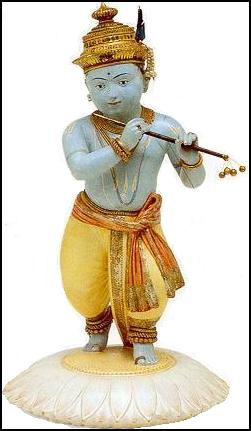 To
put it simply, Maharaj Baldevdasji, the resident priest of the
Krishna temple, is not a Brahmin. Defying
all tenets of Hindu tradition, the temple is headed by a Dalit.
Amazing, because untouchability still persists in rural Gujarat.
It is, therefore, an unusual sight to
see Brahmins, Rajputs, Banias and the powerful Patels
congregating at the temple and reverently touching Baldevdasji's
feet. There is no rancour here, just the simple
acceptance of the fact that for two centuries, the head priest
of the temple has been an untouchable. To
put it simply, Maharaj Baldevdasji, the resident priest of the
Krishna temple, is not a Brahmin. Defying
all tenets of Hindu tradition, the temple is headed by a Dalit.
Amazing, because untouchability still persists in rural Gujarat.
It is, therefore, an unusual sight to
see Brahmins, Rajputs, Banias and the powerful Patels
congregating at the temple and reverently touching Baldevdasji's
feet. There is no rancour here, just the simple
acceptance of the fact that for two centuries, the head priest
of the temple has been an untouchable.
And the feeling
has percolated down to other sections of Jhanjharka."Thanks
to the influence of the temple, this area is completely free
from caste discrimination," says Balwantsinh Jhala, a
Rajput farmer. "Baldevdasji is the spiritual guide for many
members of the upper castes." All manner of people come to
worship at the temple, and the poor never return without a good
meal. "We continue to hold the view that the way to God is
through the stomach of the poor and the hungry," says
Baldevdasji, whose forefather served God by feeding people seven
generations ago. Around 500 people have free meals at the temple
every day.
The Gujarati
New Year's Day, which falls on the day after Diwali, is an
especially happy occasion at Jhanjharka. For the 30,000 devotees
who flock to the temple that day, it is an experience in social
harmony. The celebrations may consist of Hindu
rituals, but it is a Muslim who kicks off the day's
proceedings. Rukmuddin Mohammad arrives at the temple
early in the morning with a band of Muslims and a troupe singing
bhajans. He is received at the gates by Baldevdasji.
After the welcome, Mohammad climbs up the flagpole in the temple
complex and hoists a white flag stamped with Islam's crescent.
Only then do other programmes follow. Acrimony between the
Hindus and the Muslims has not diminished the commonality that
these two have found in a temple. "For me it is a question
of faith and tradition. I am proud of it," says Mohammad.
(source: Equal
before God - by Uday Mahurkar India Today
November 10, 1997).
Top
of Page
|